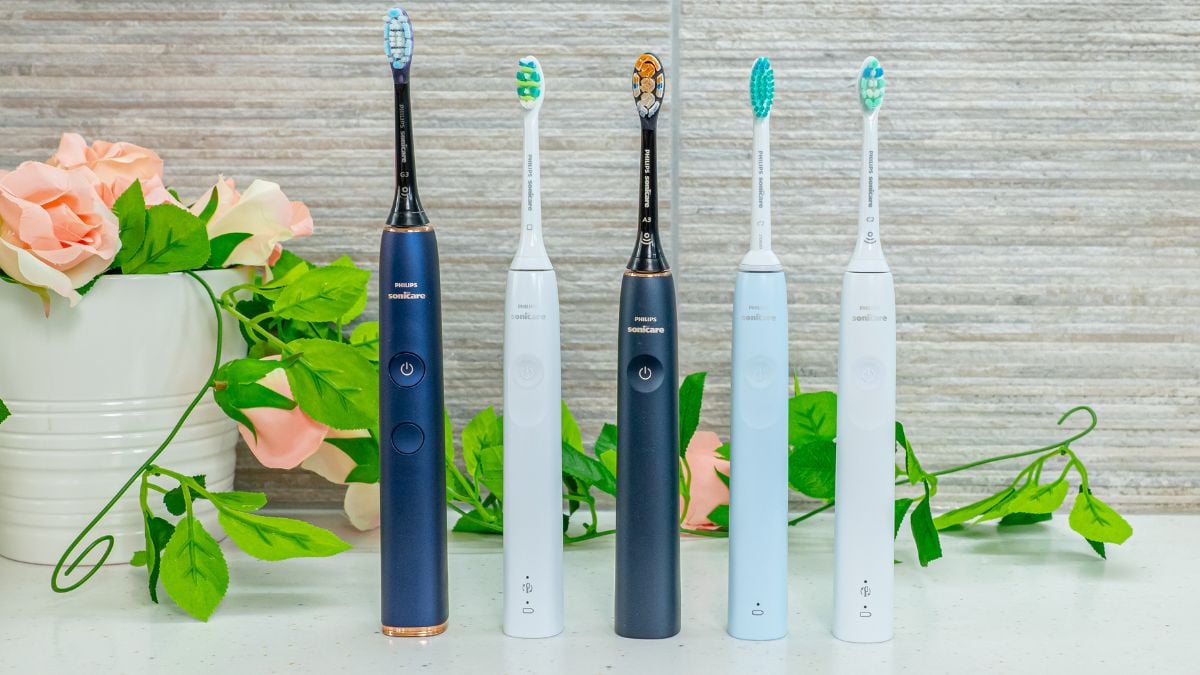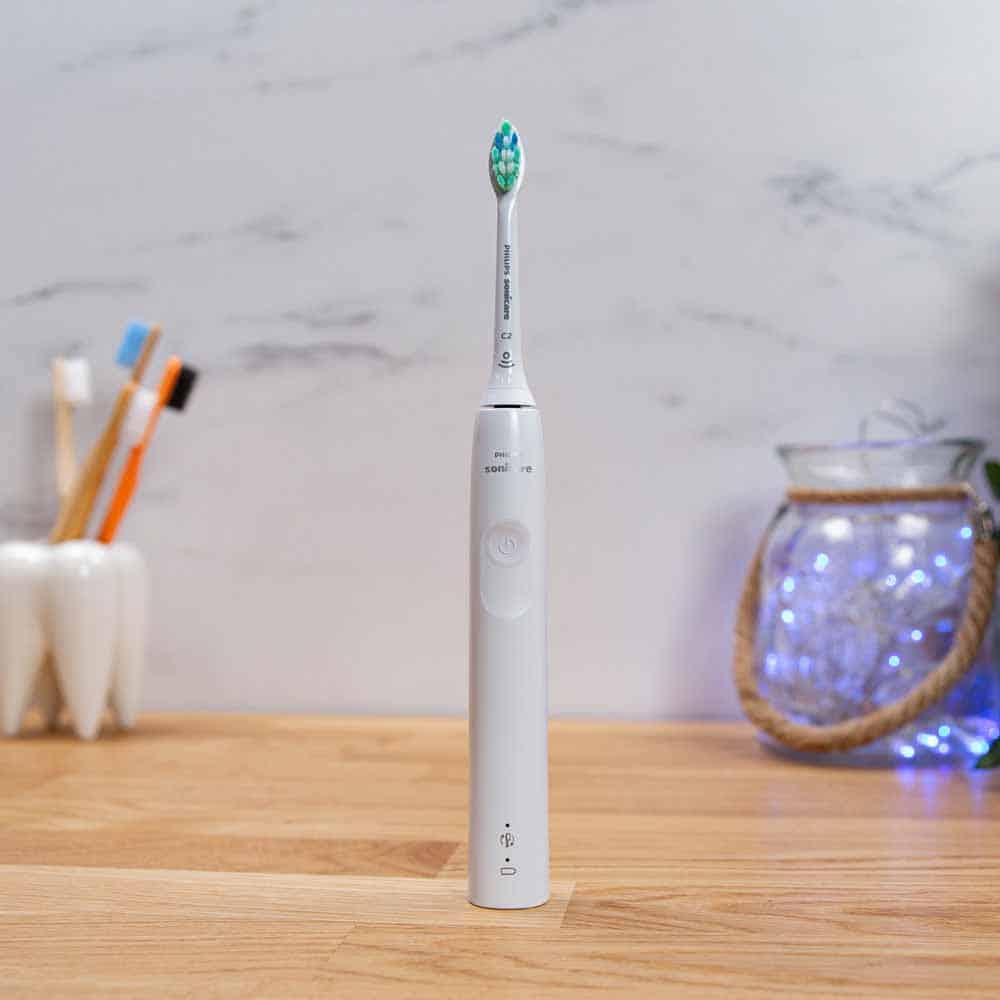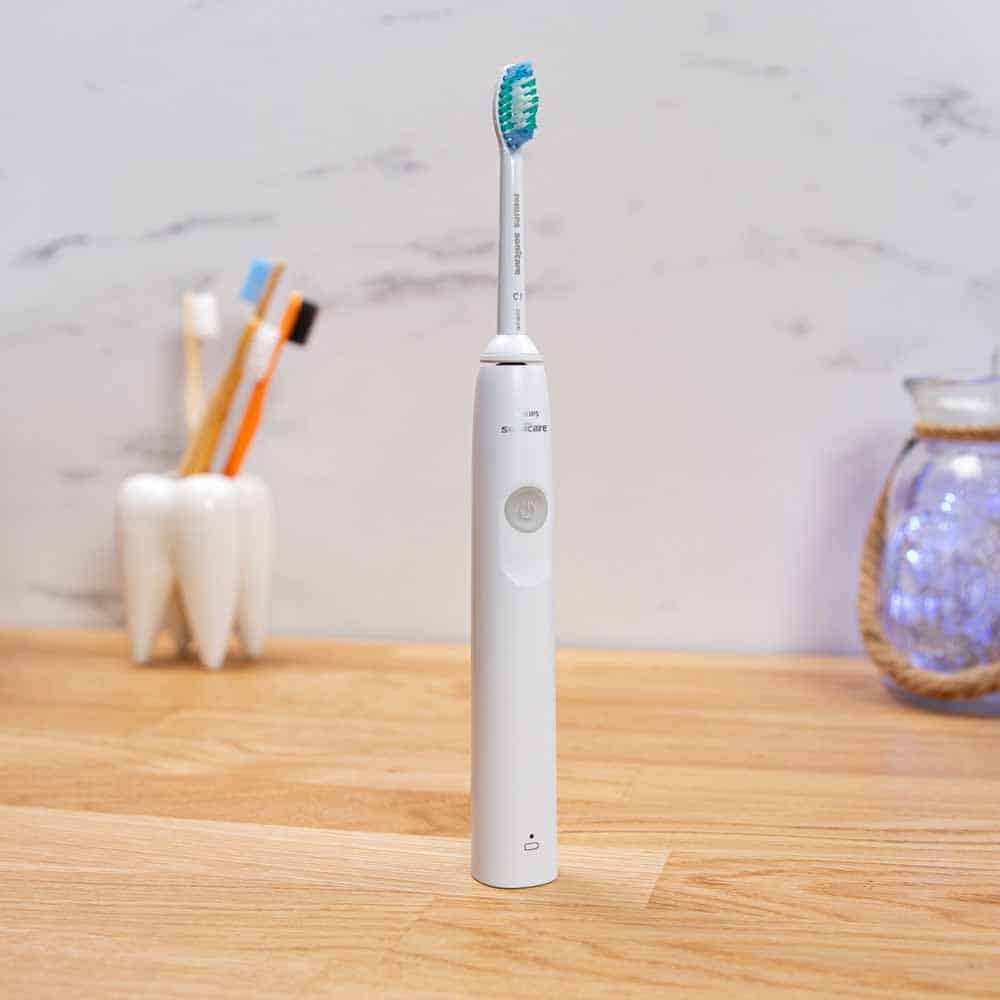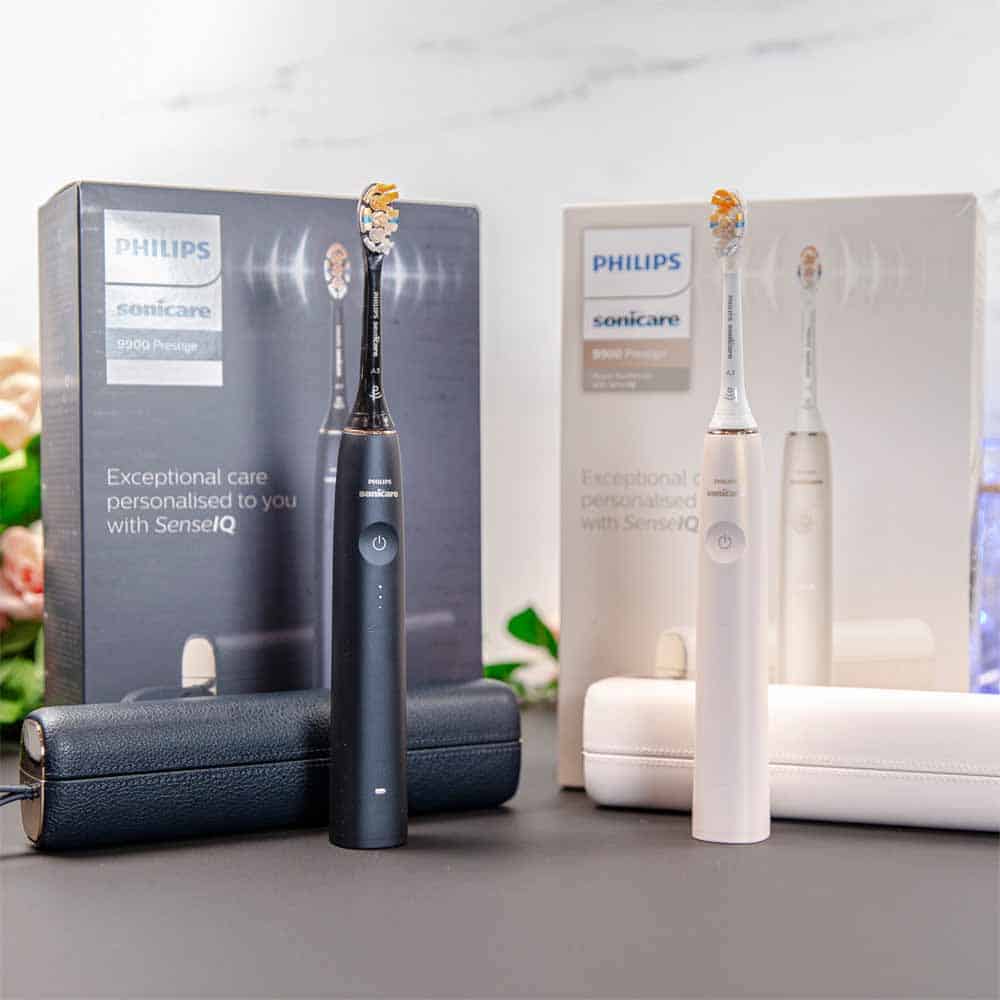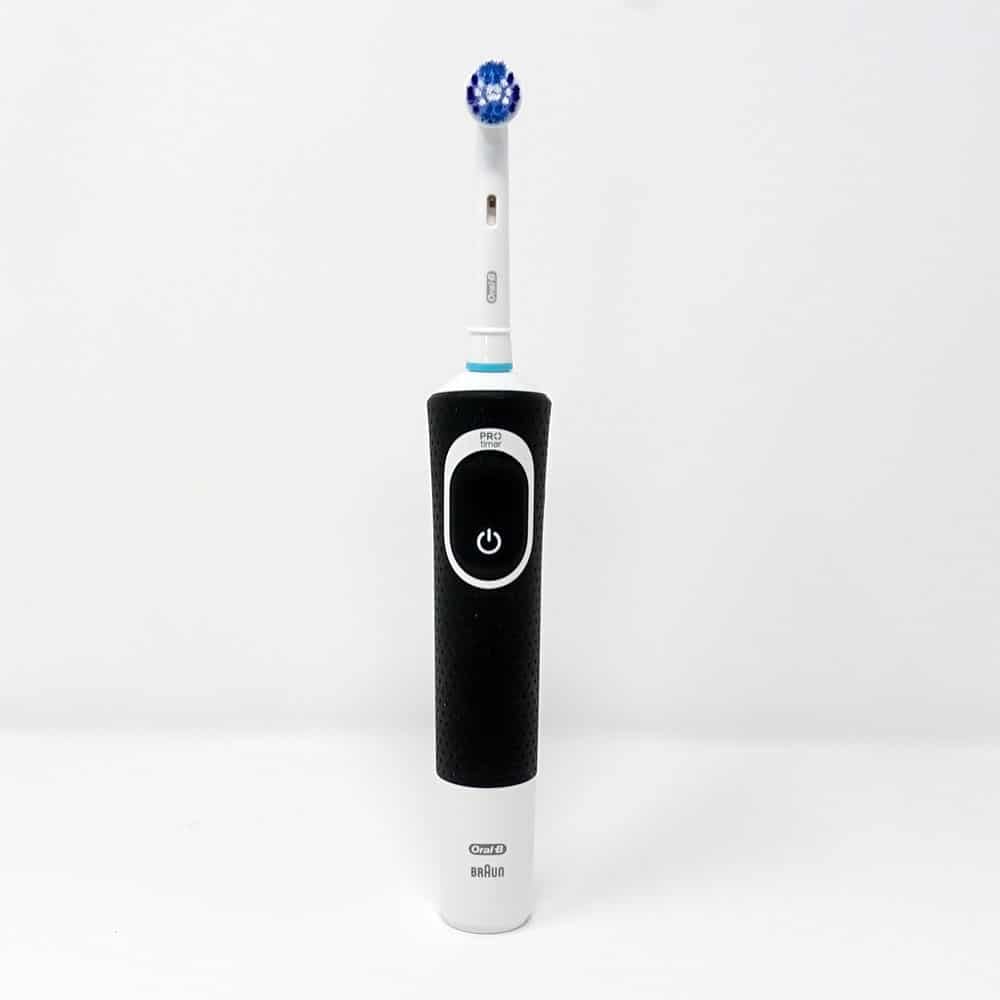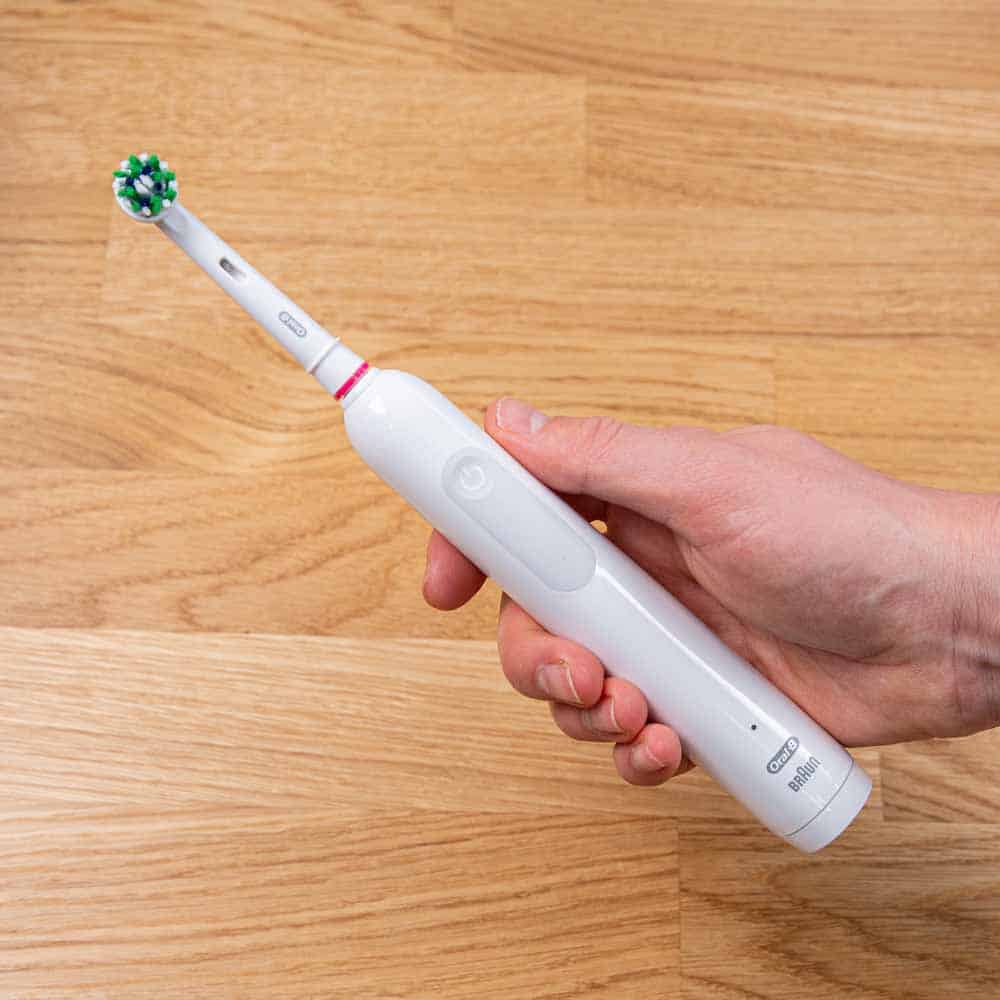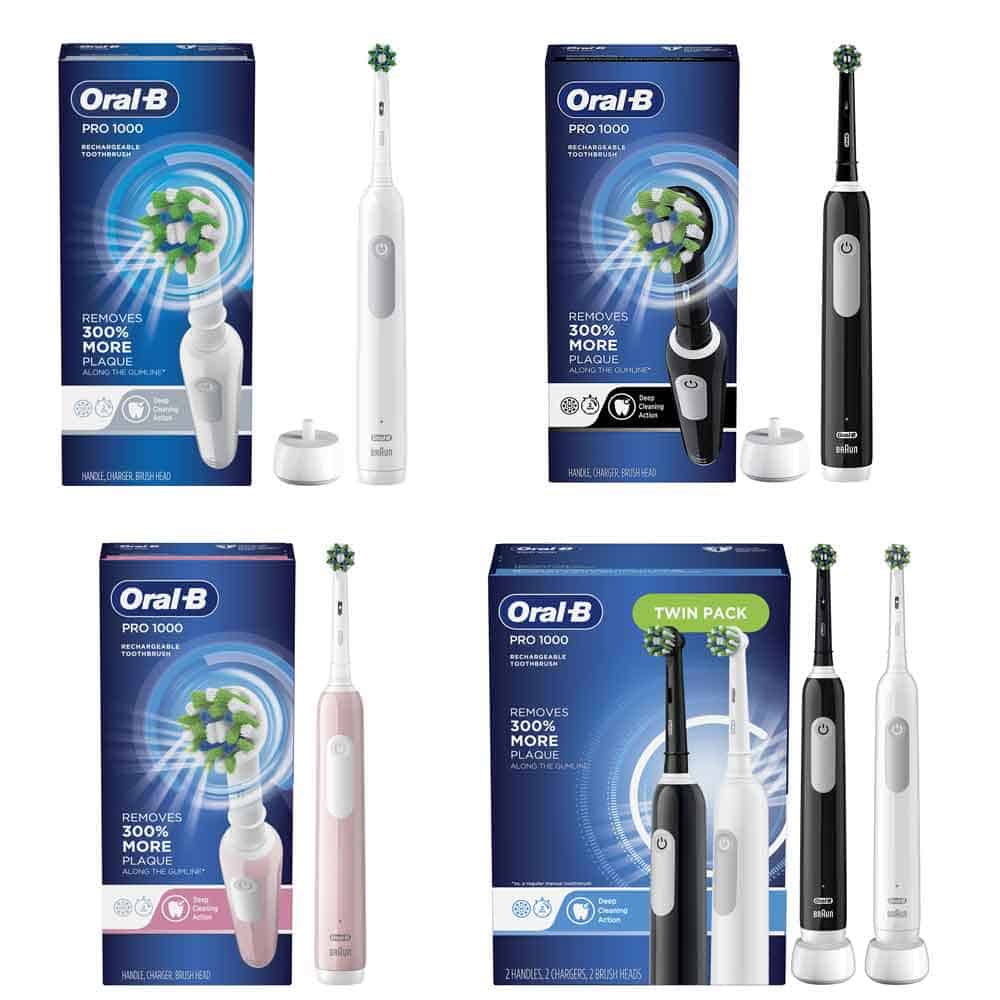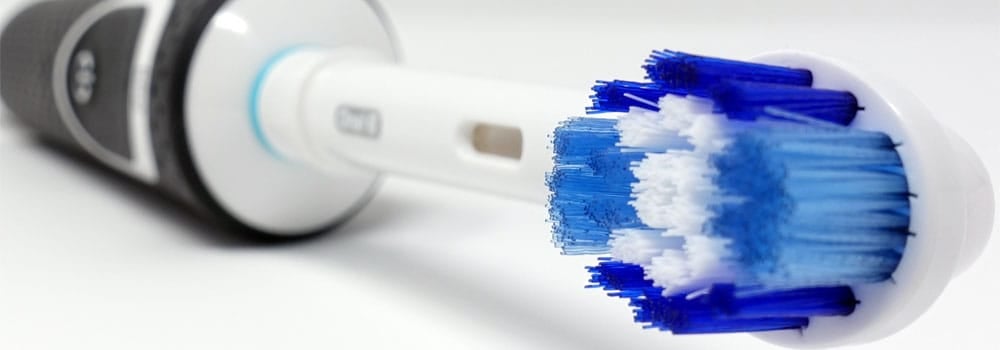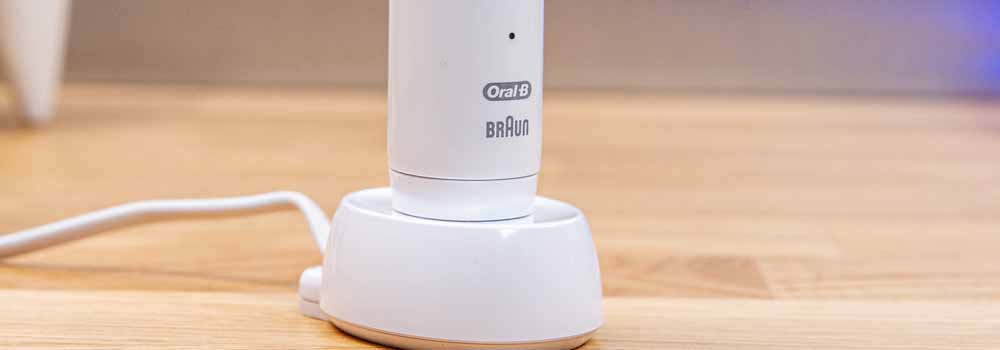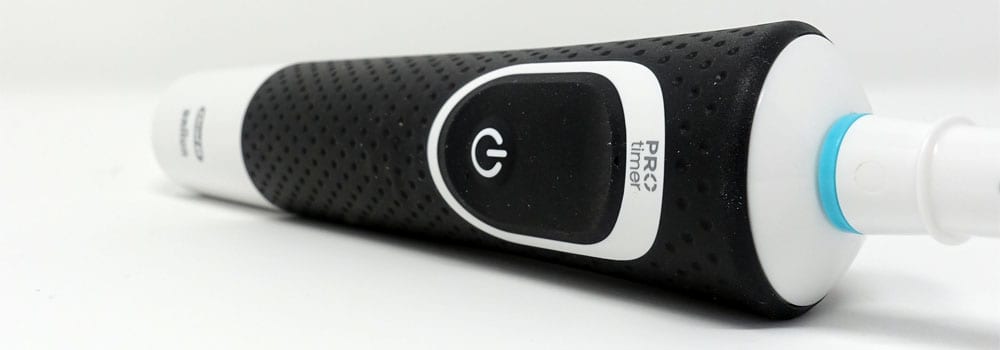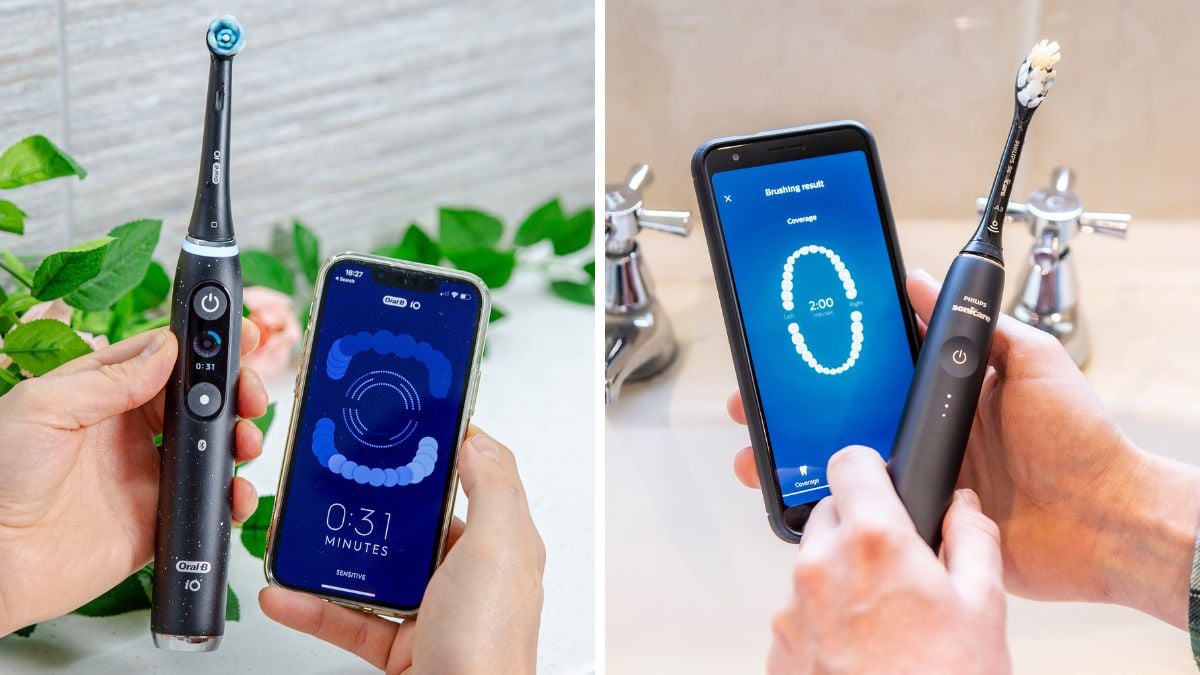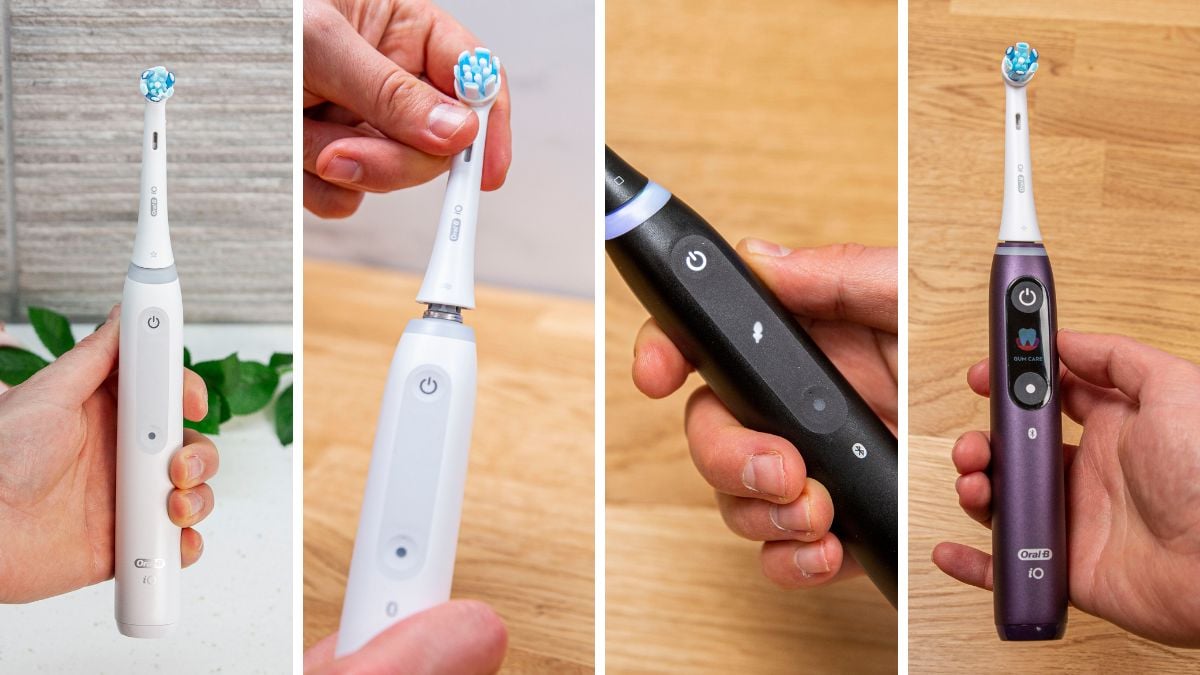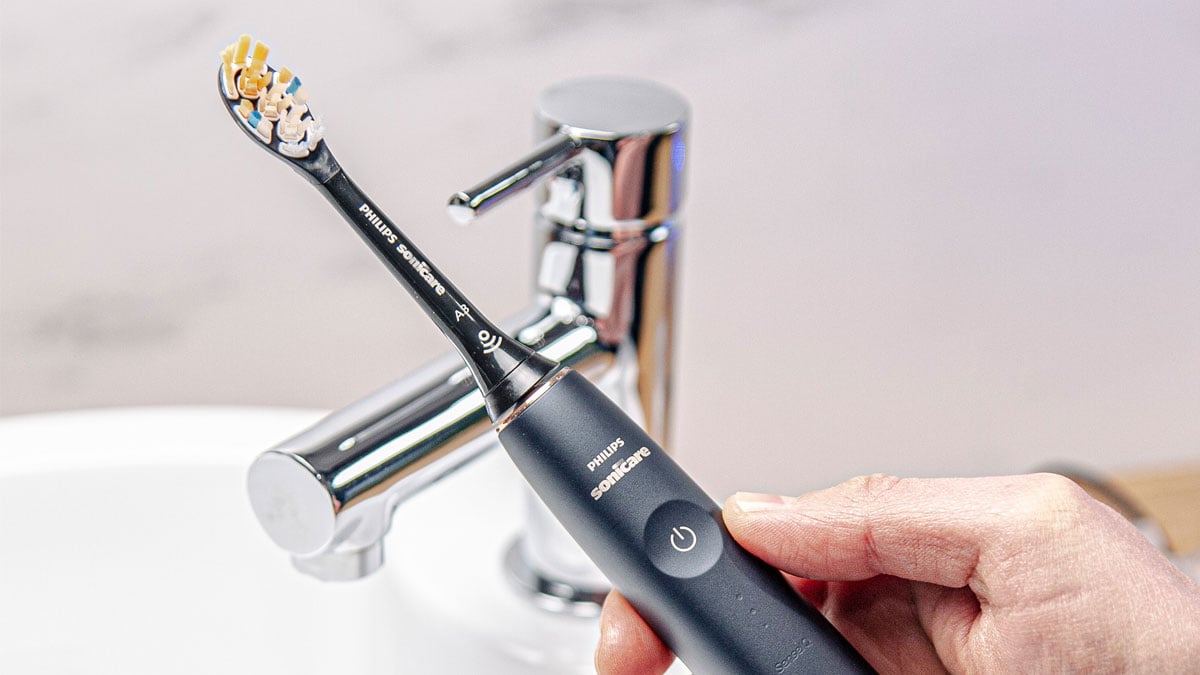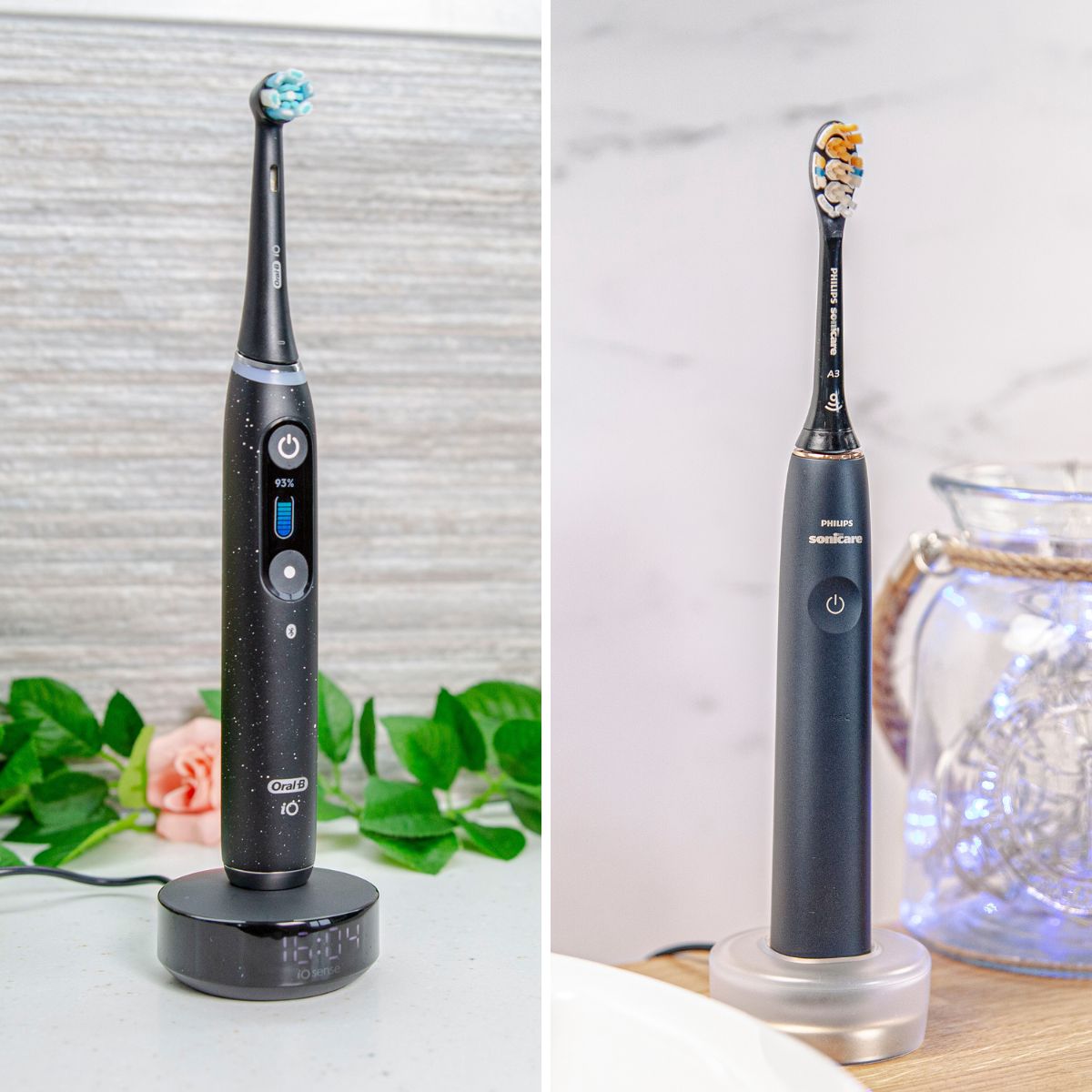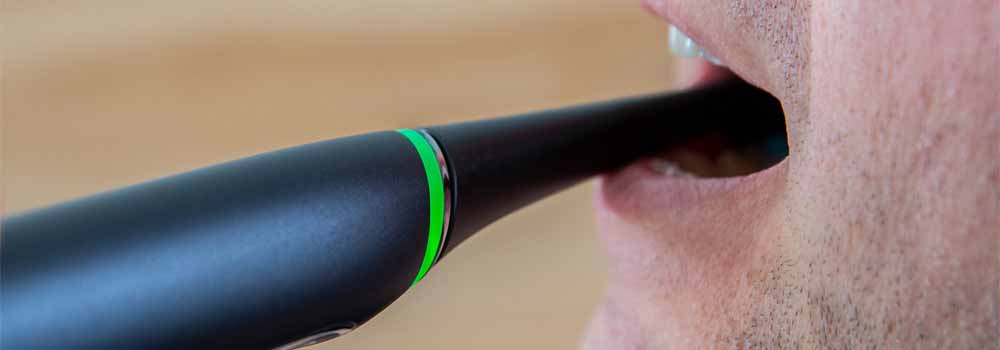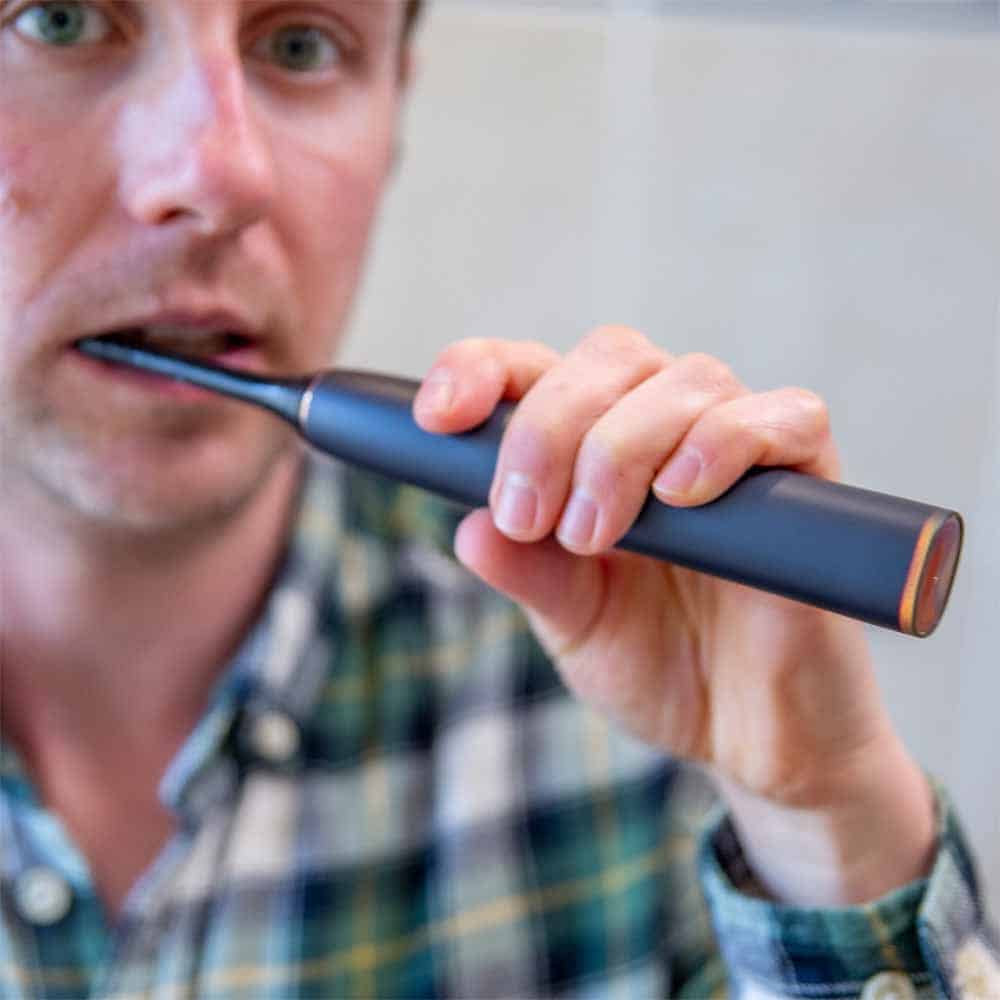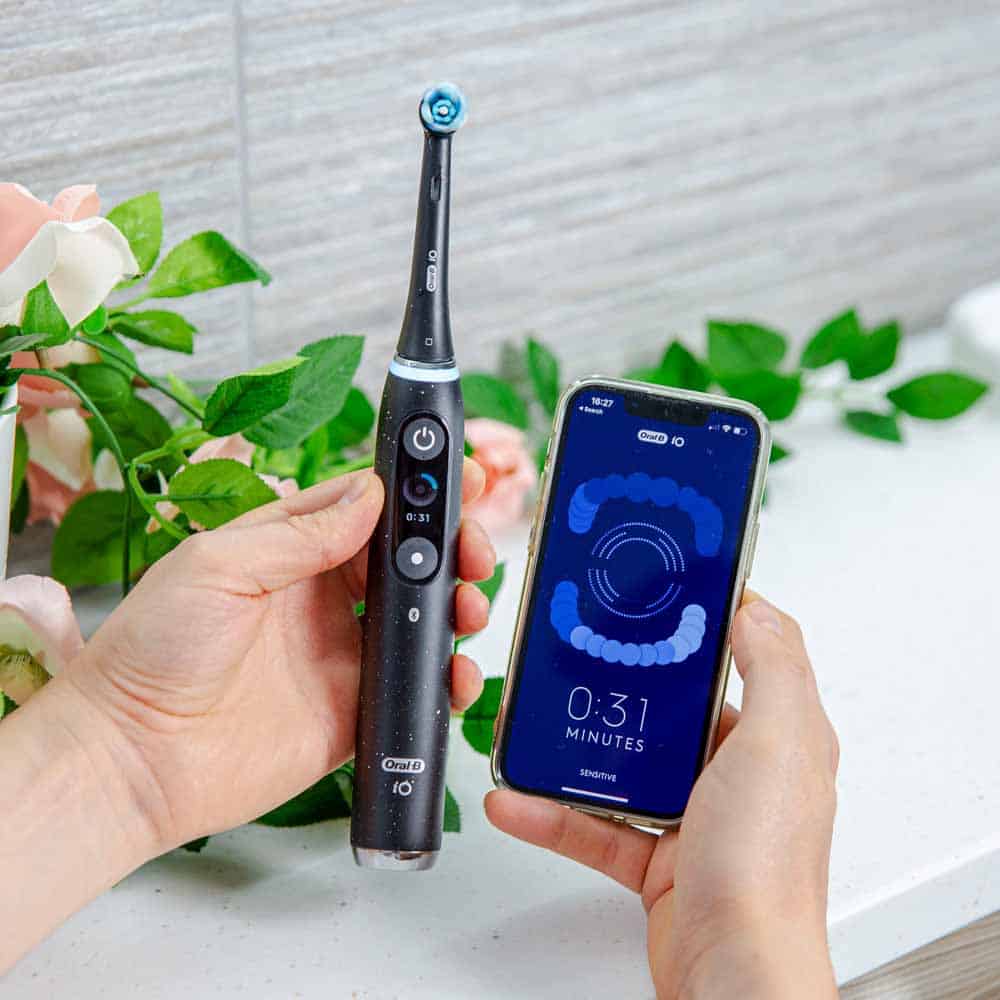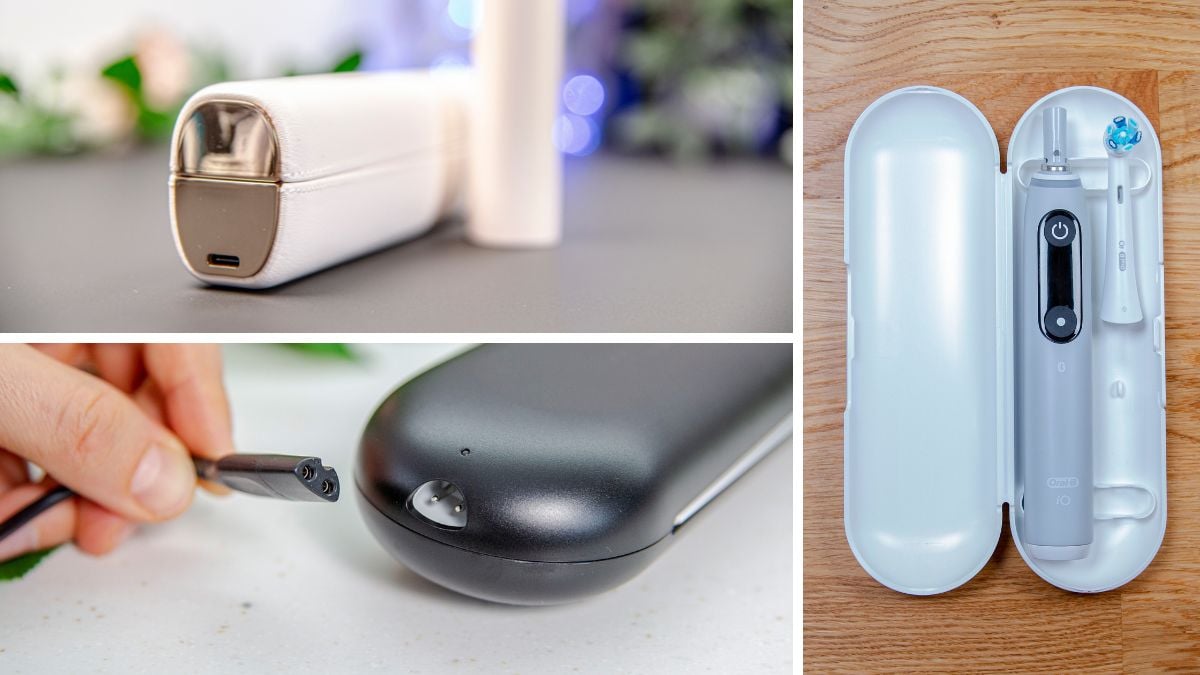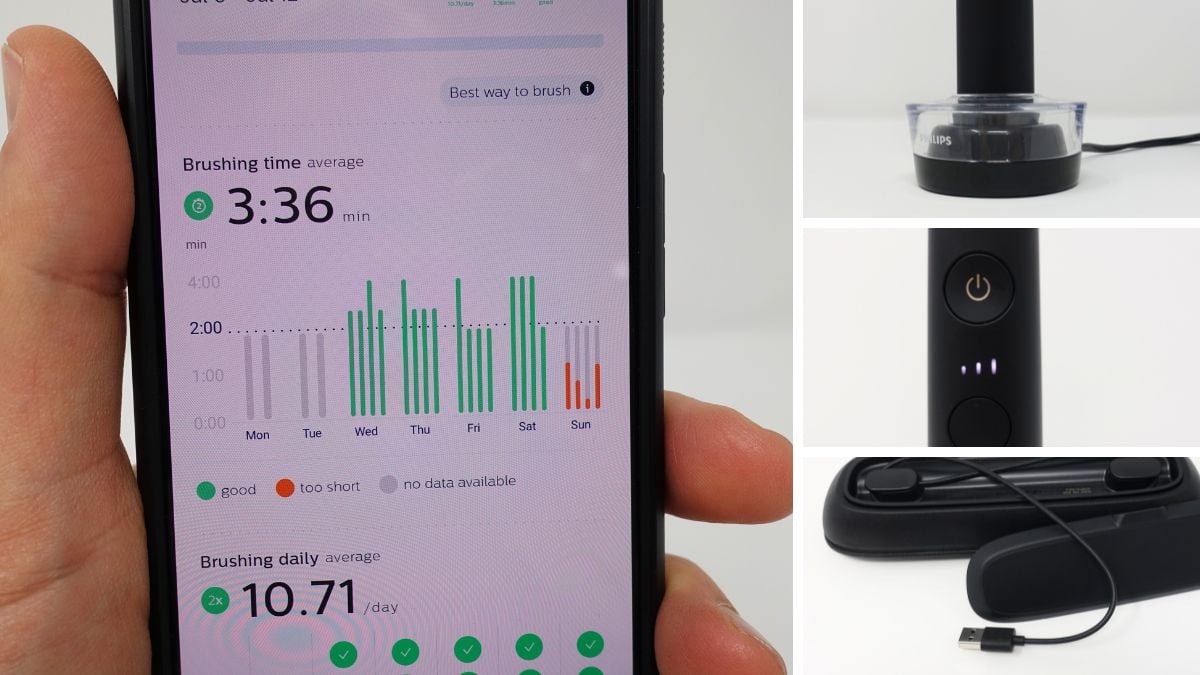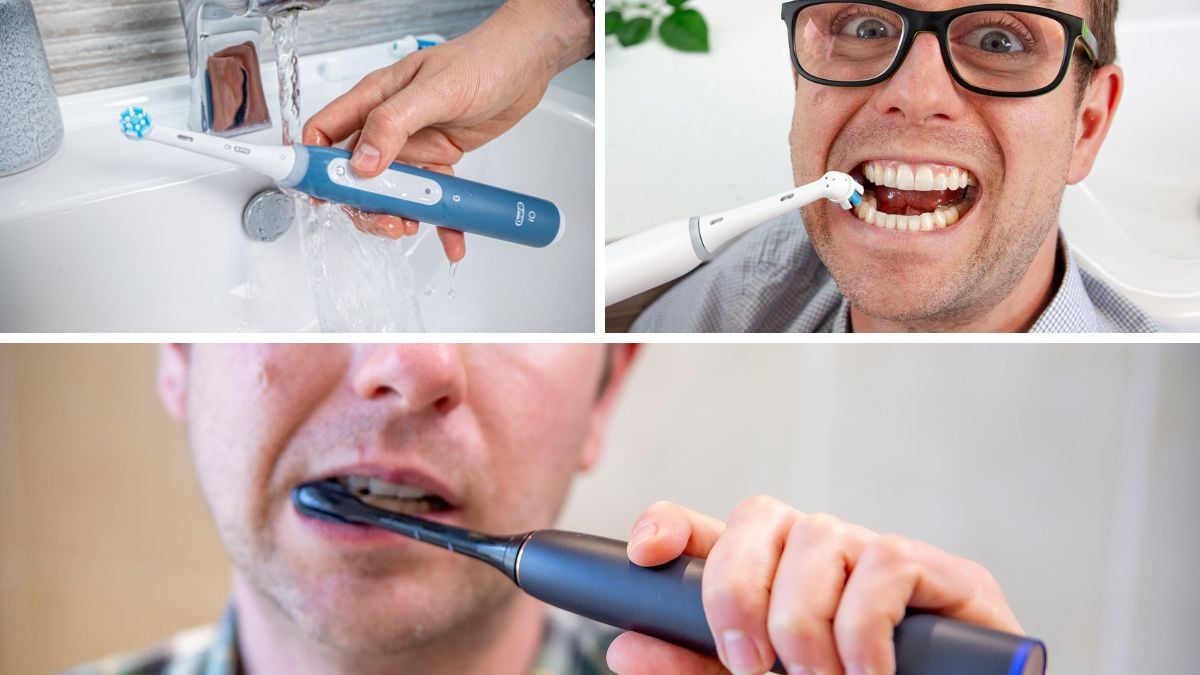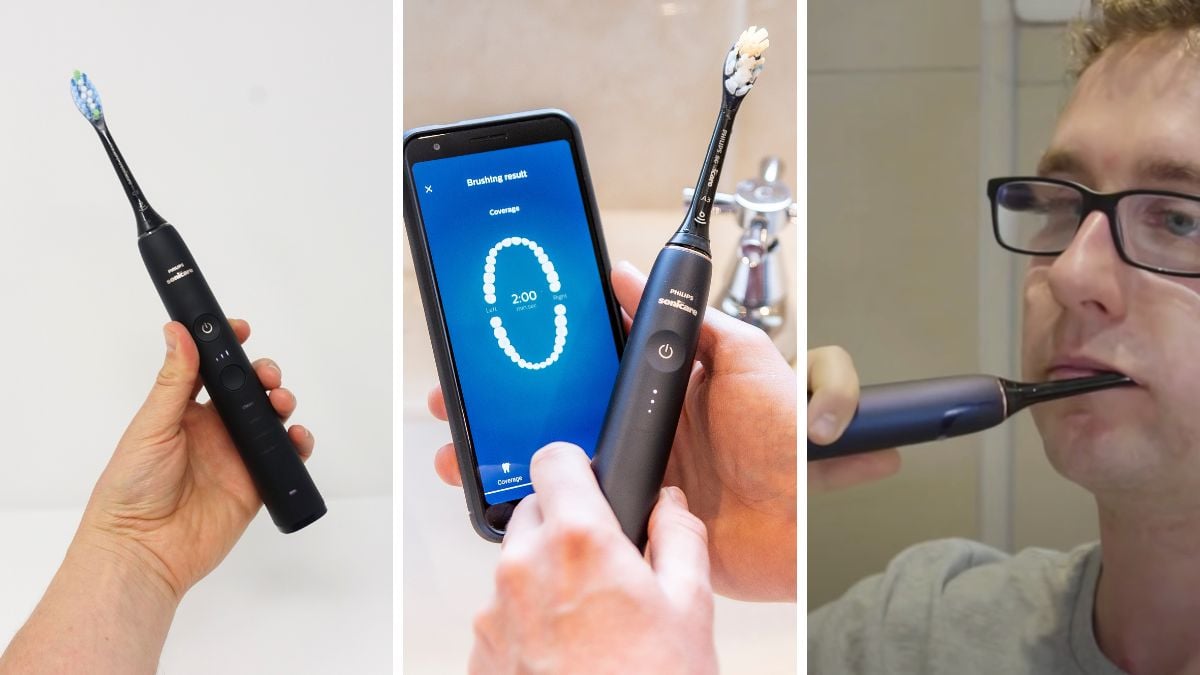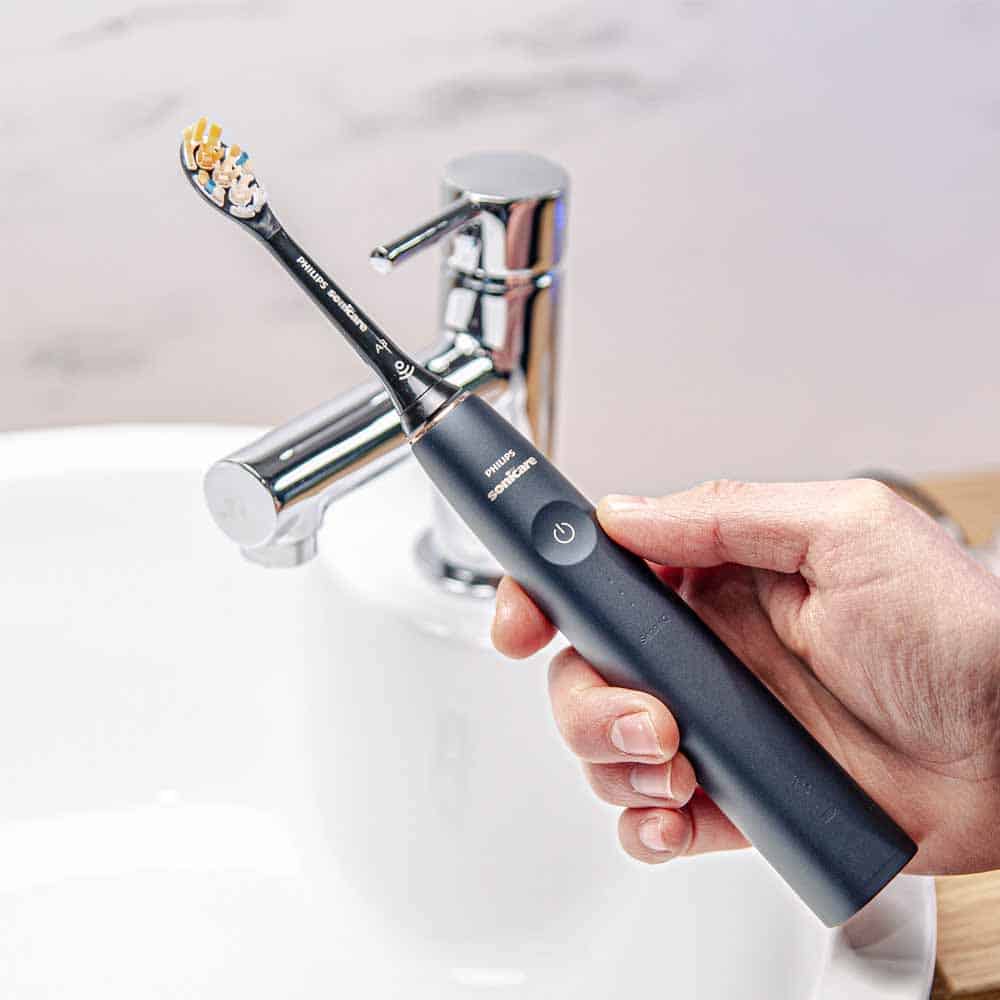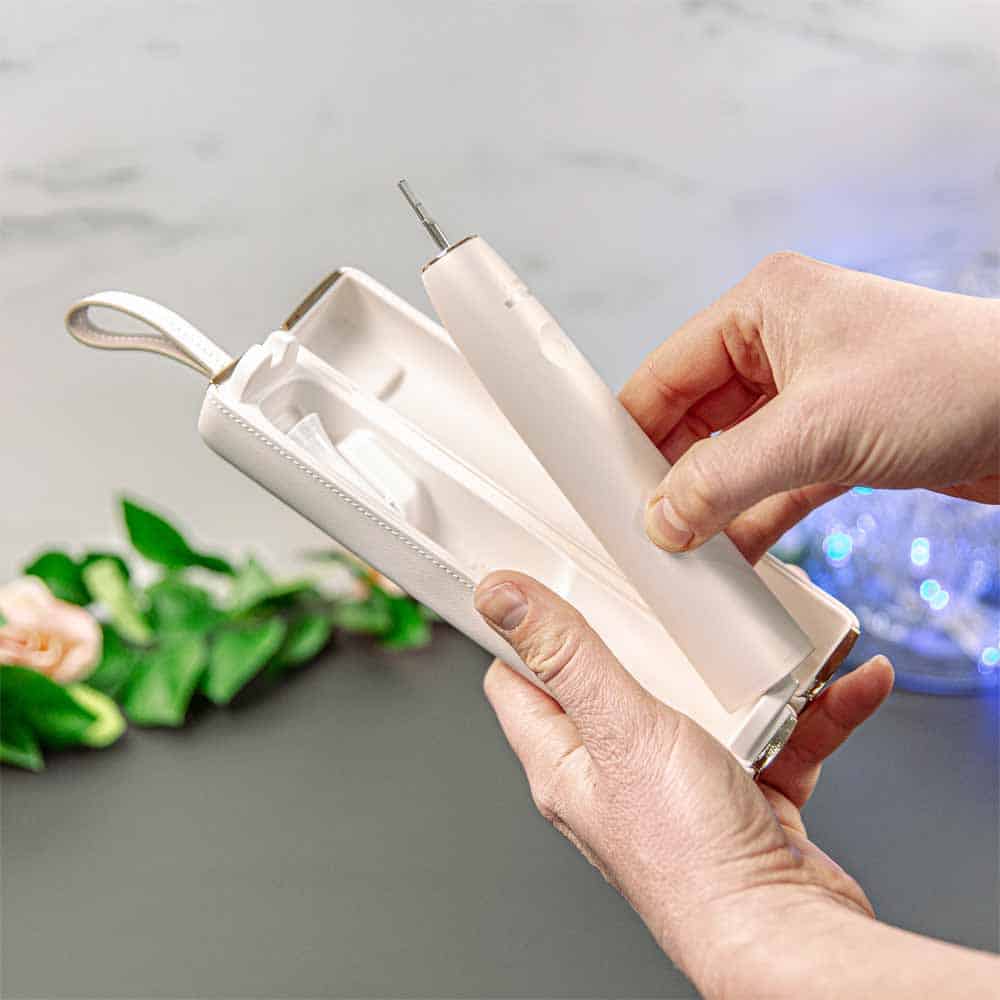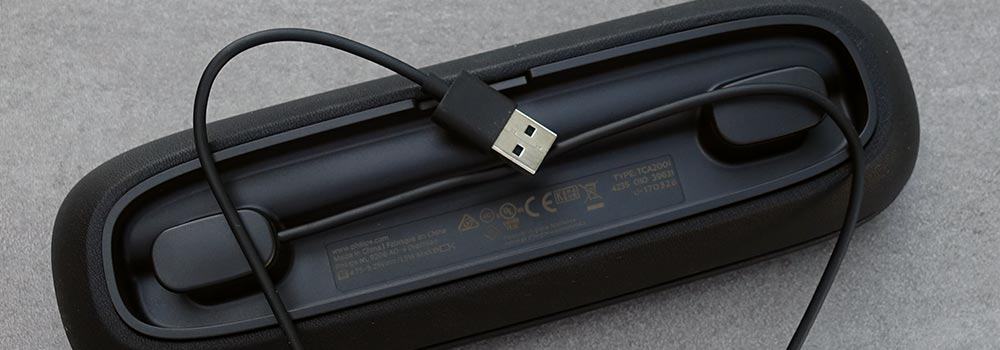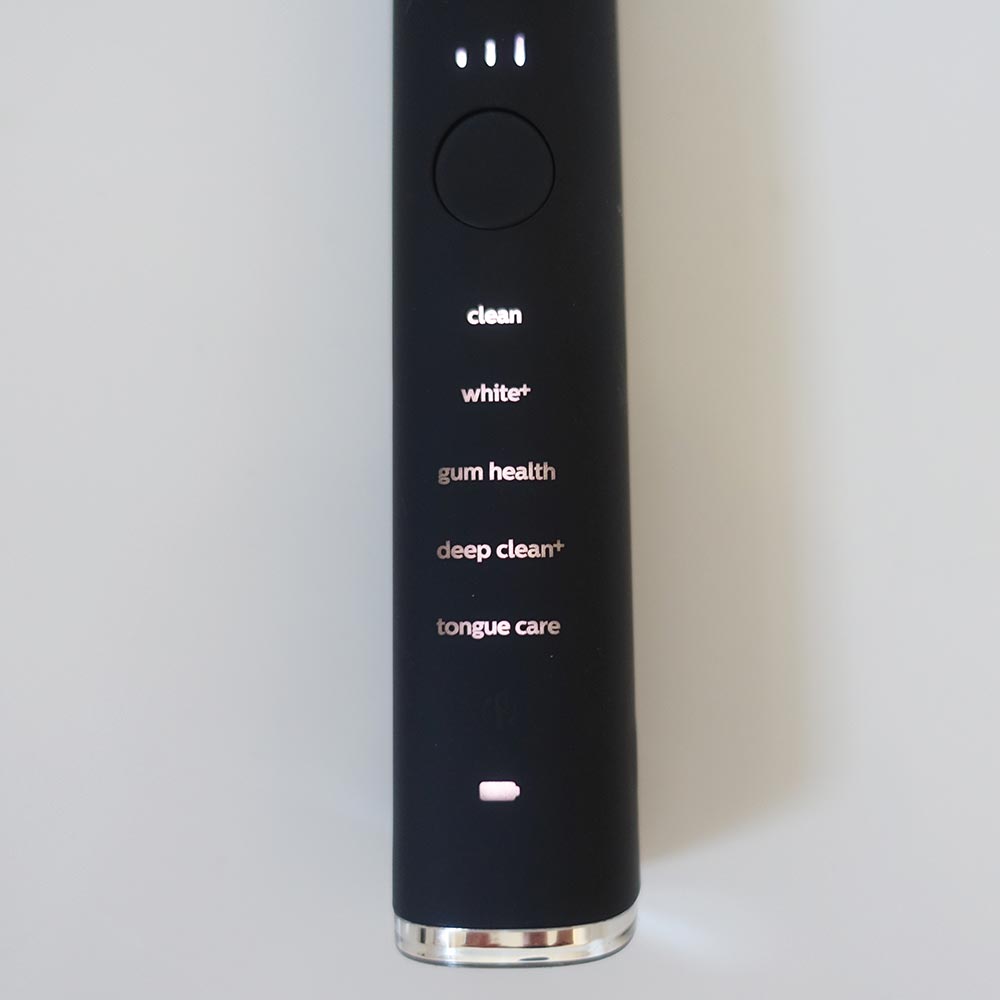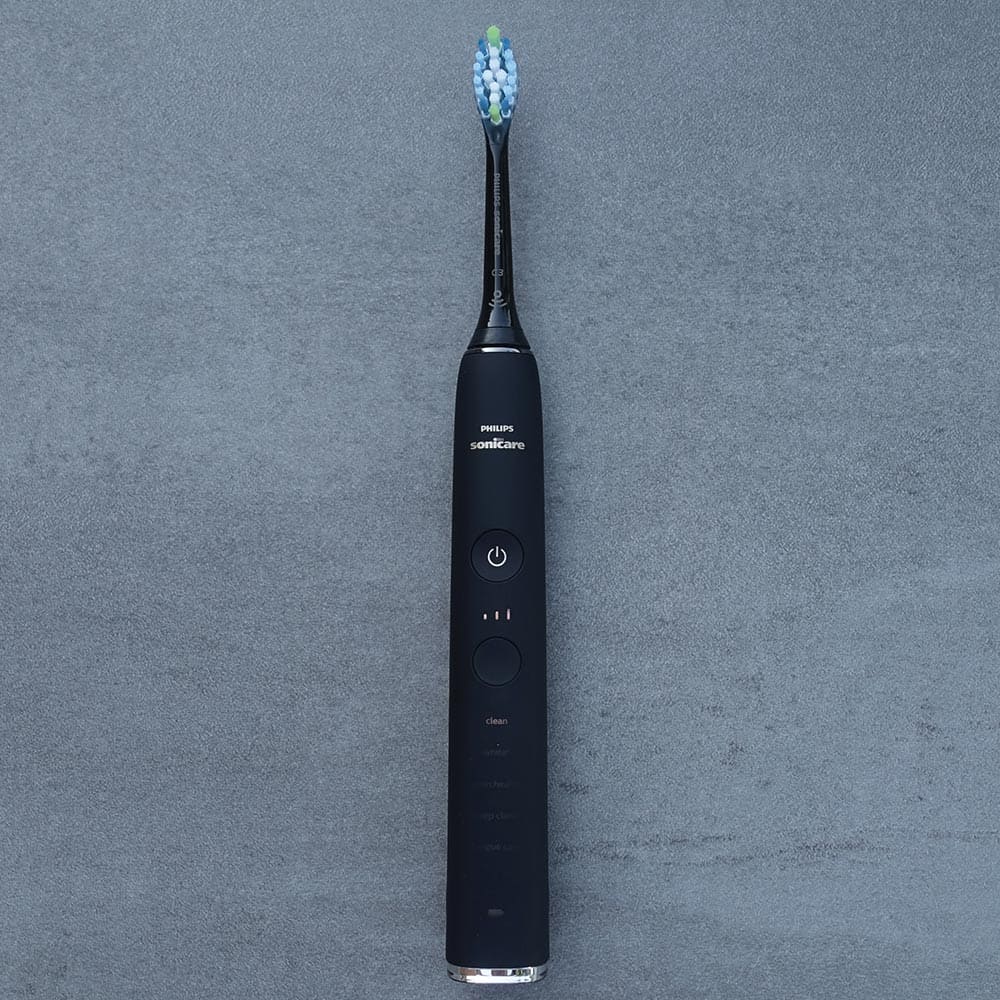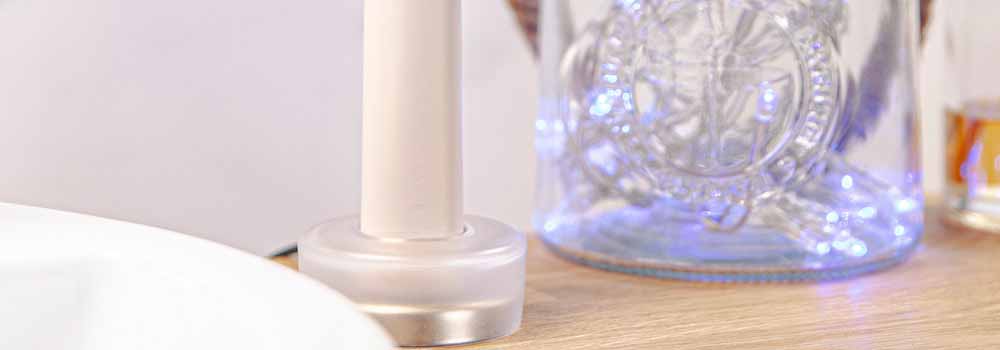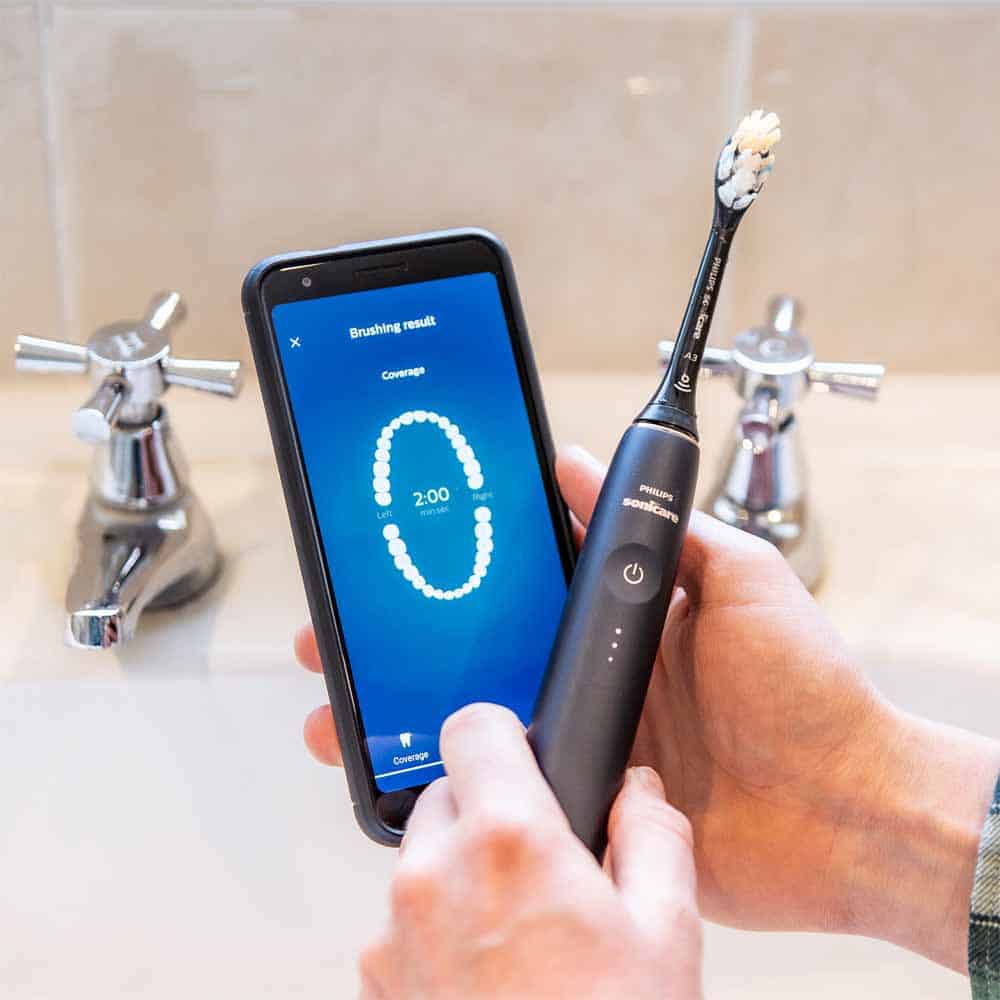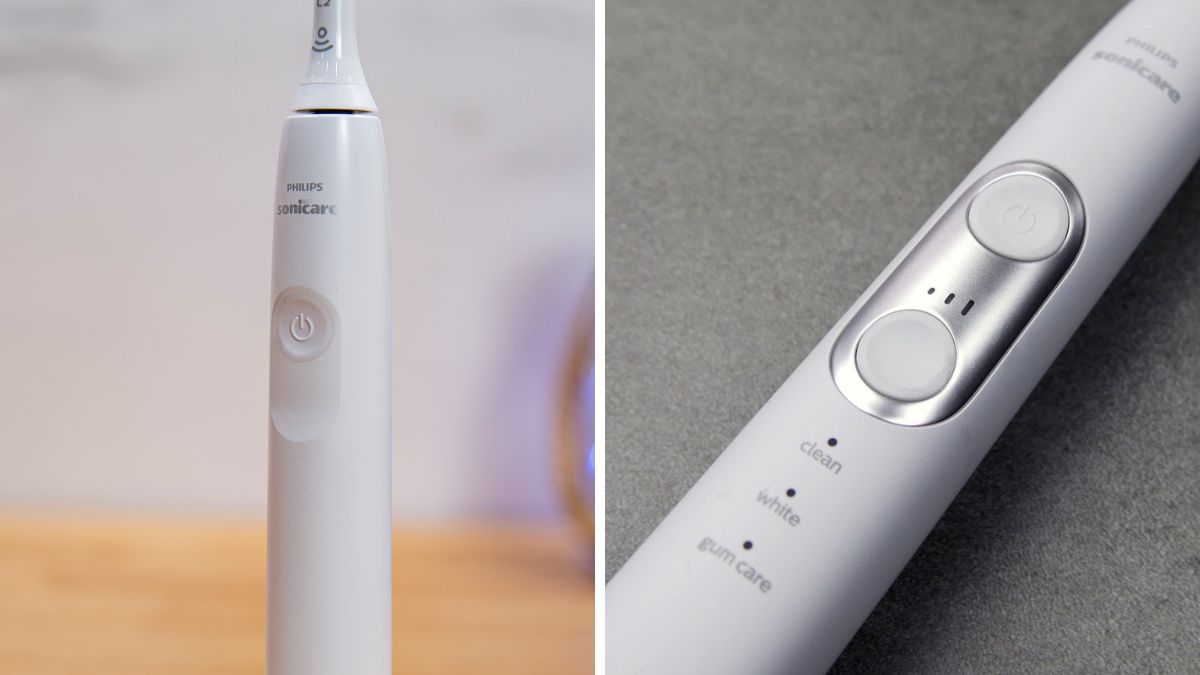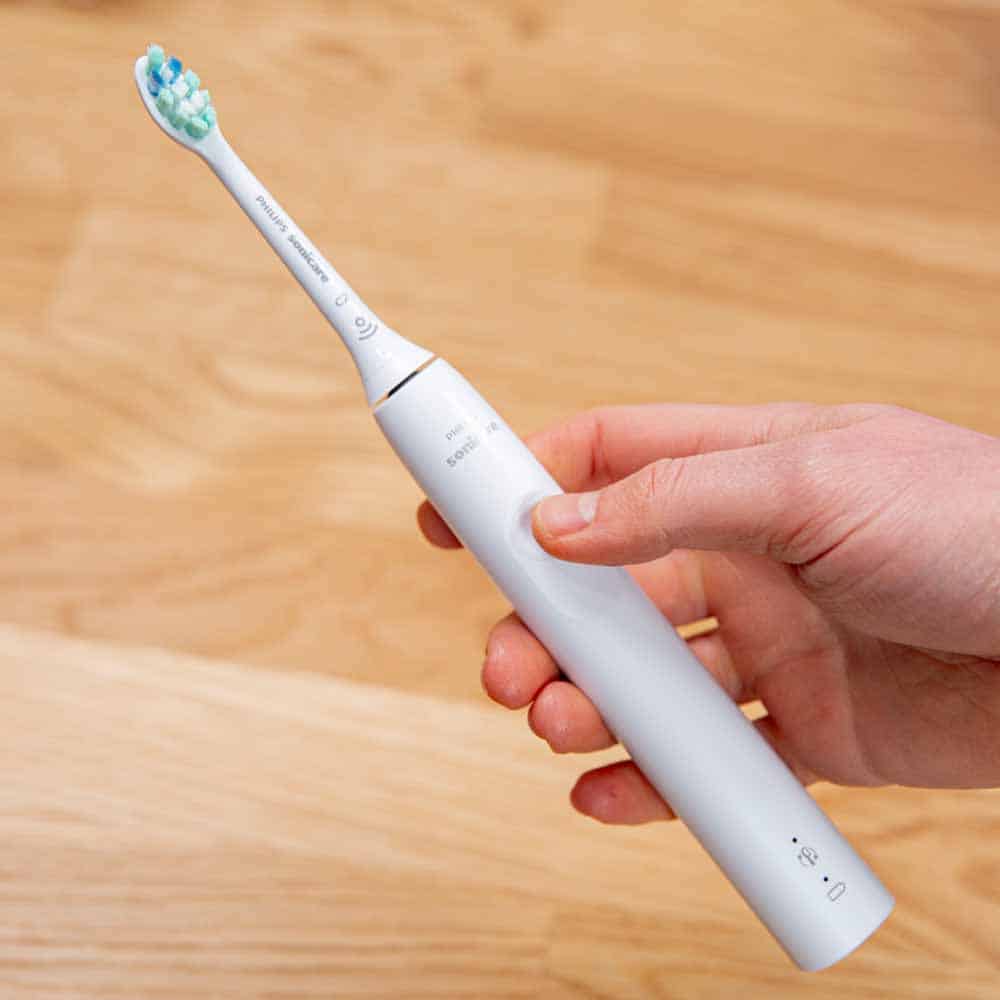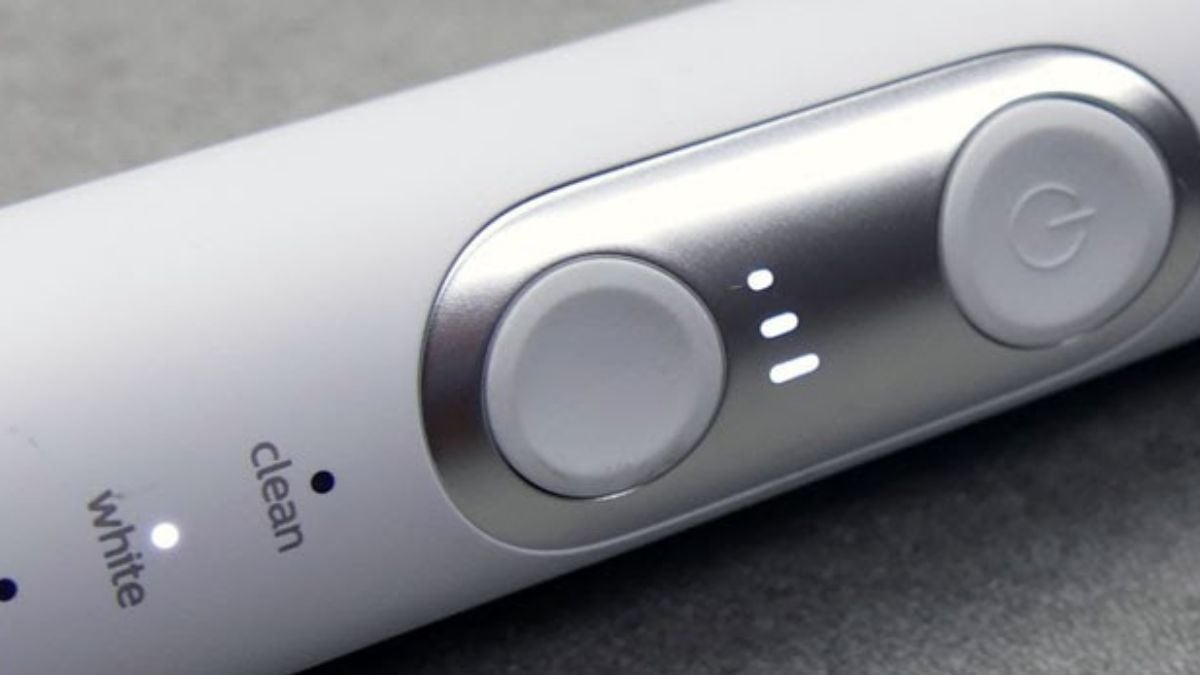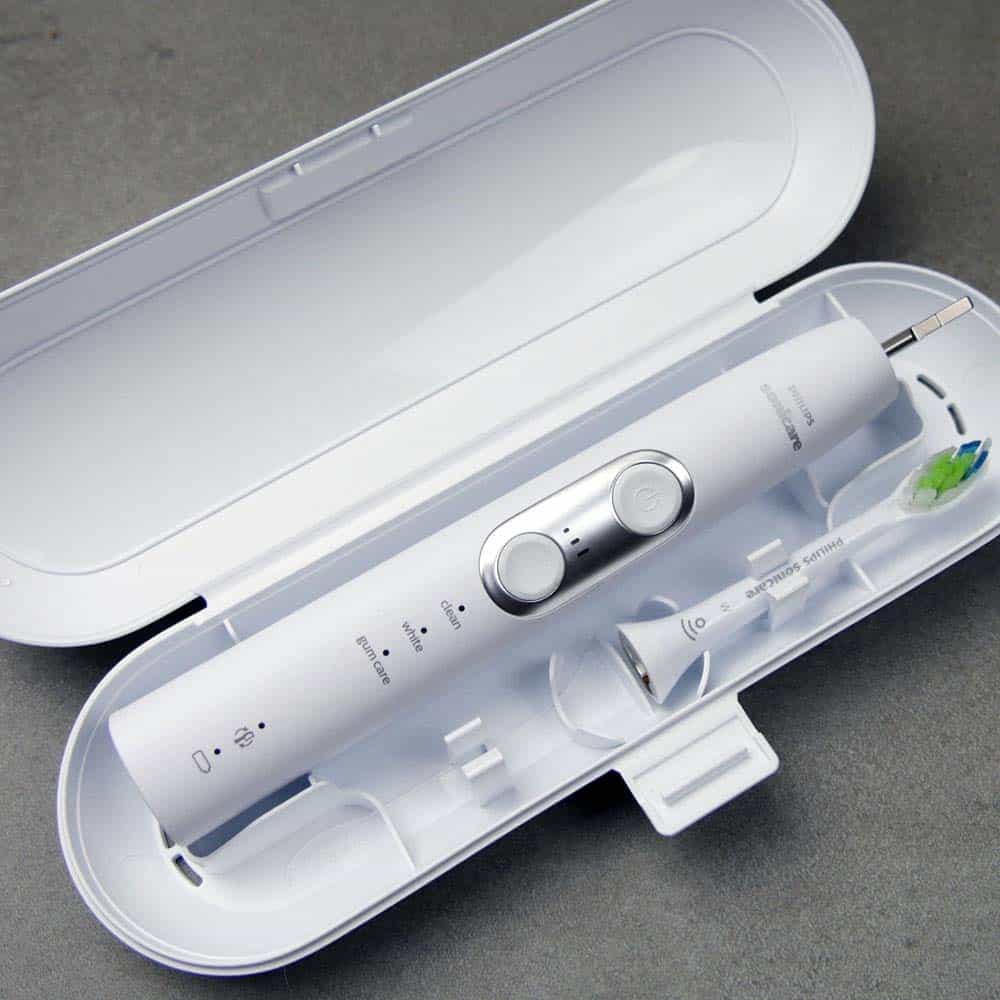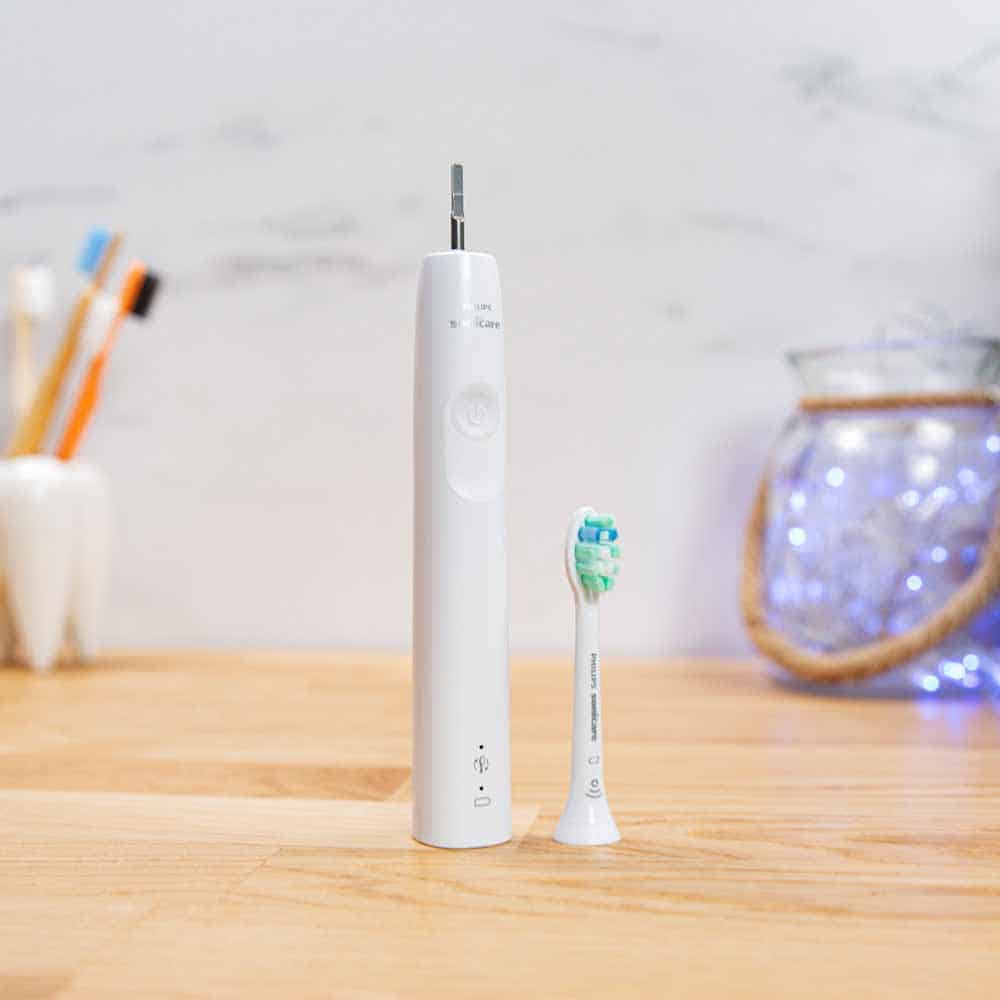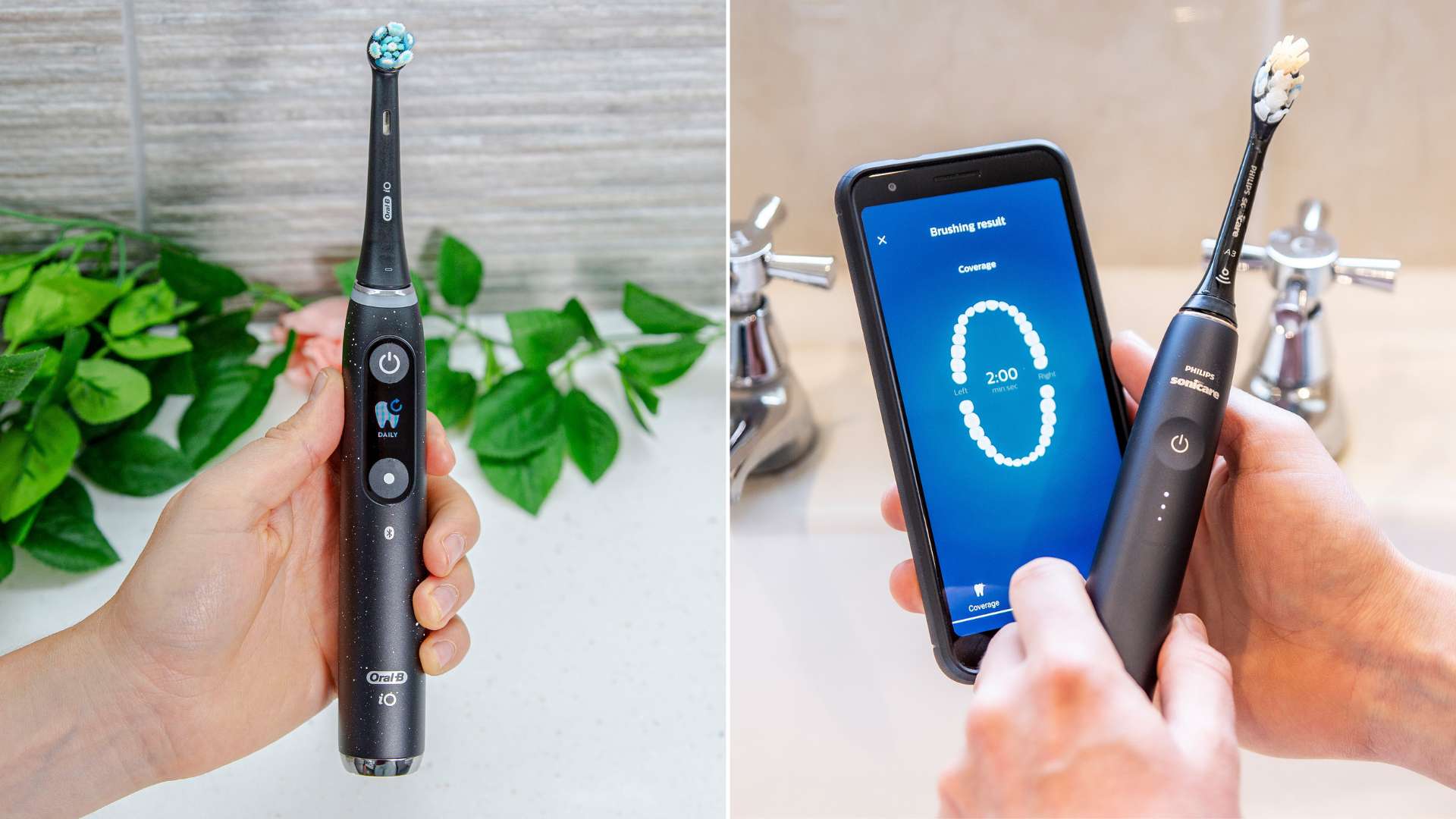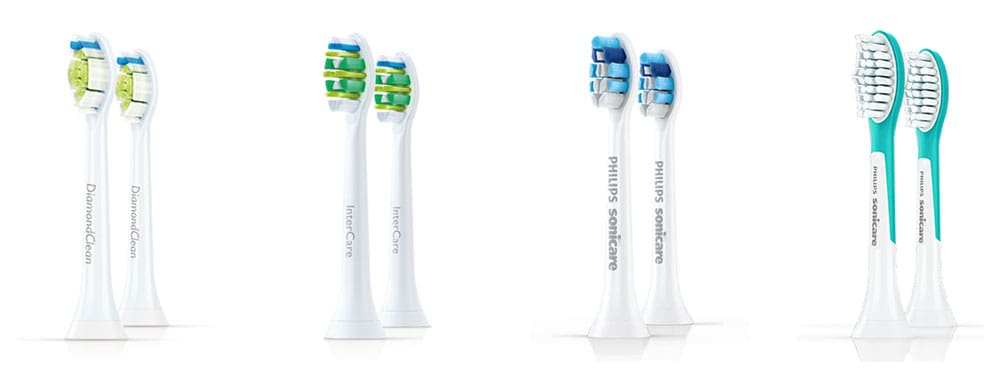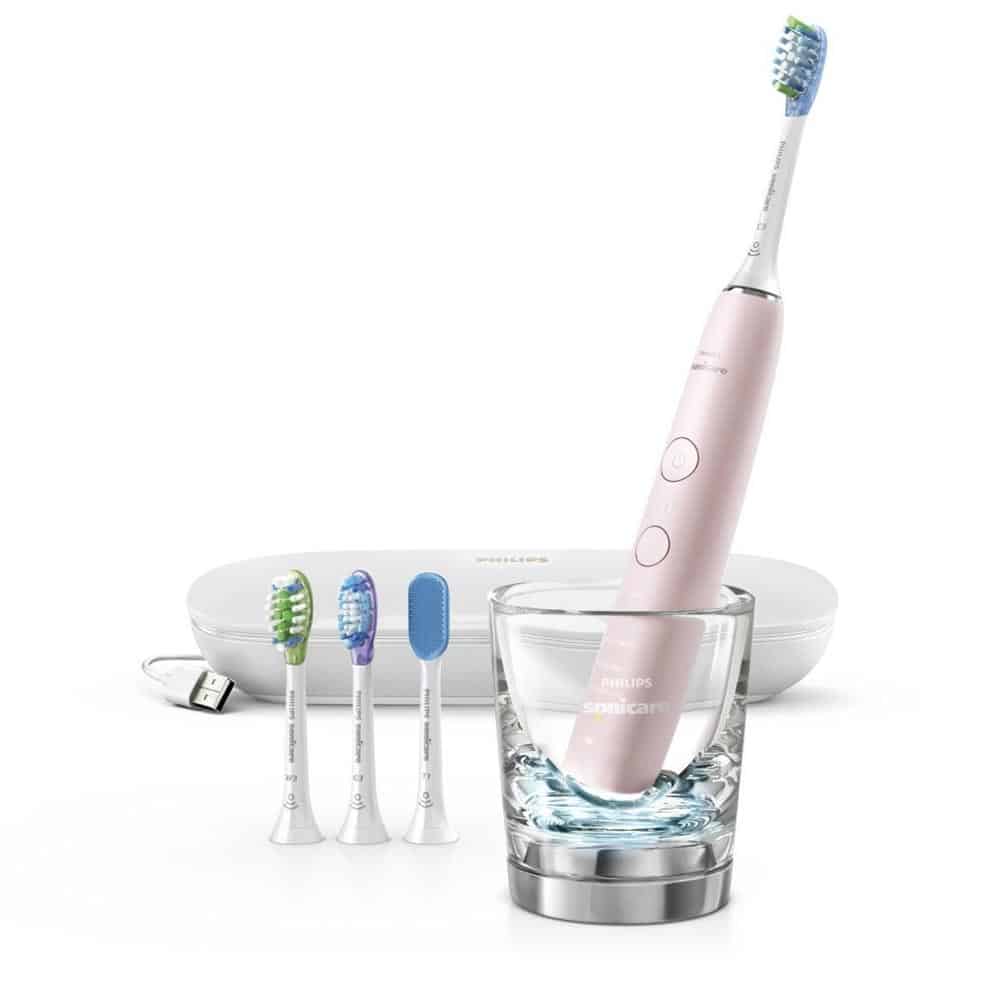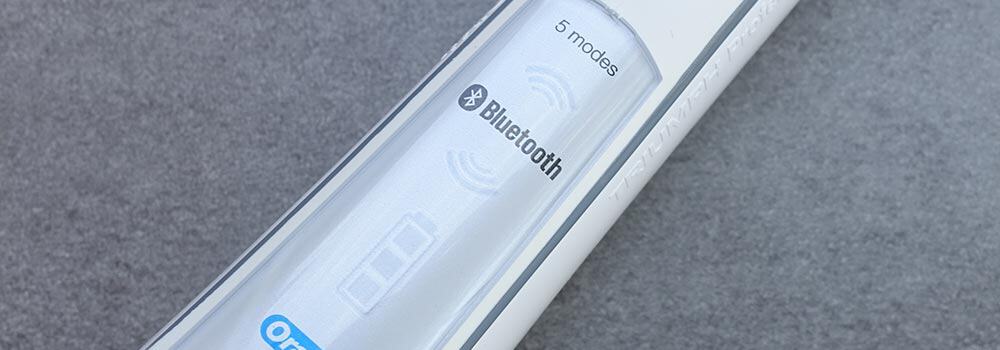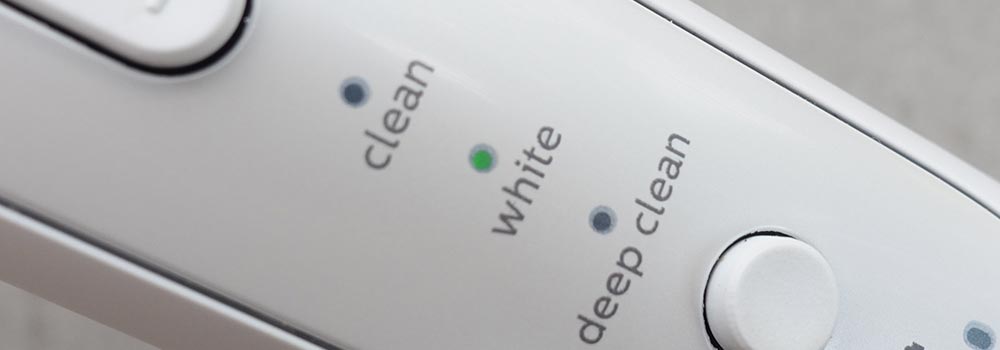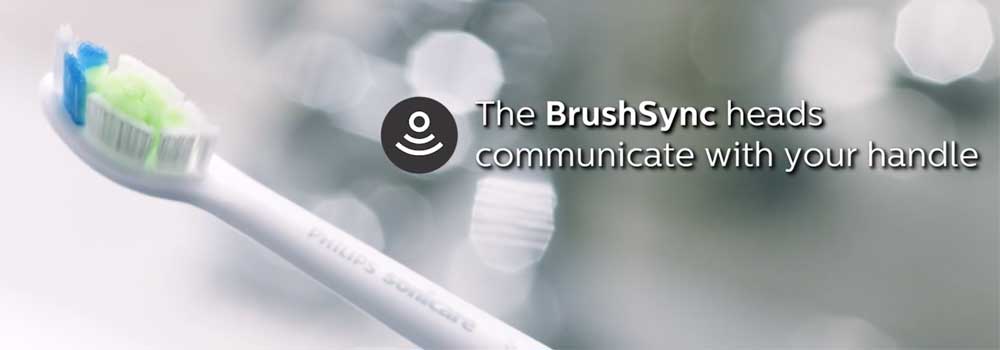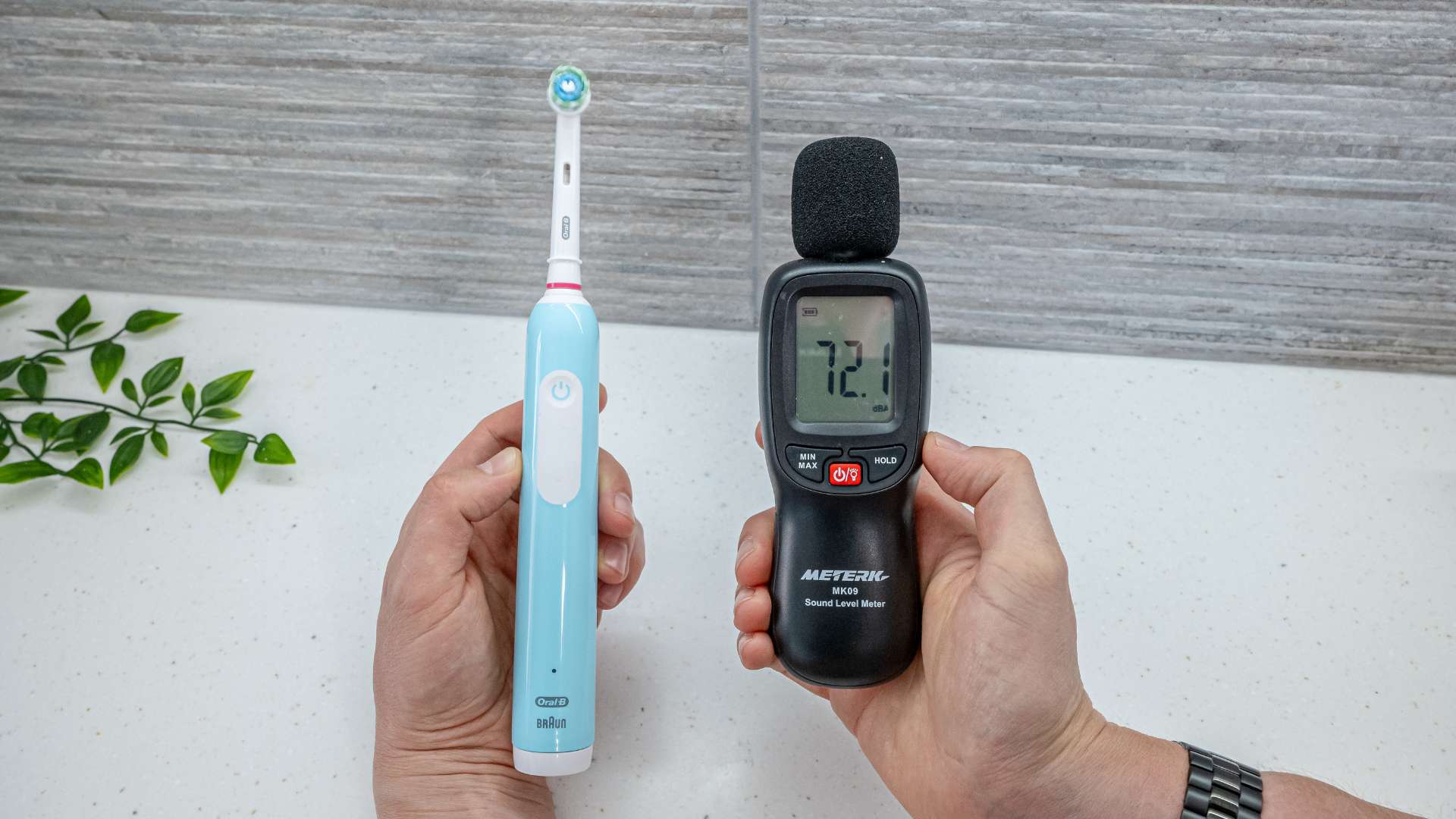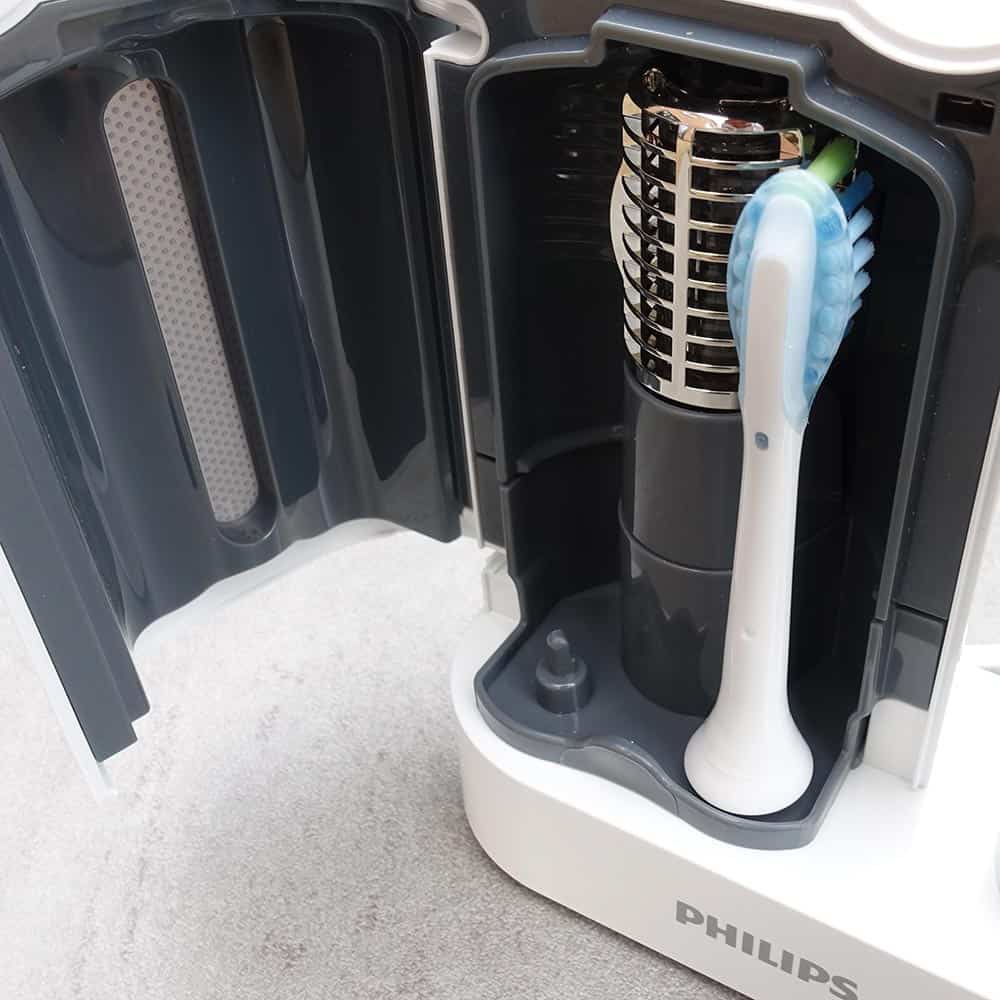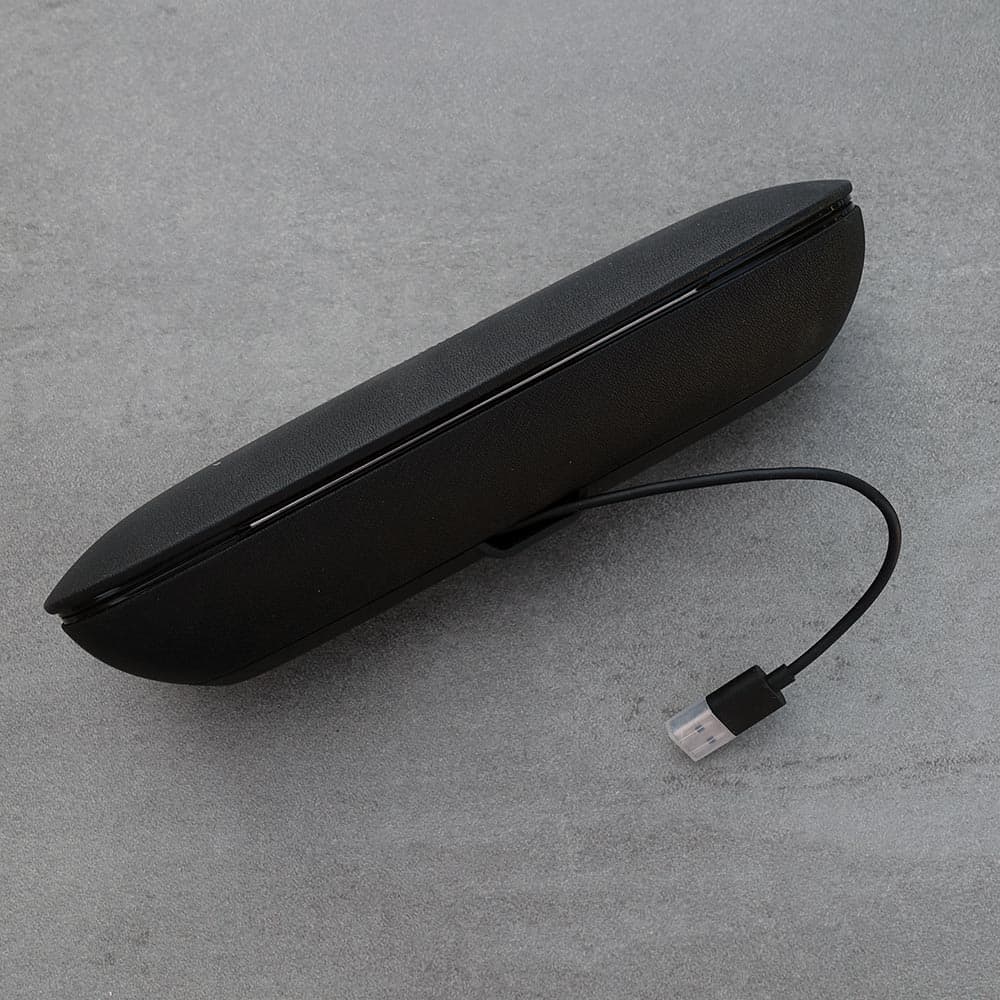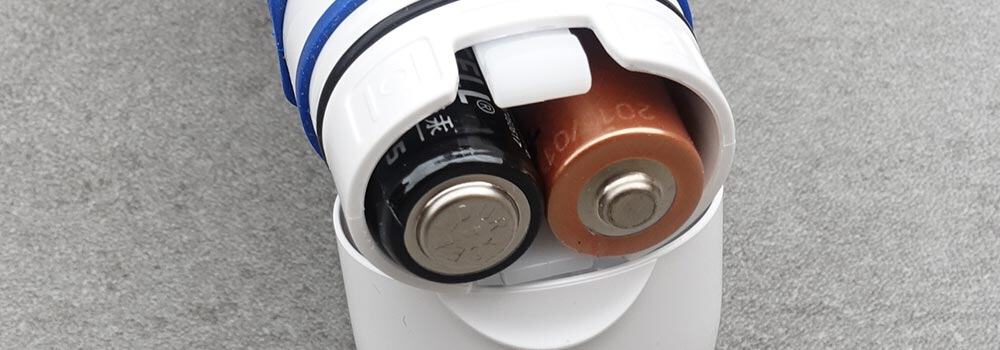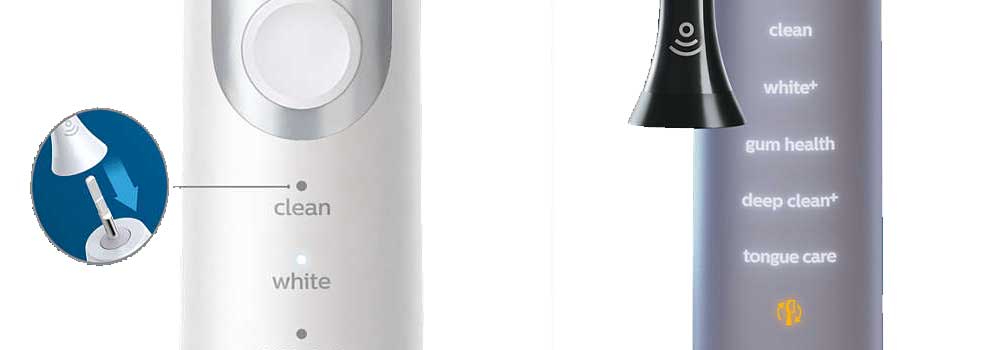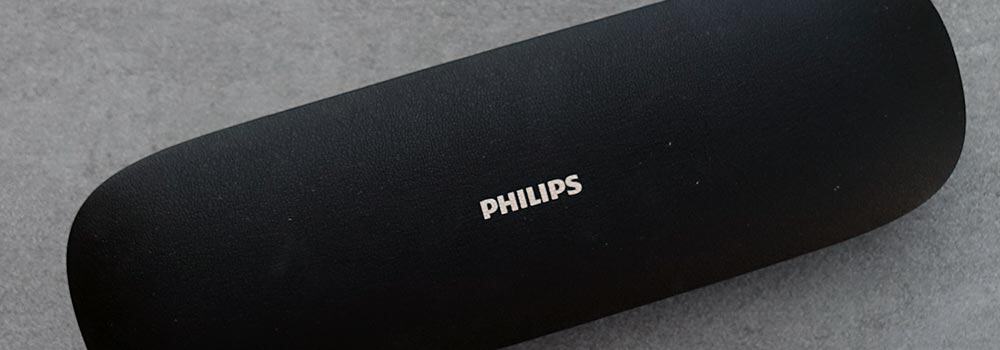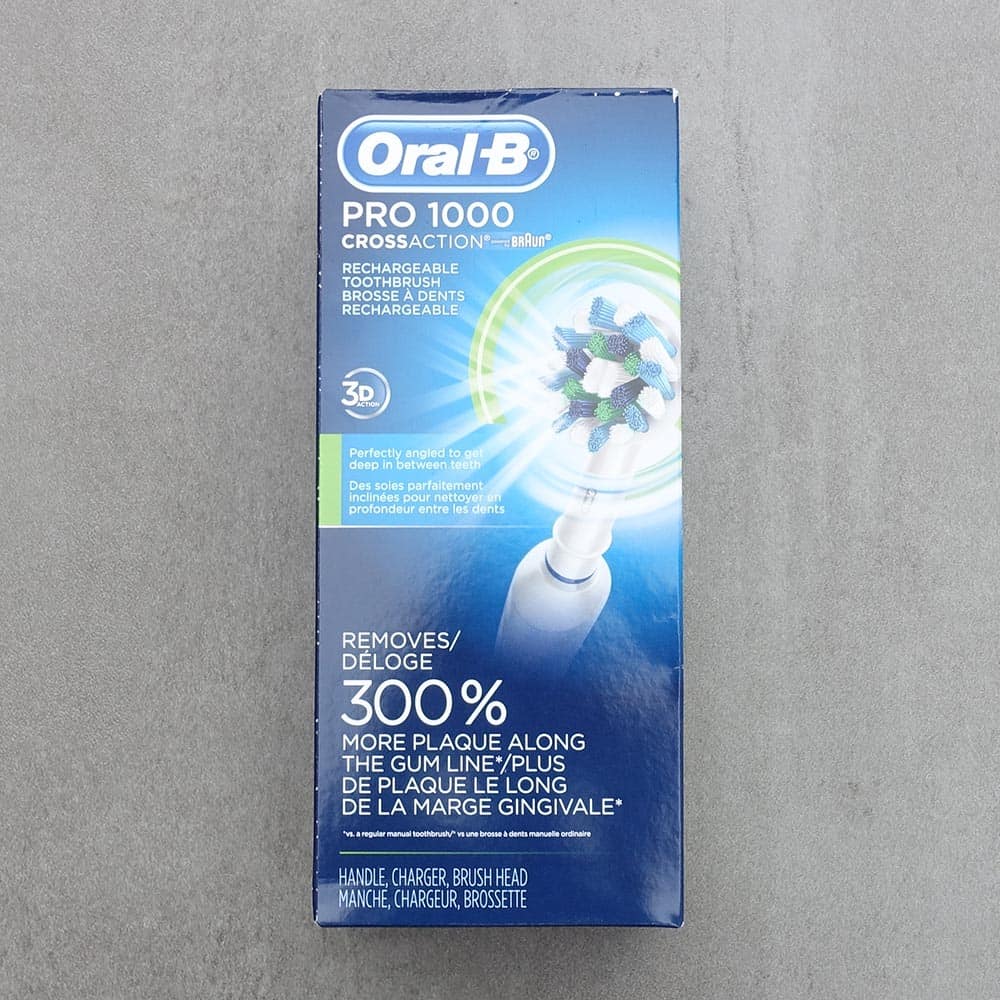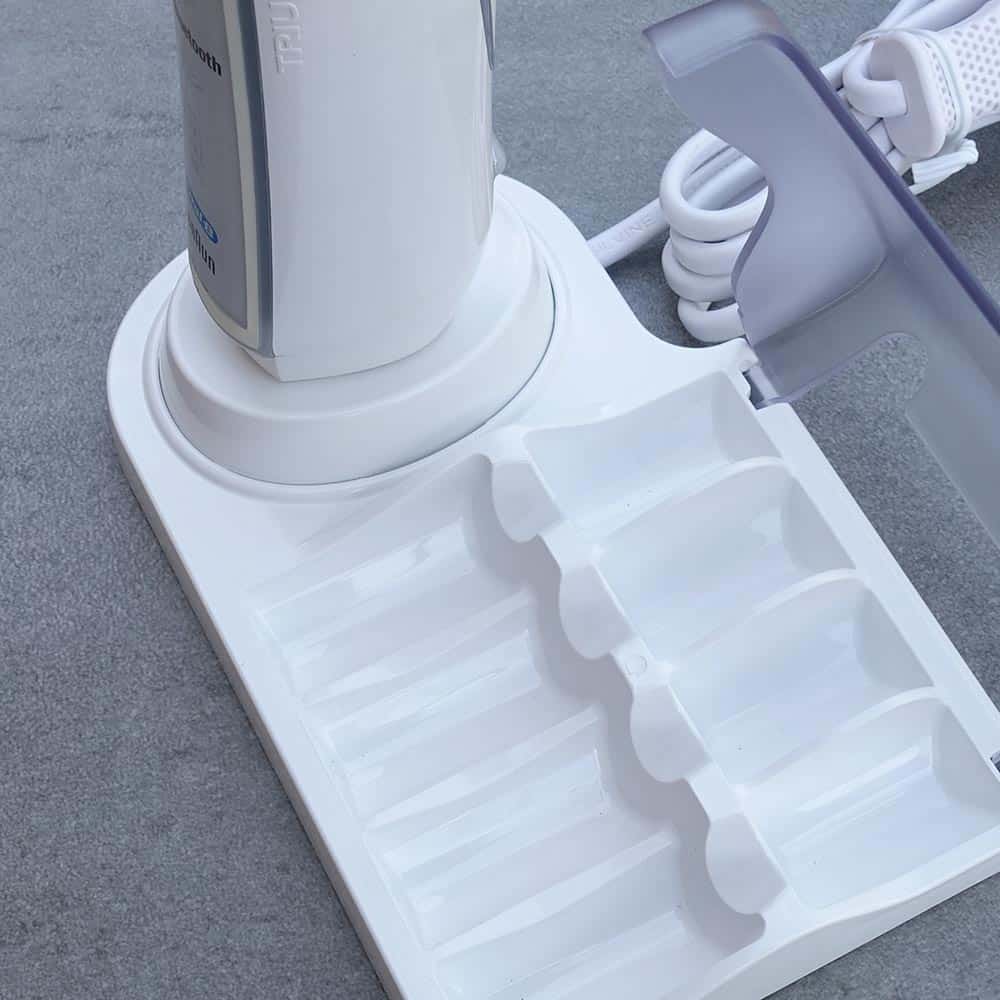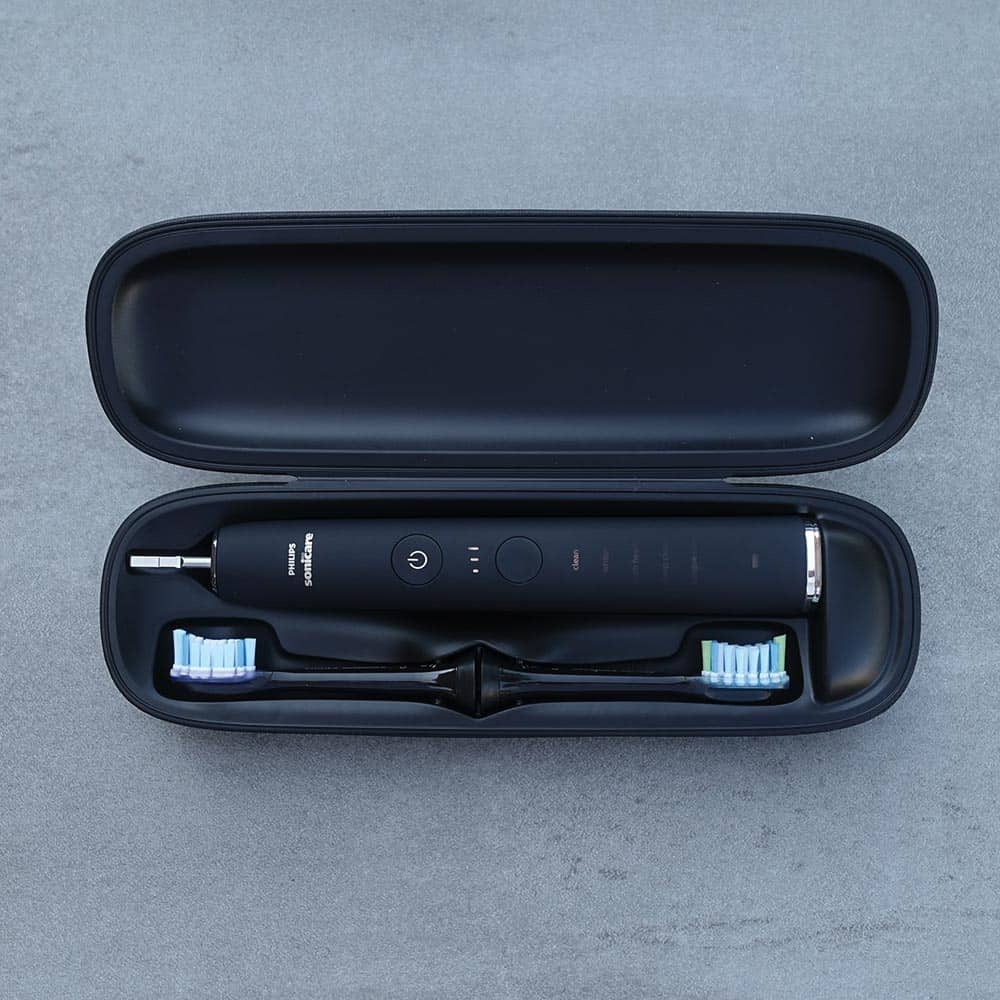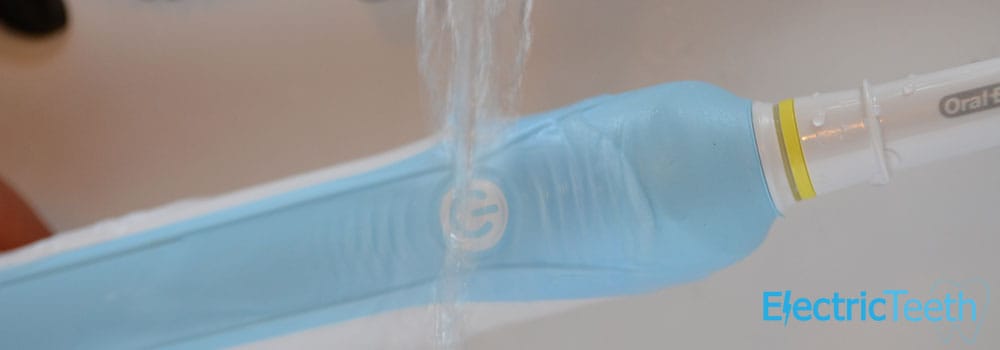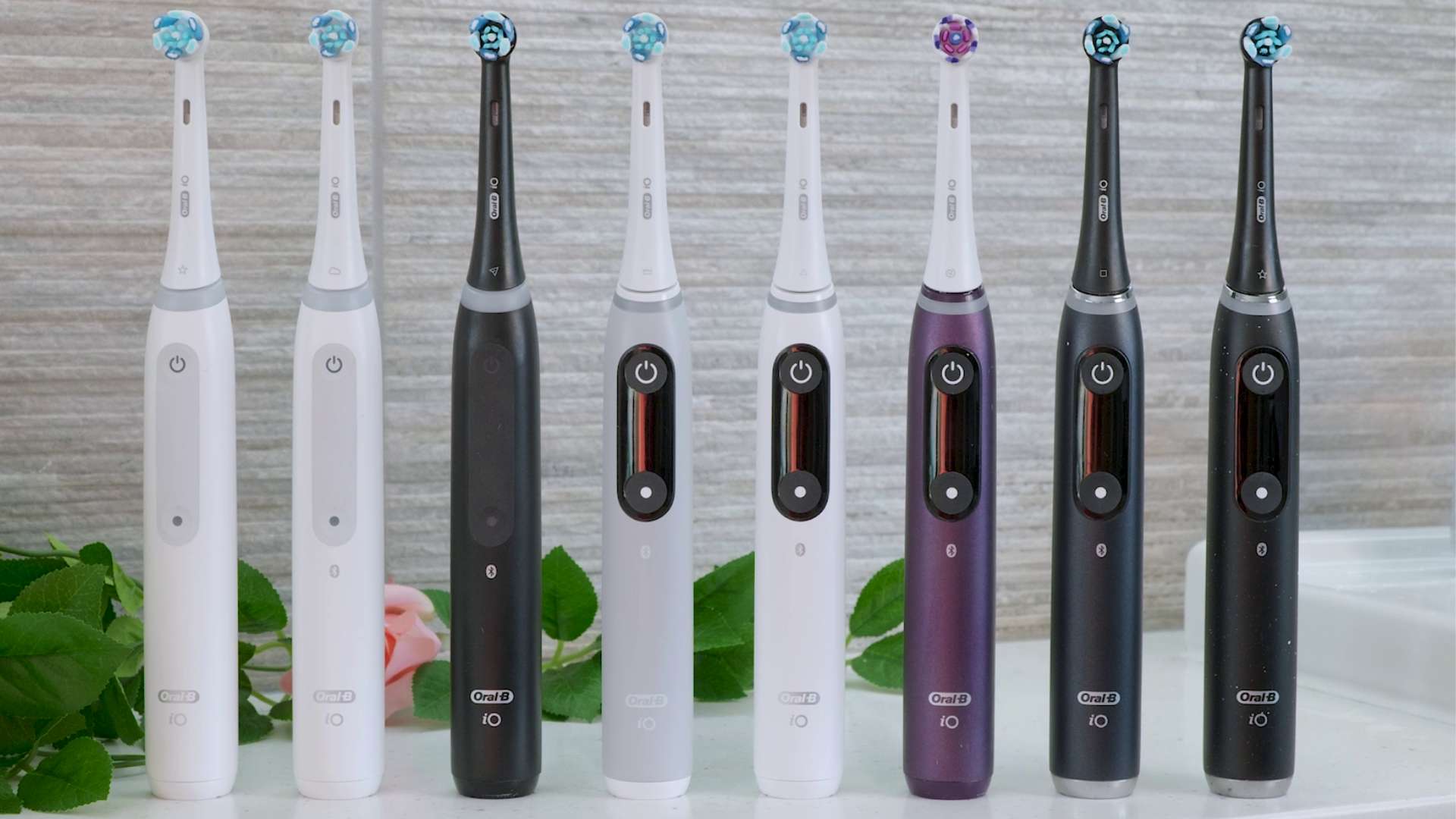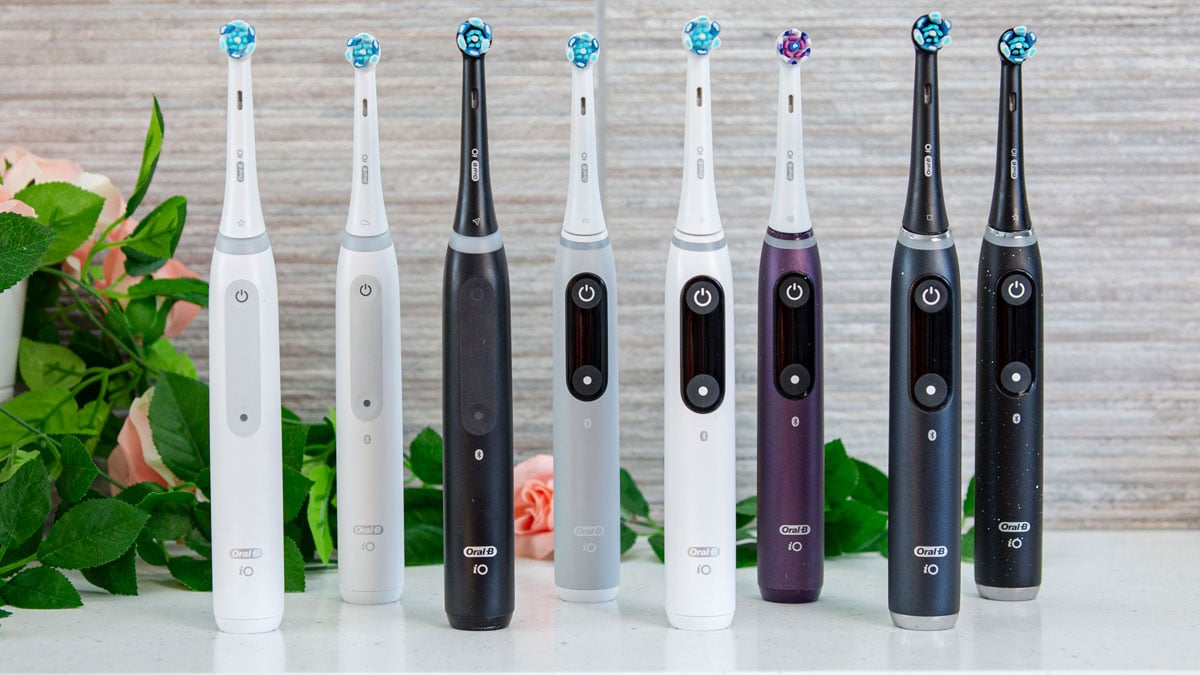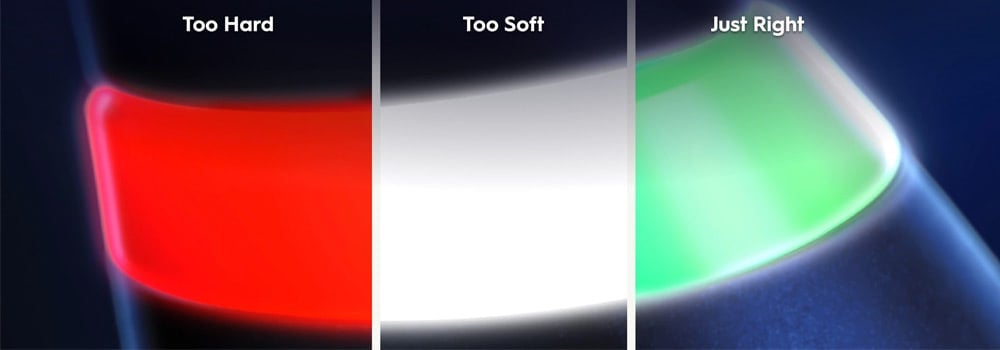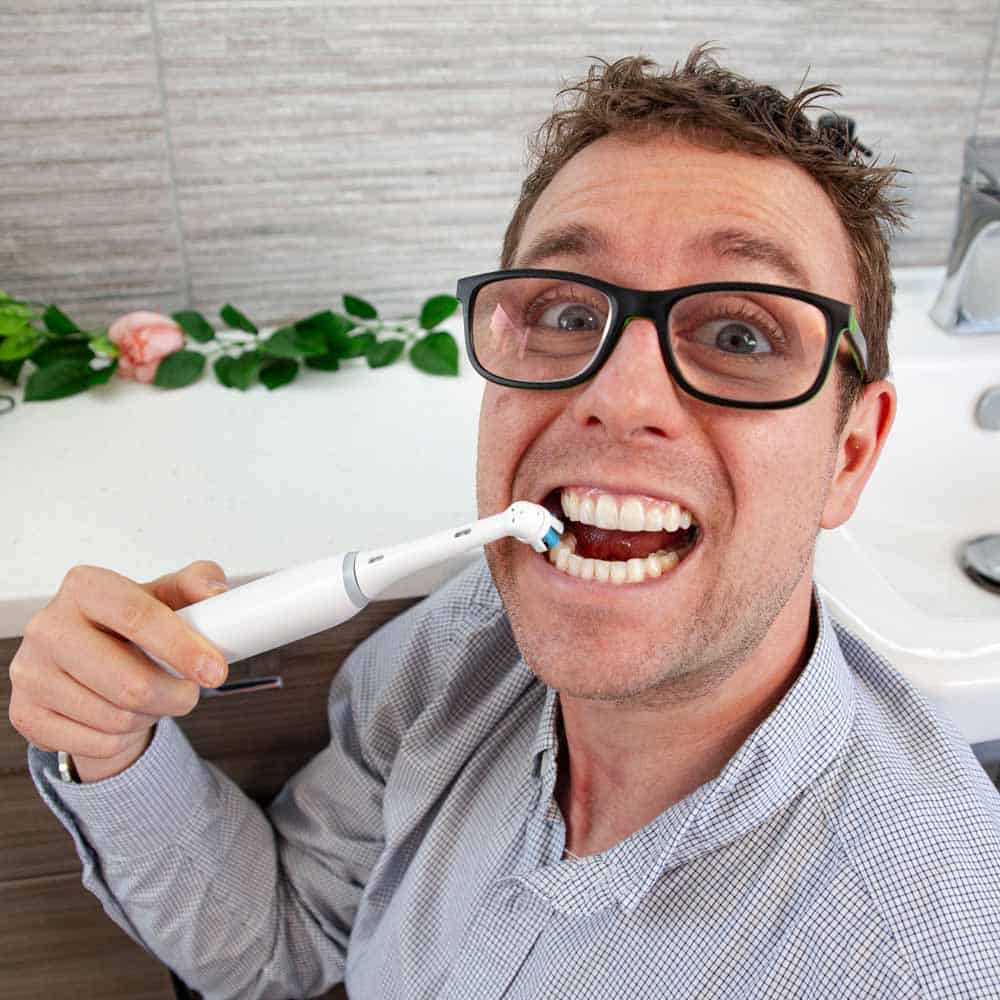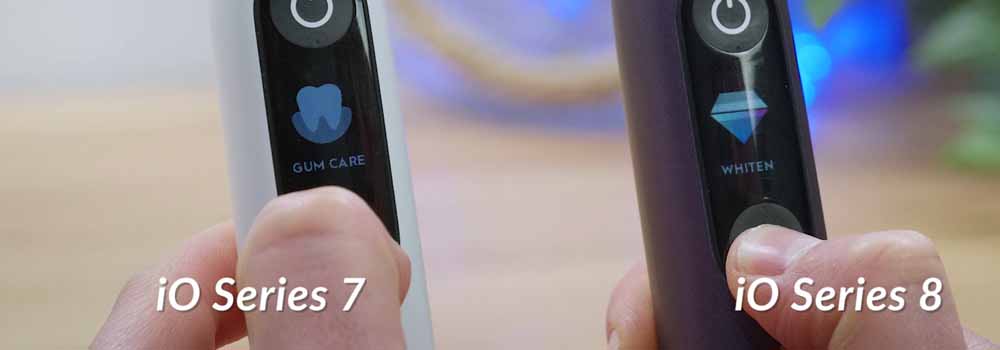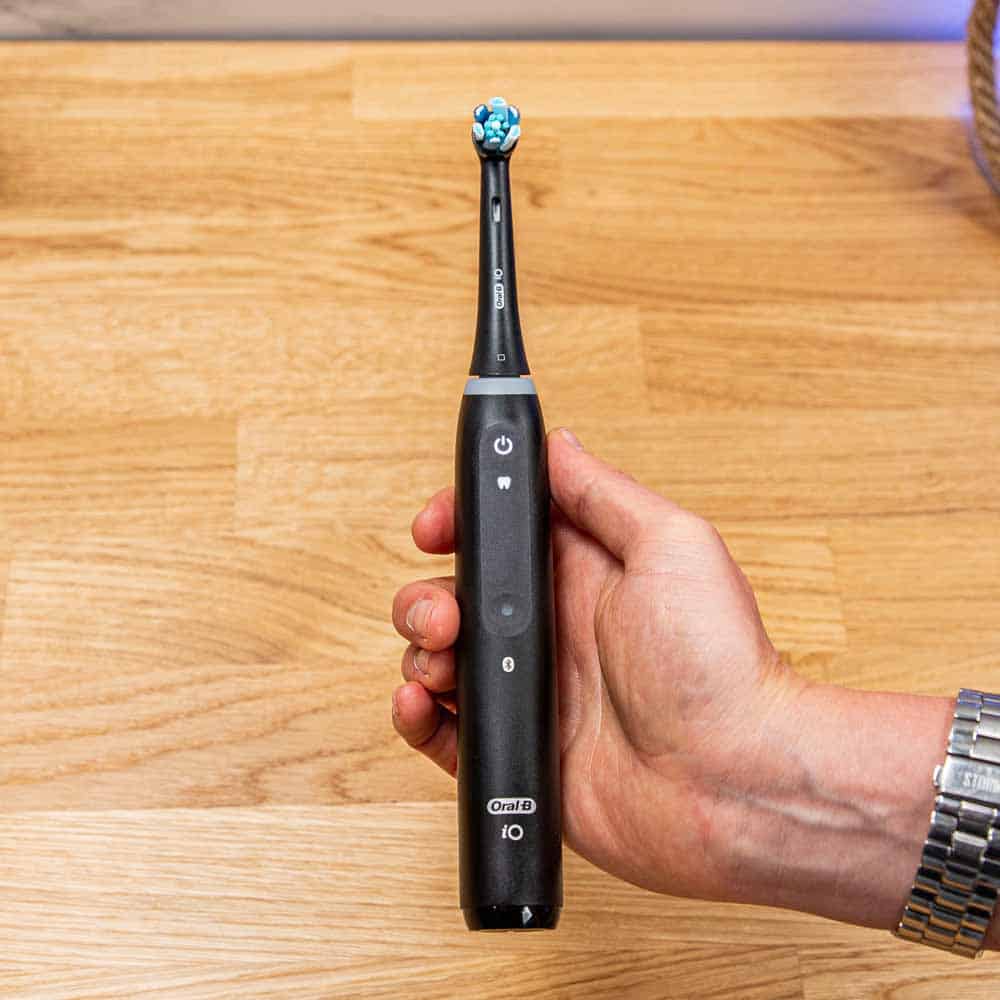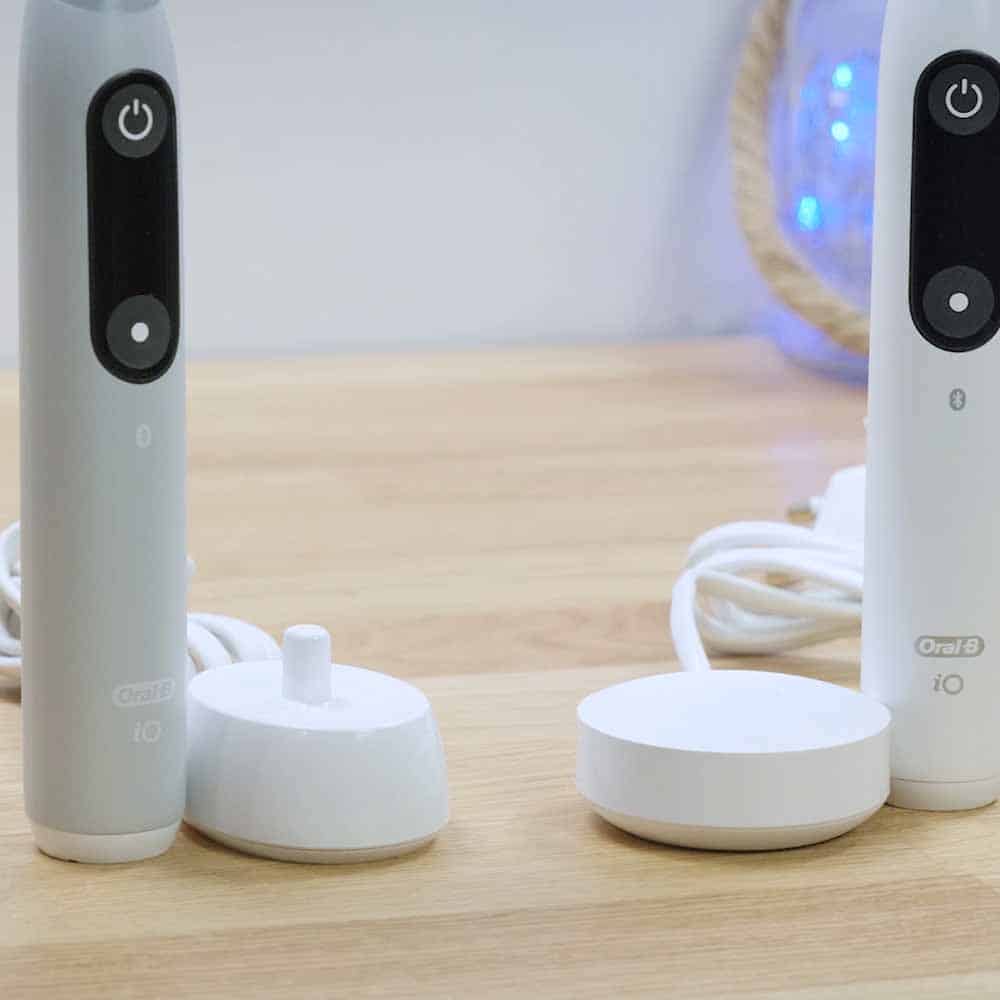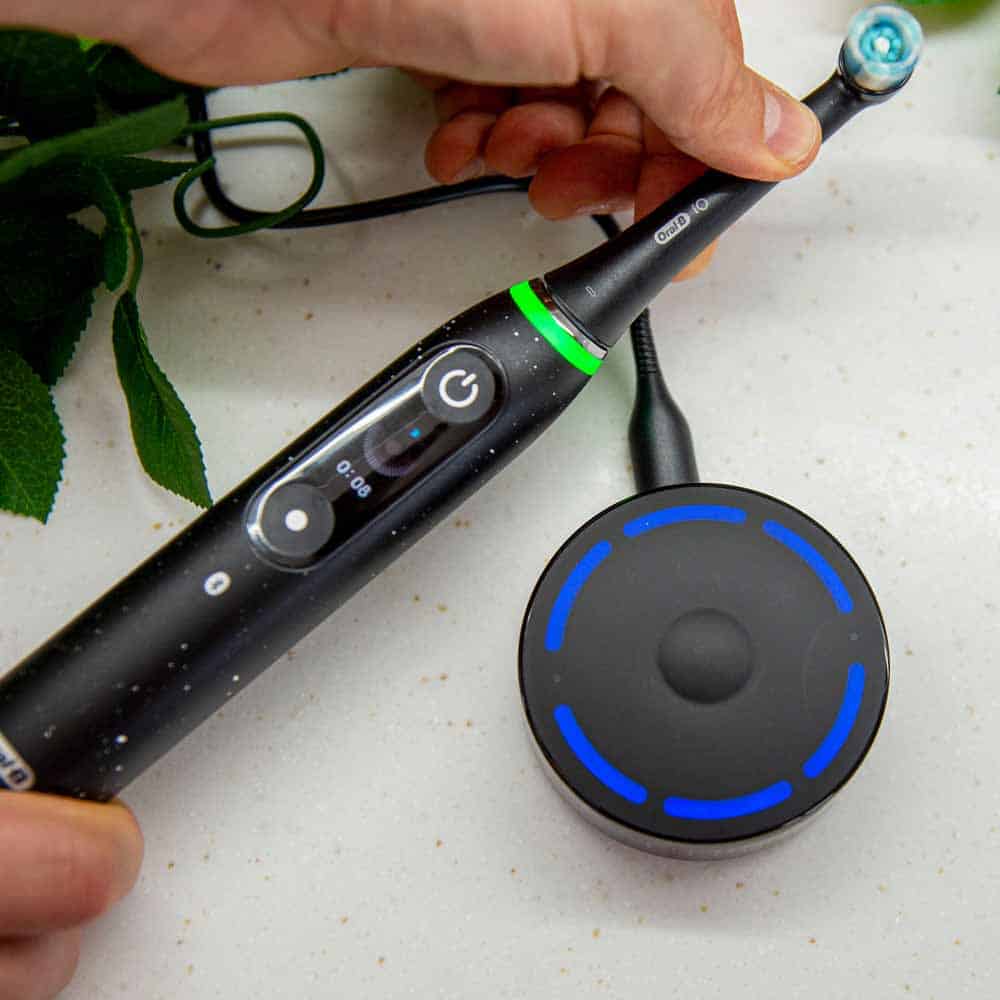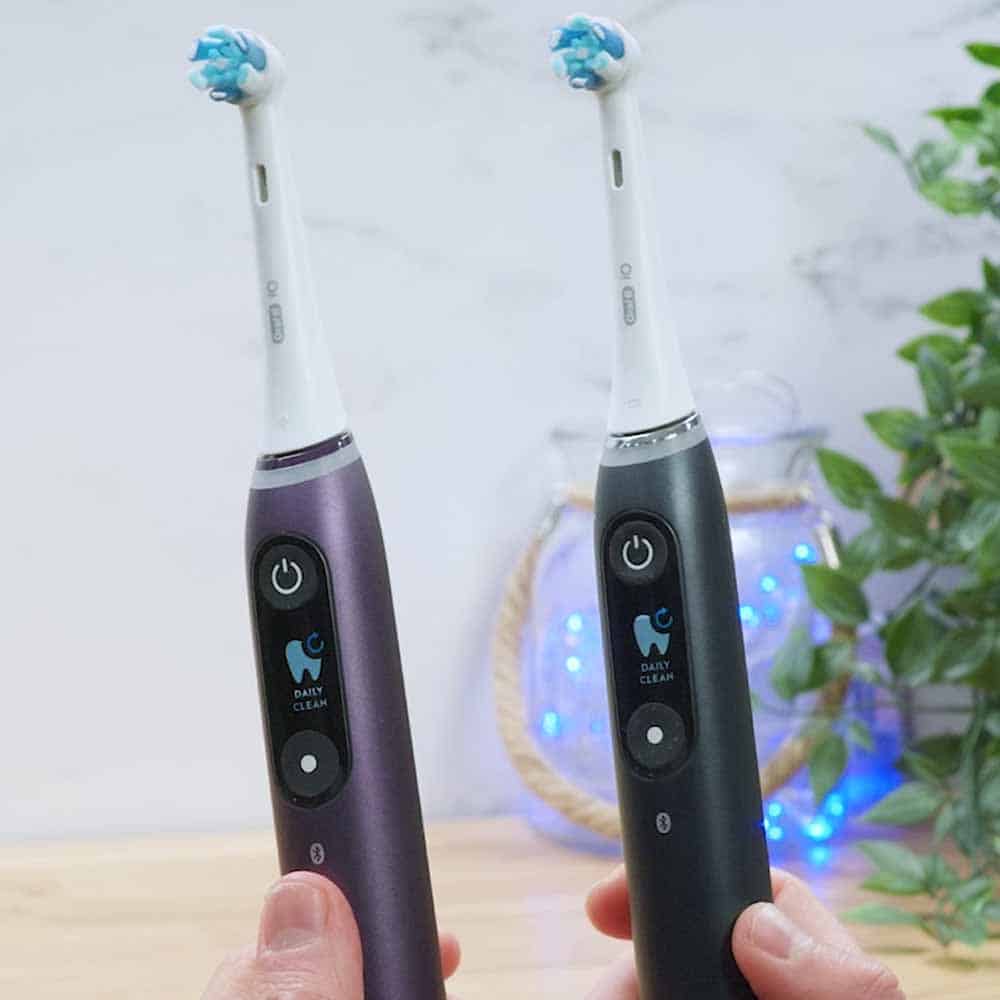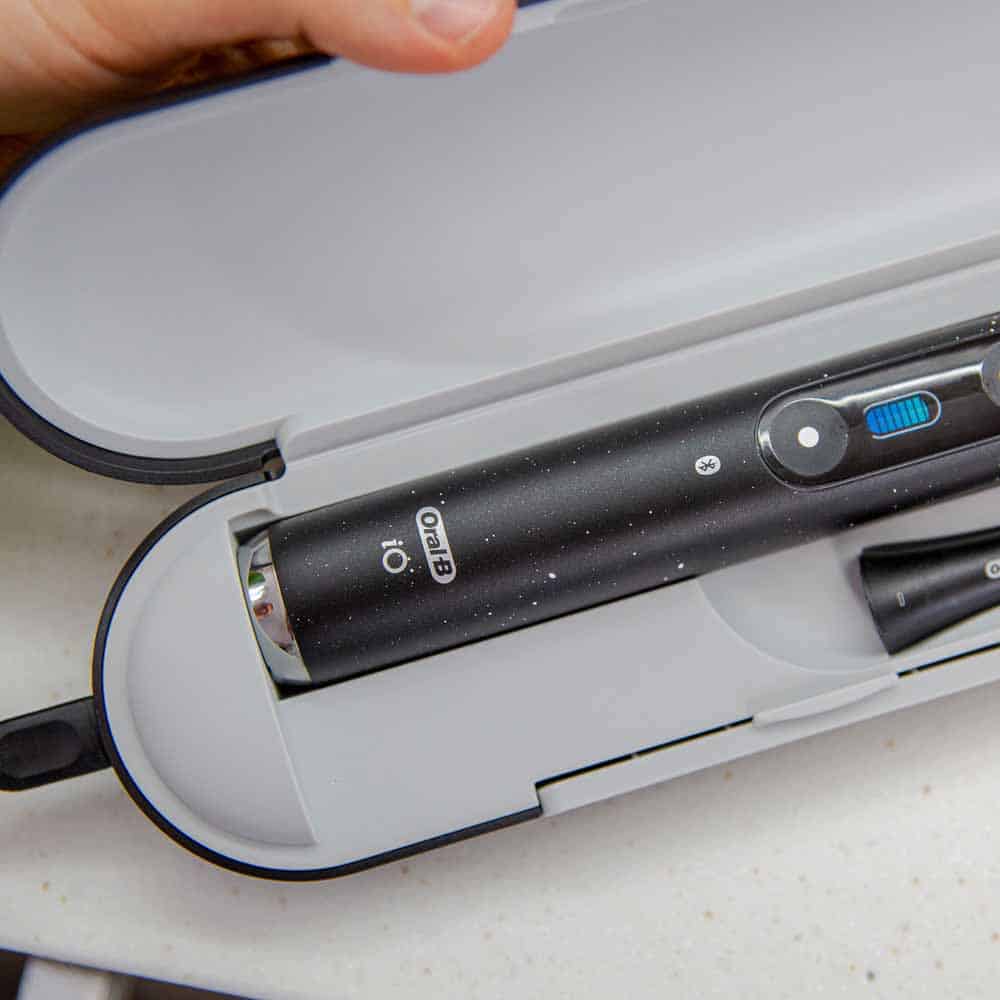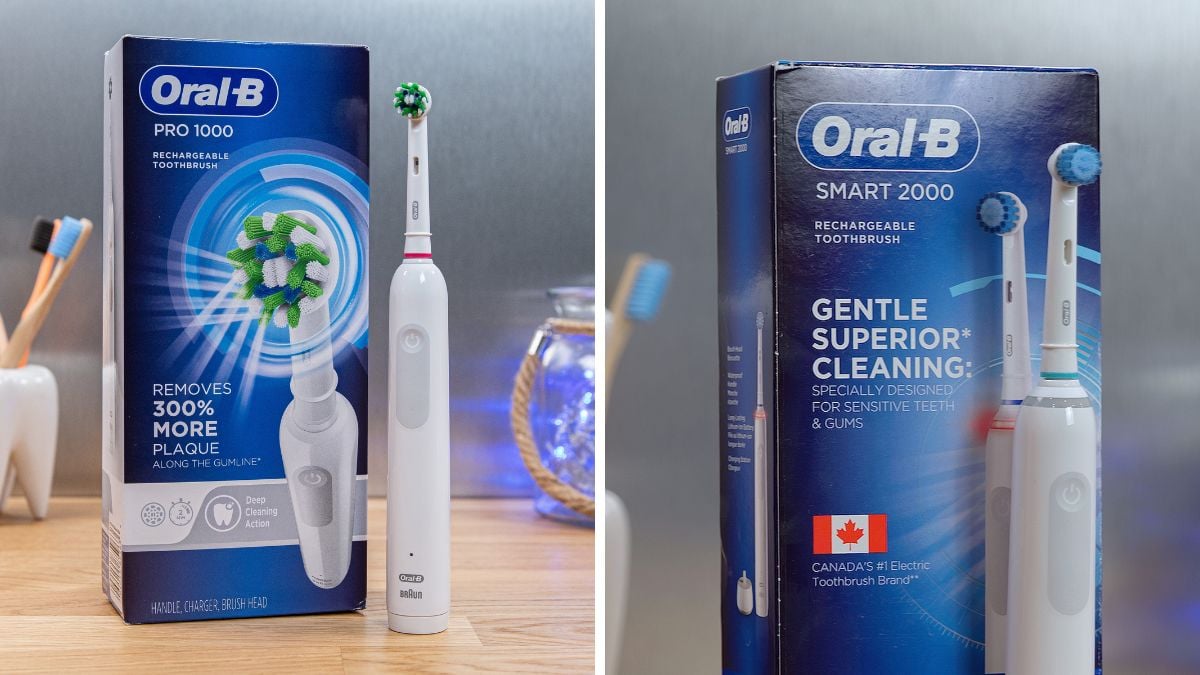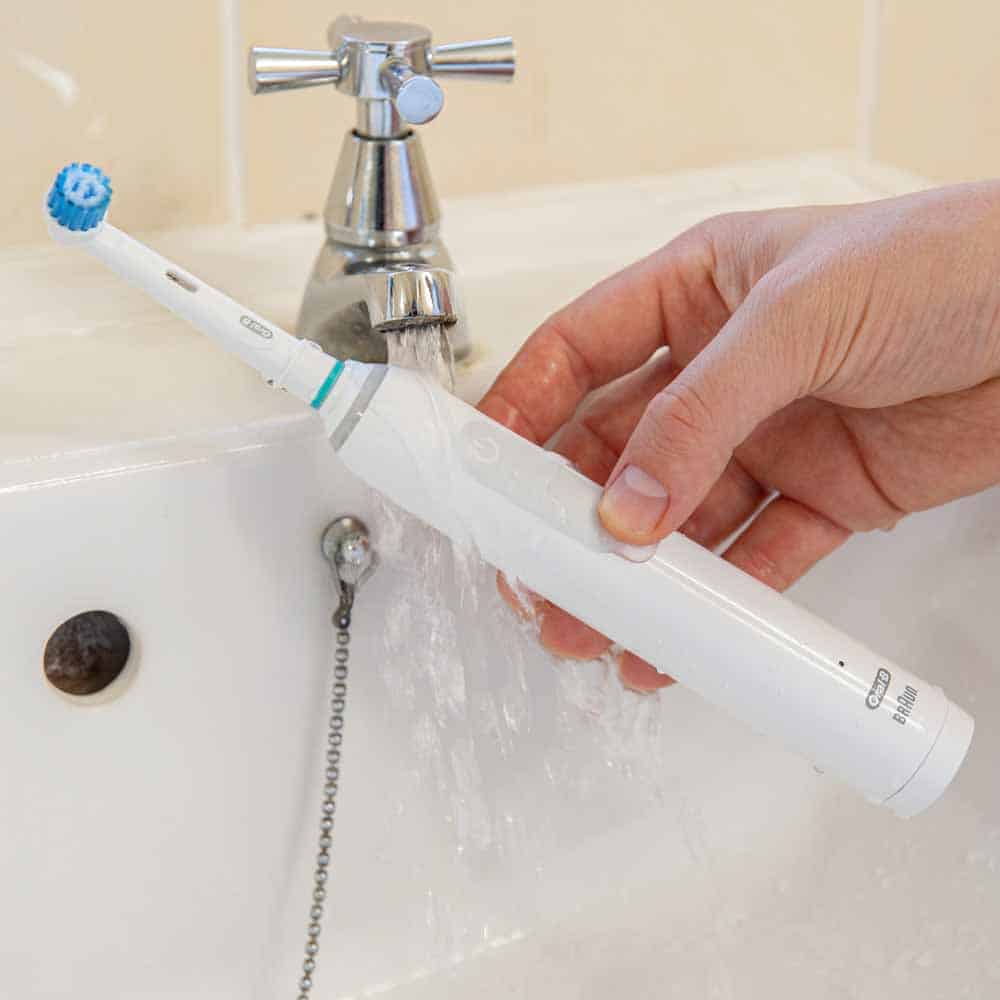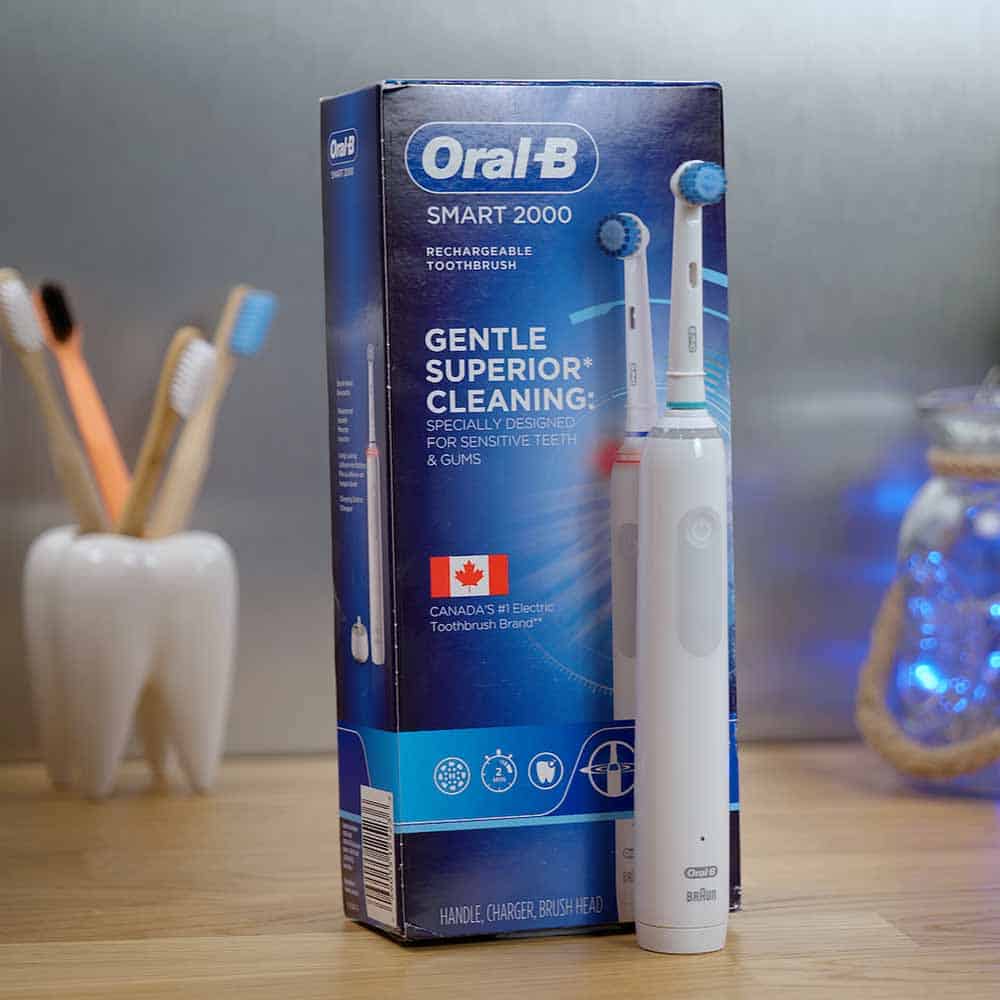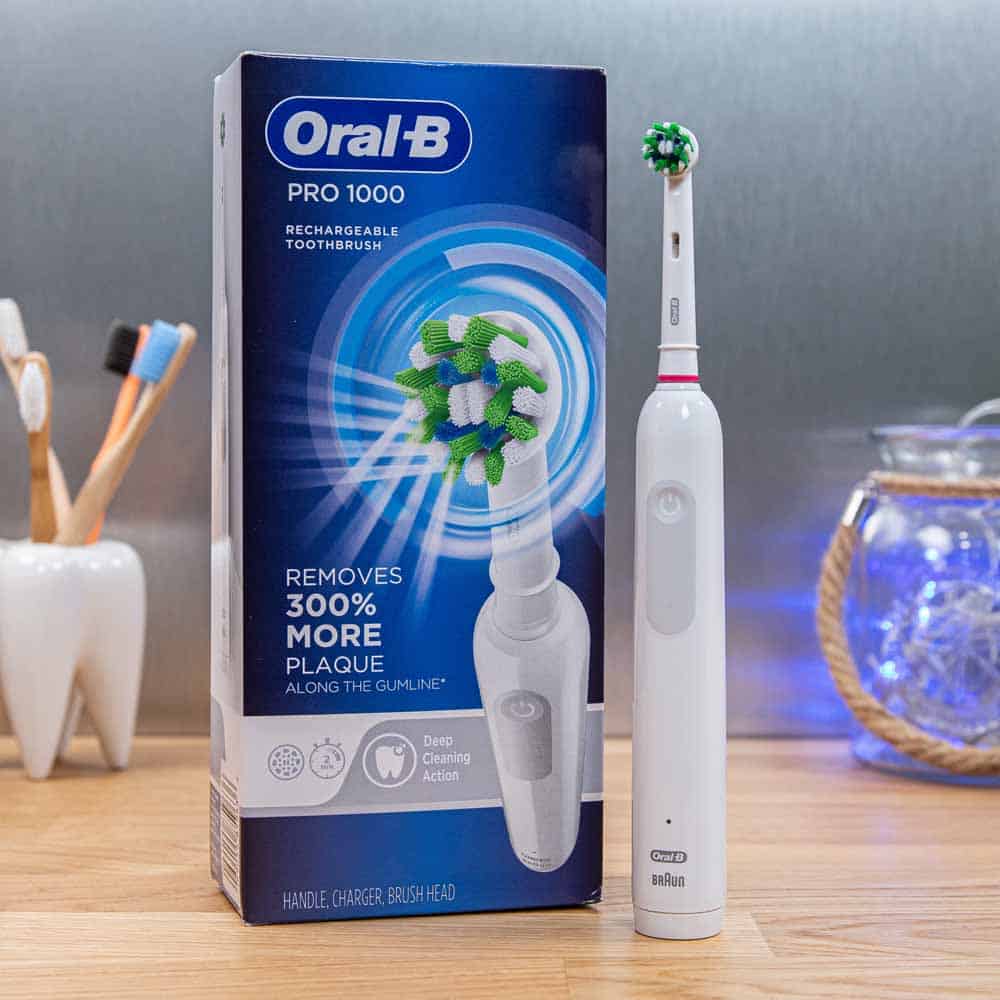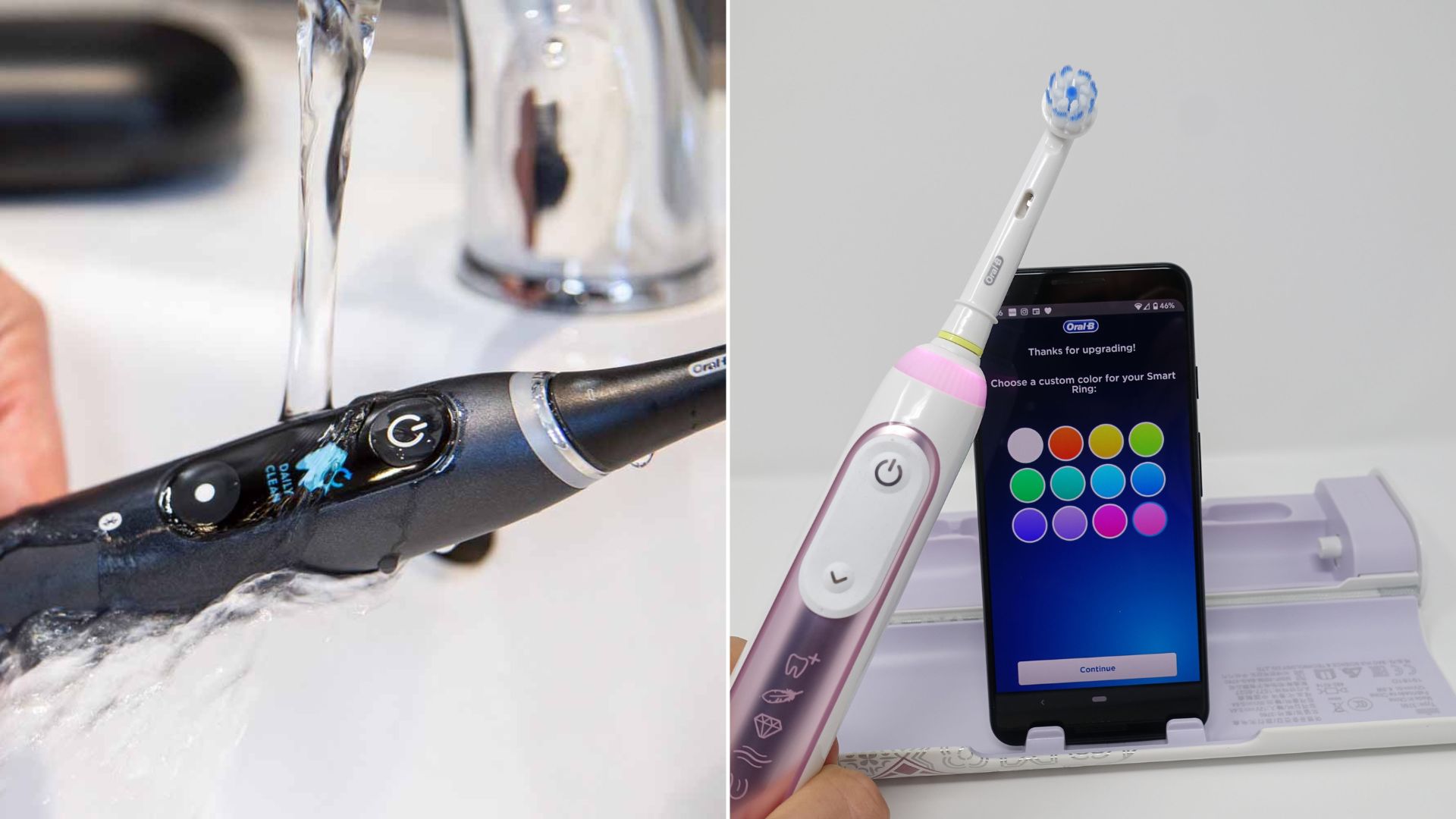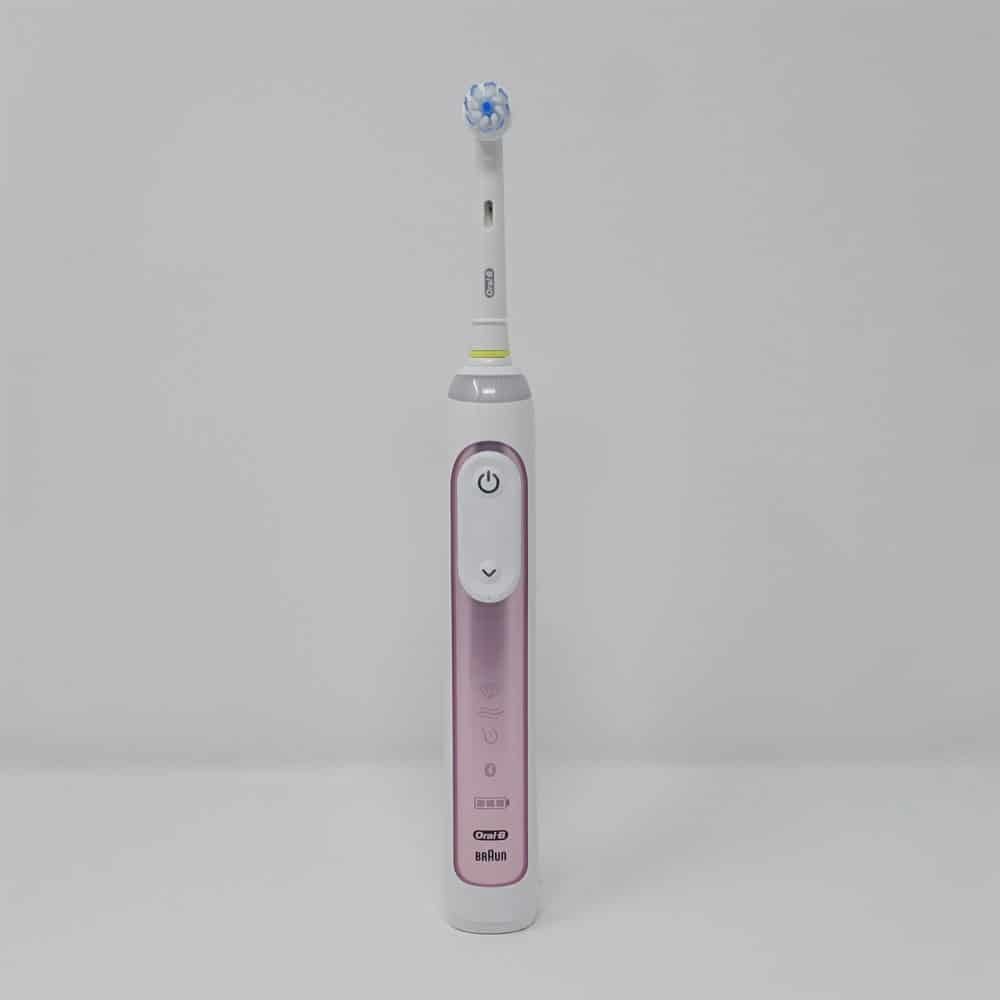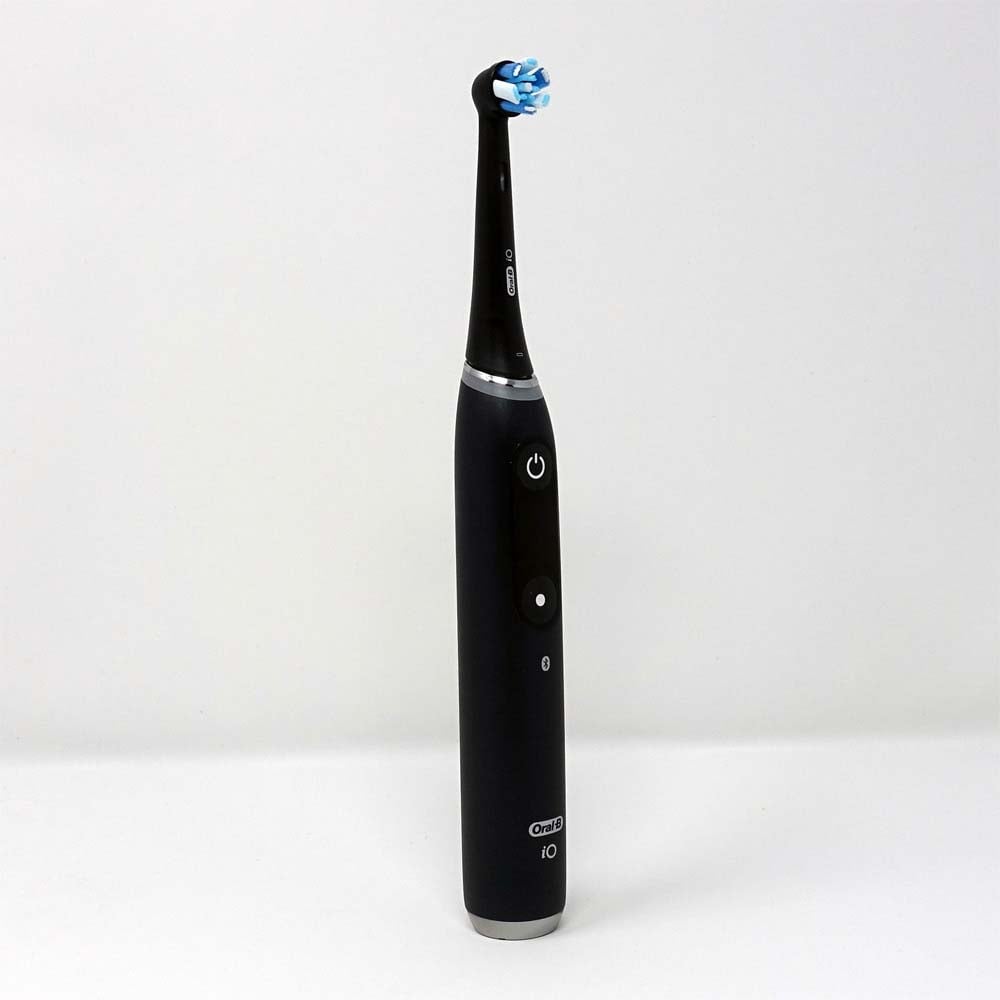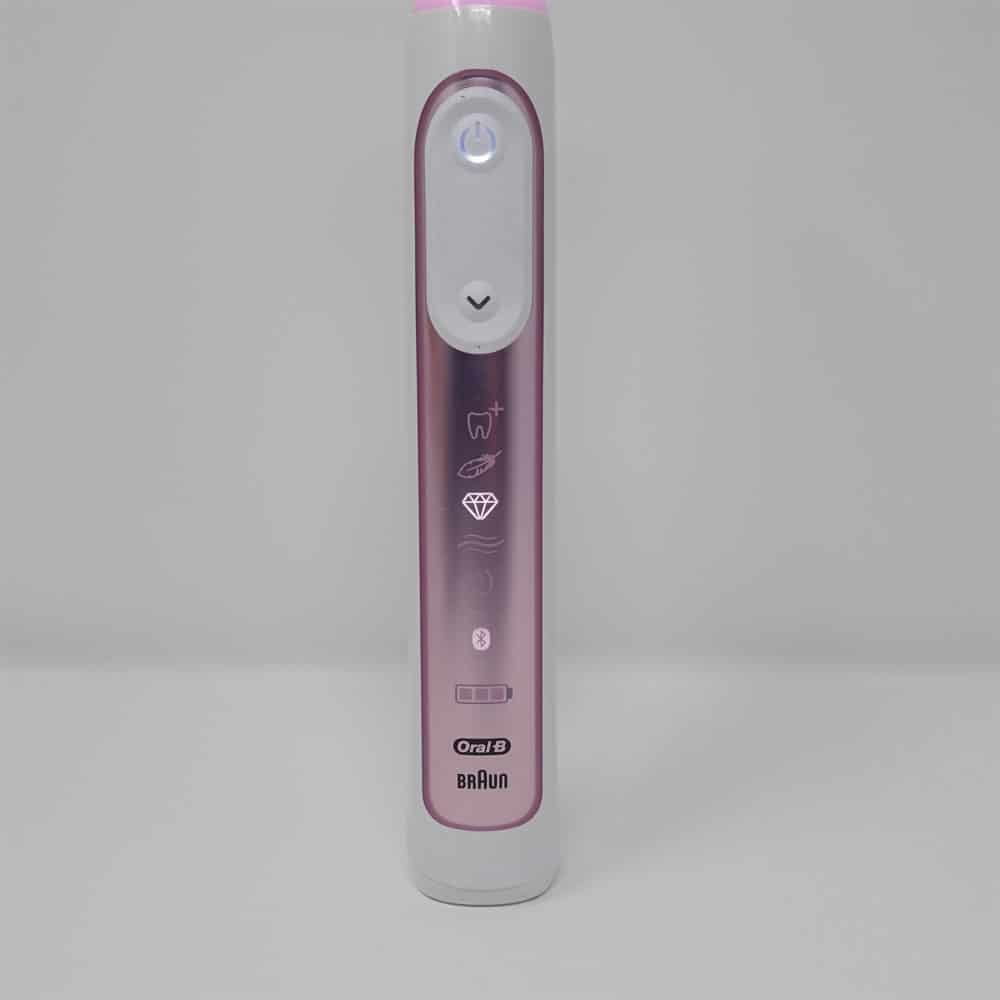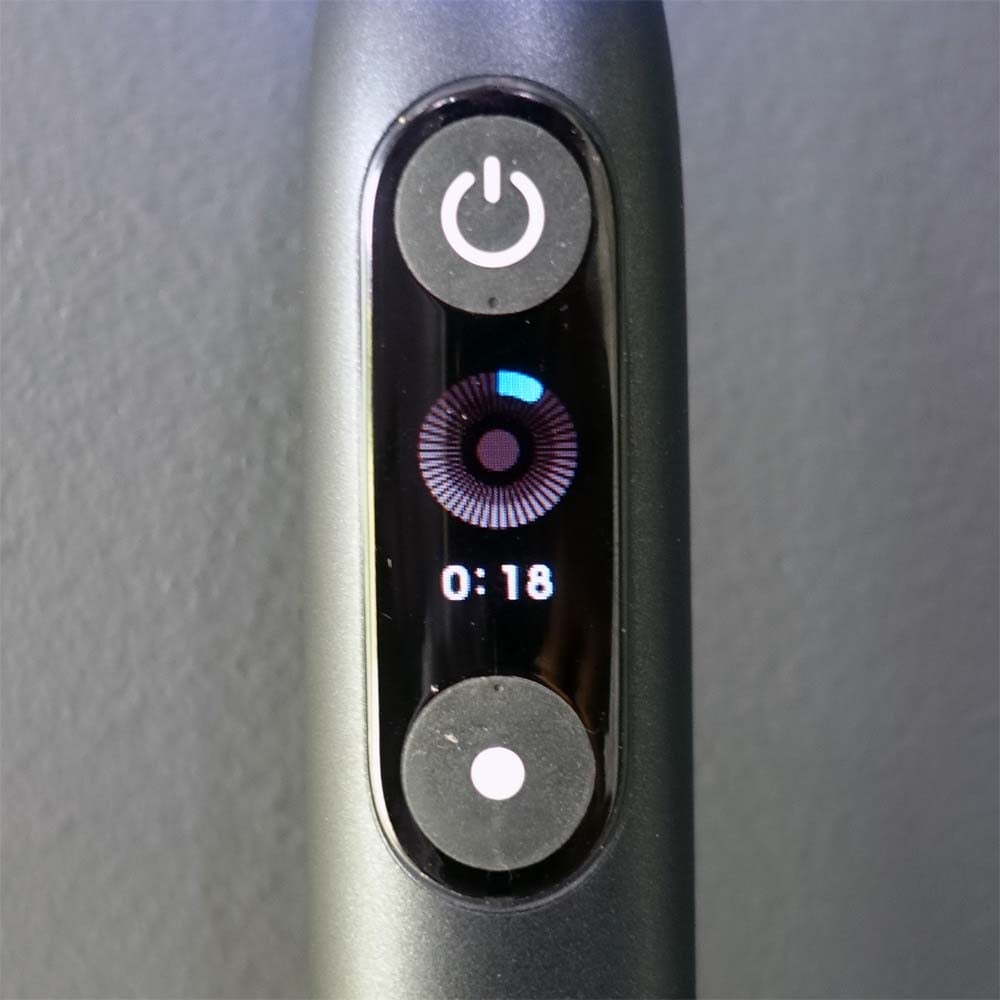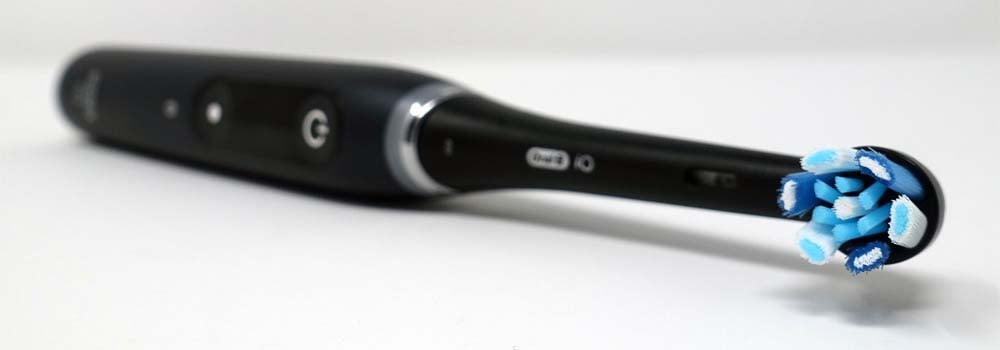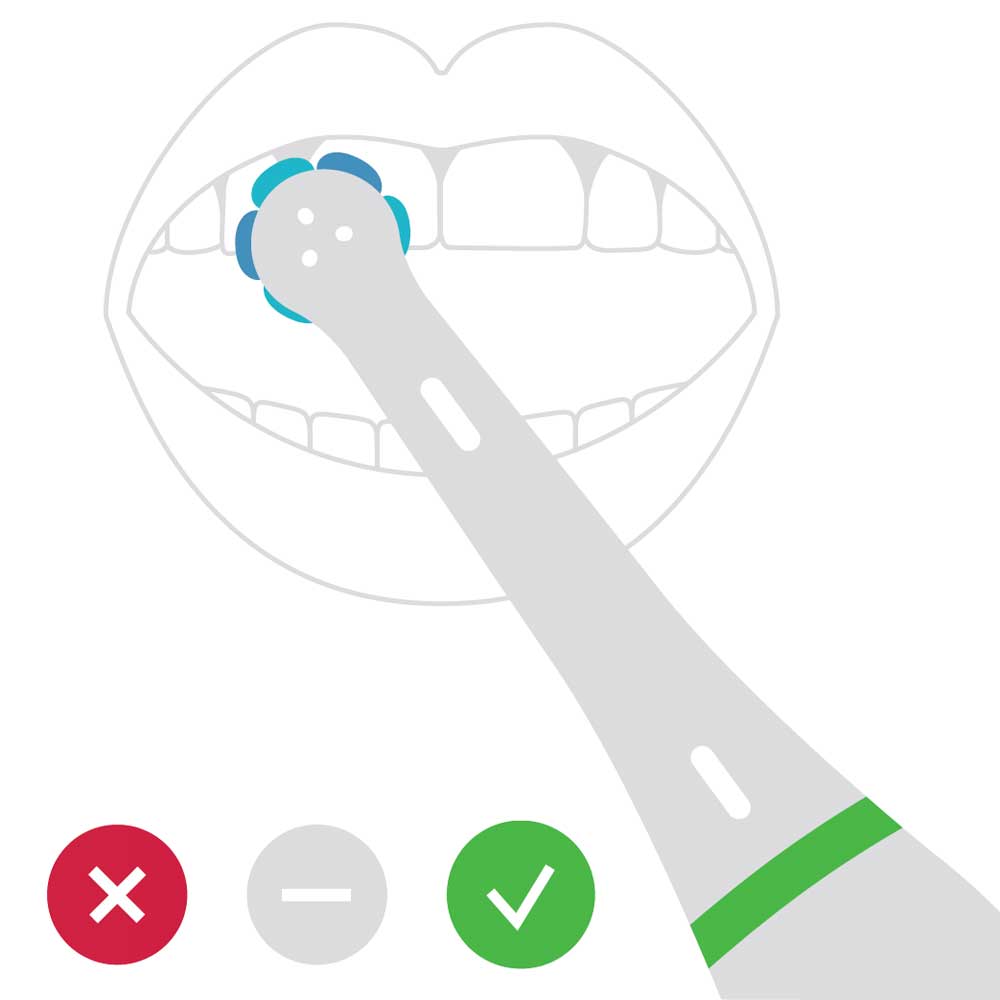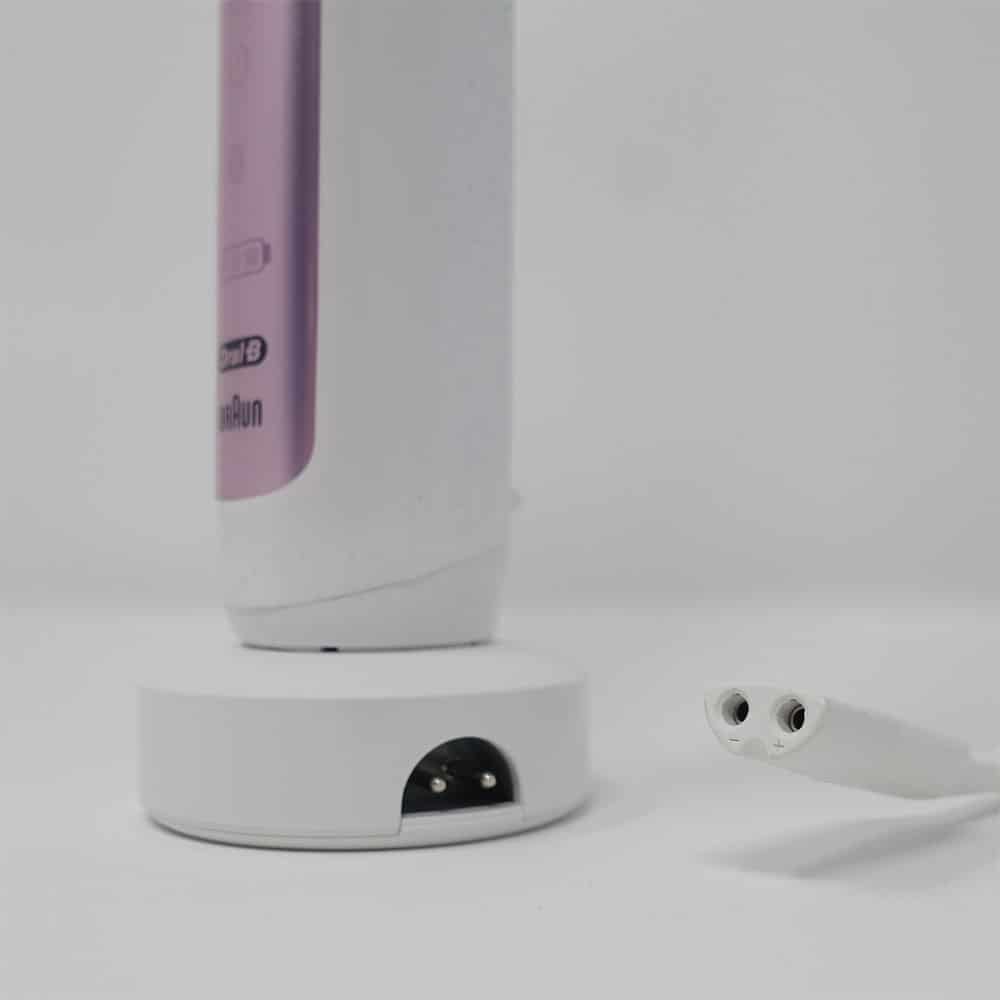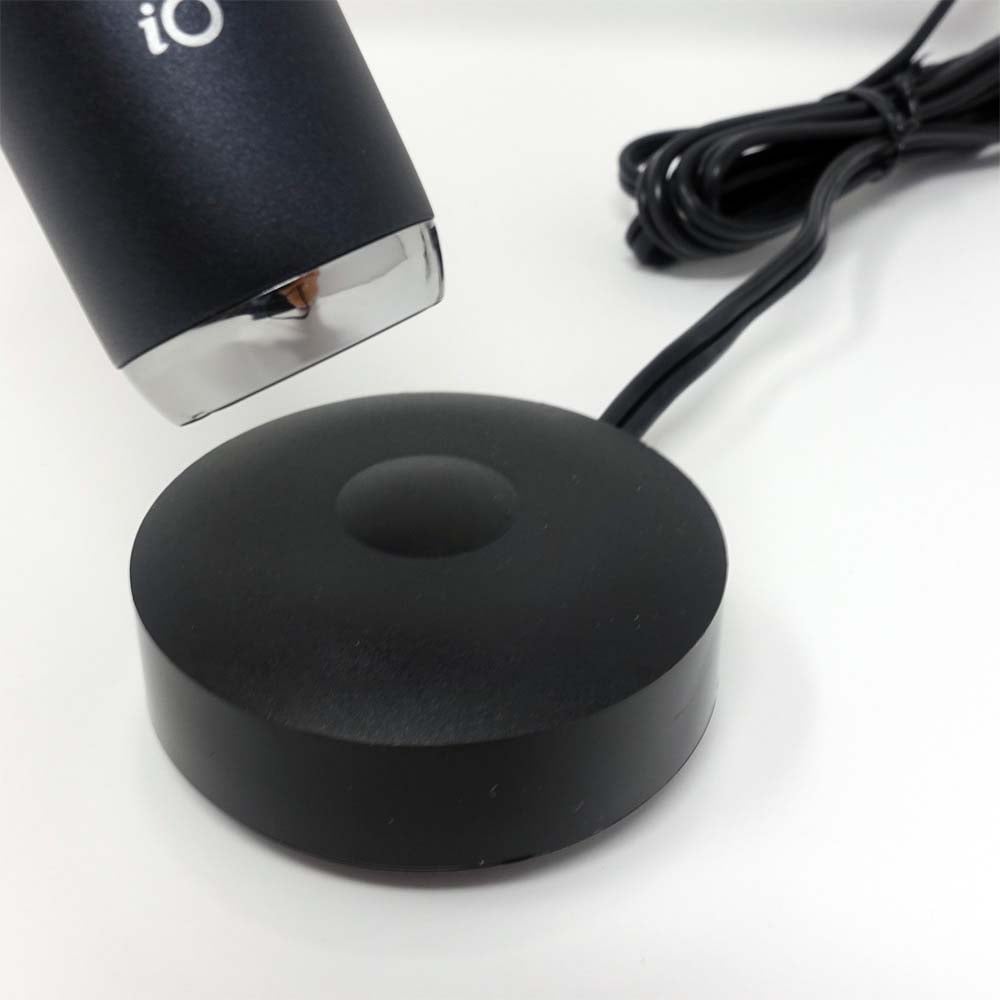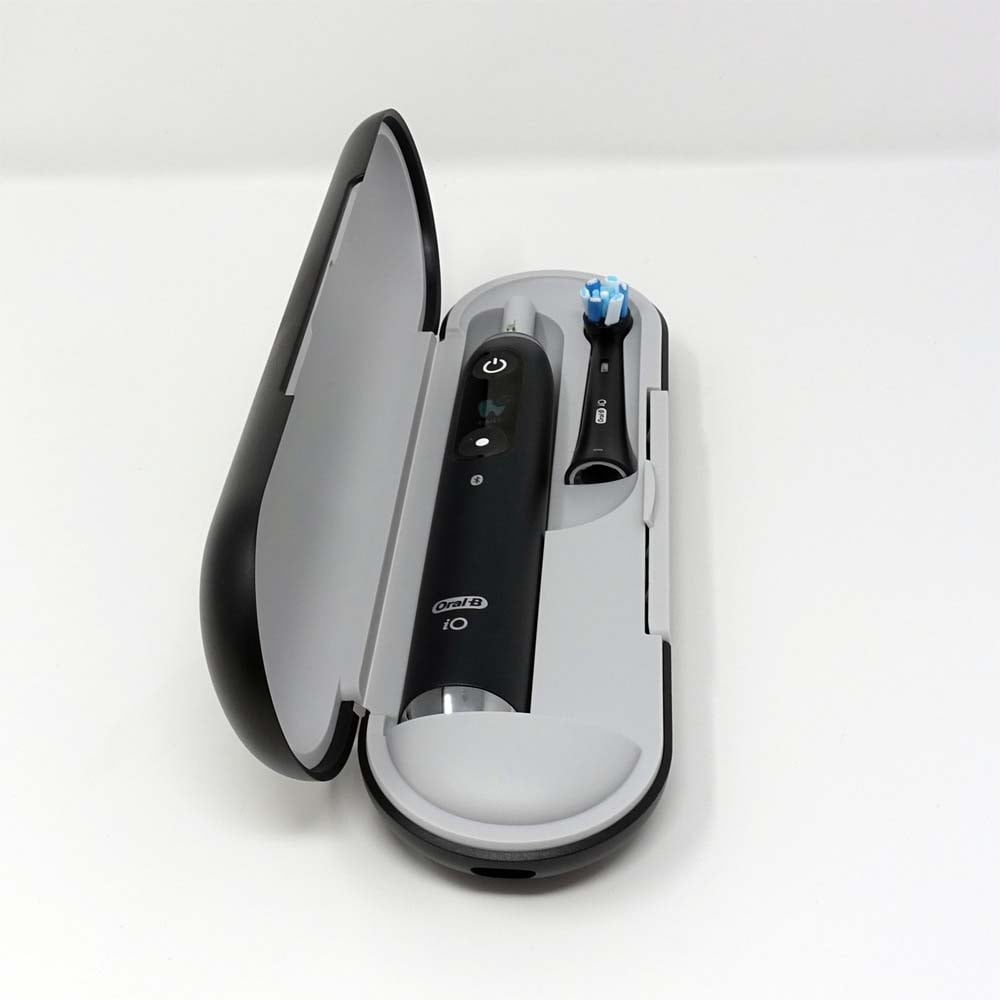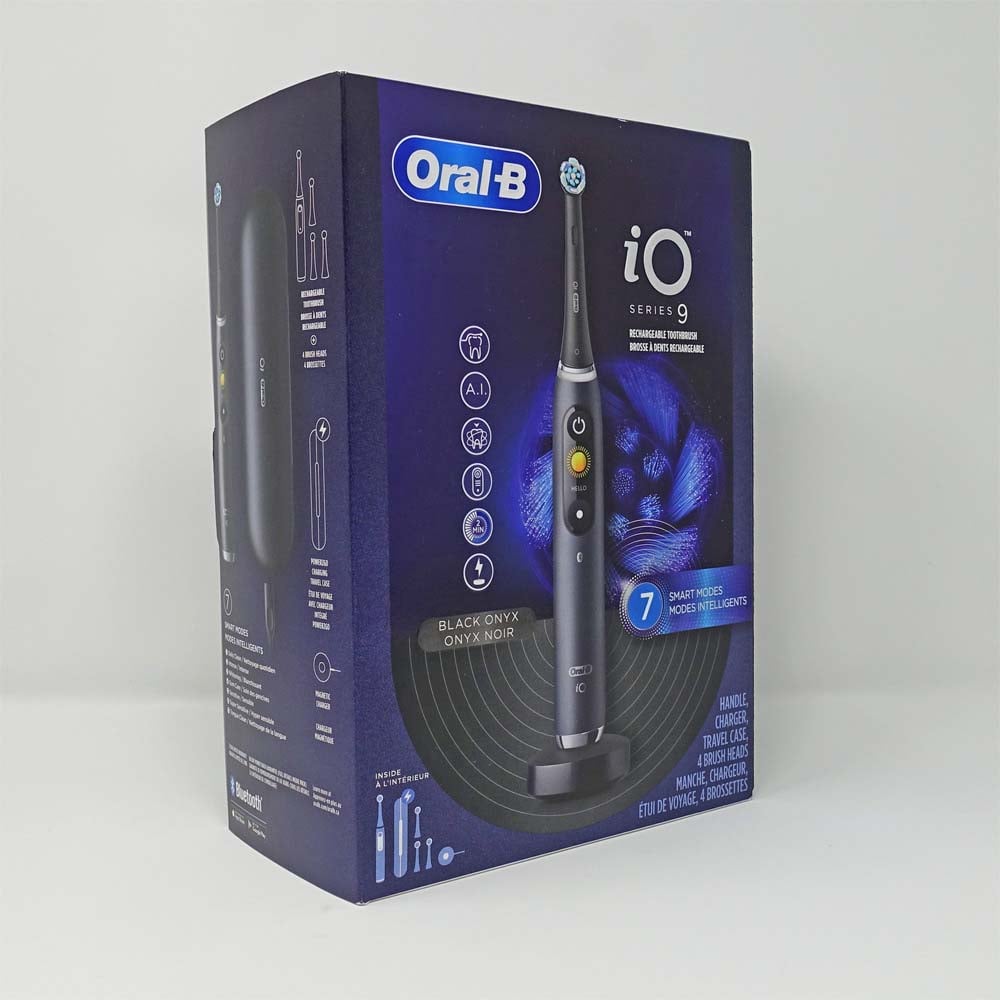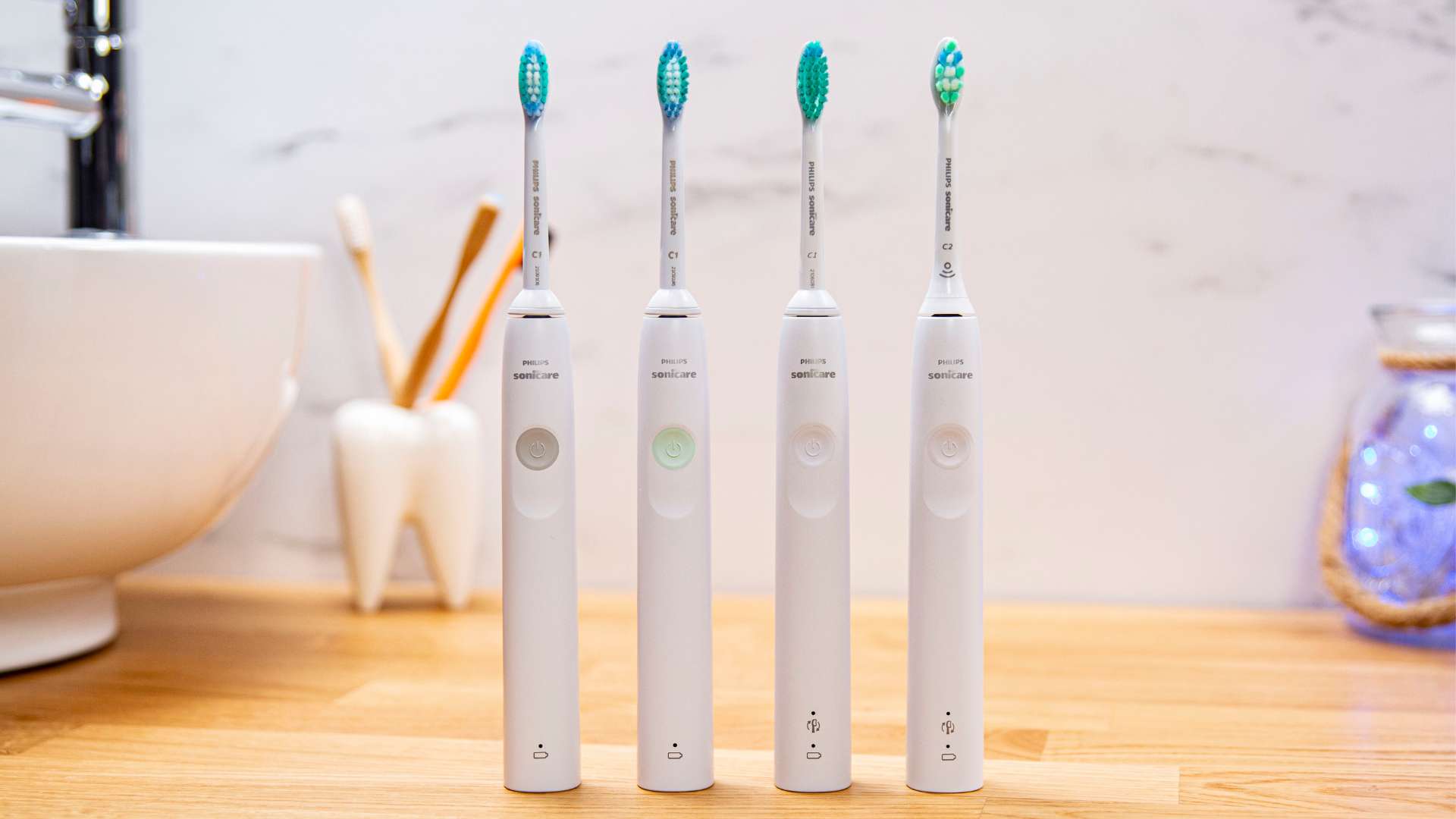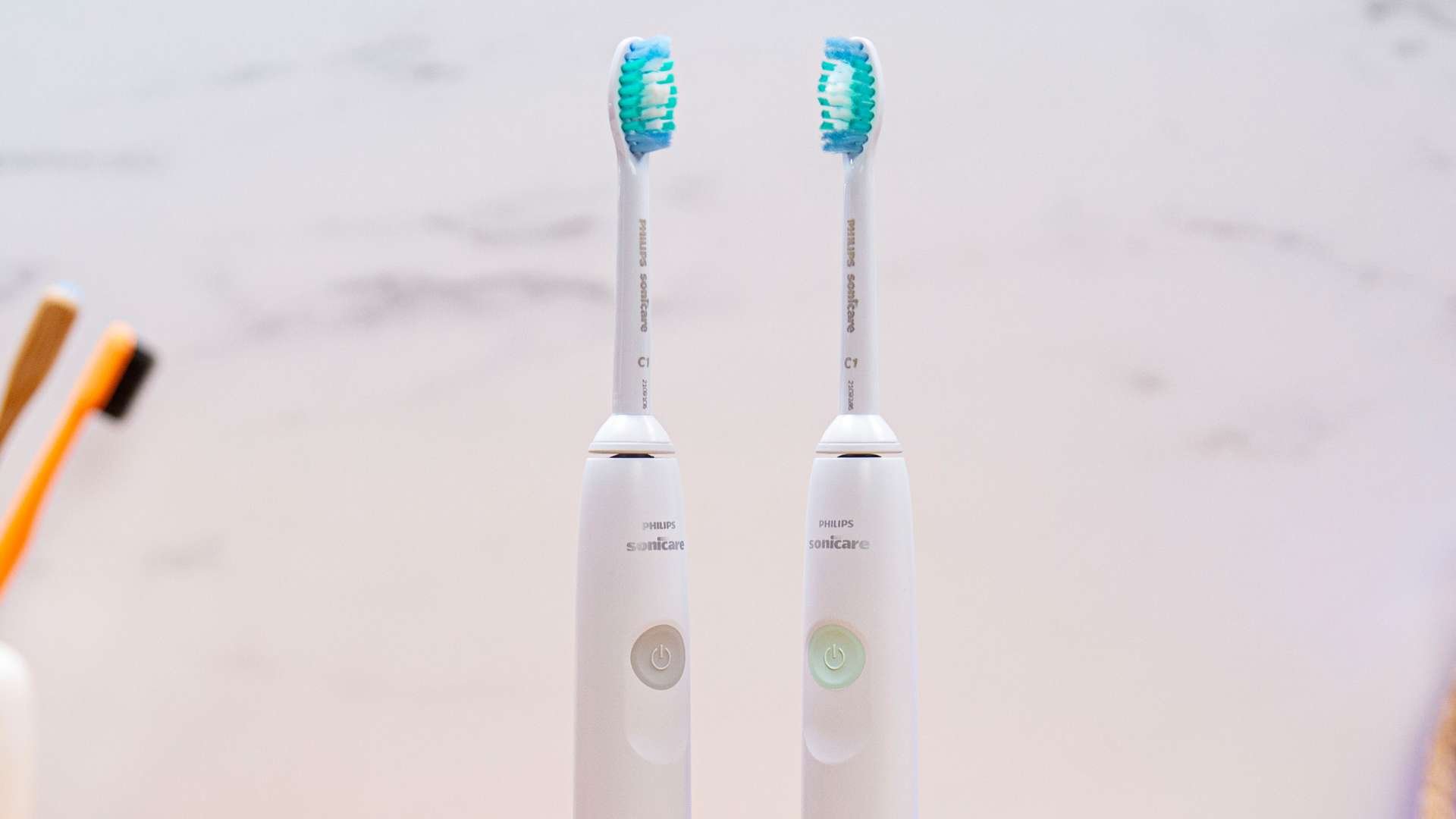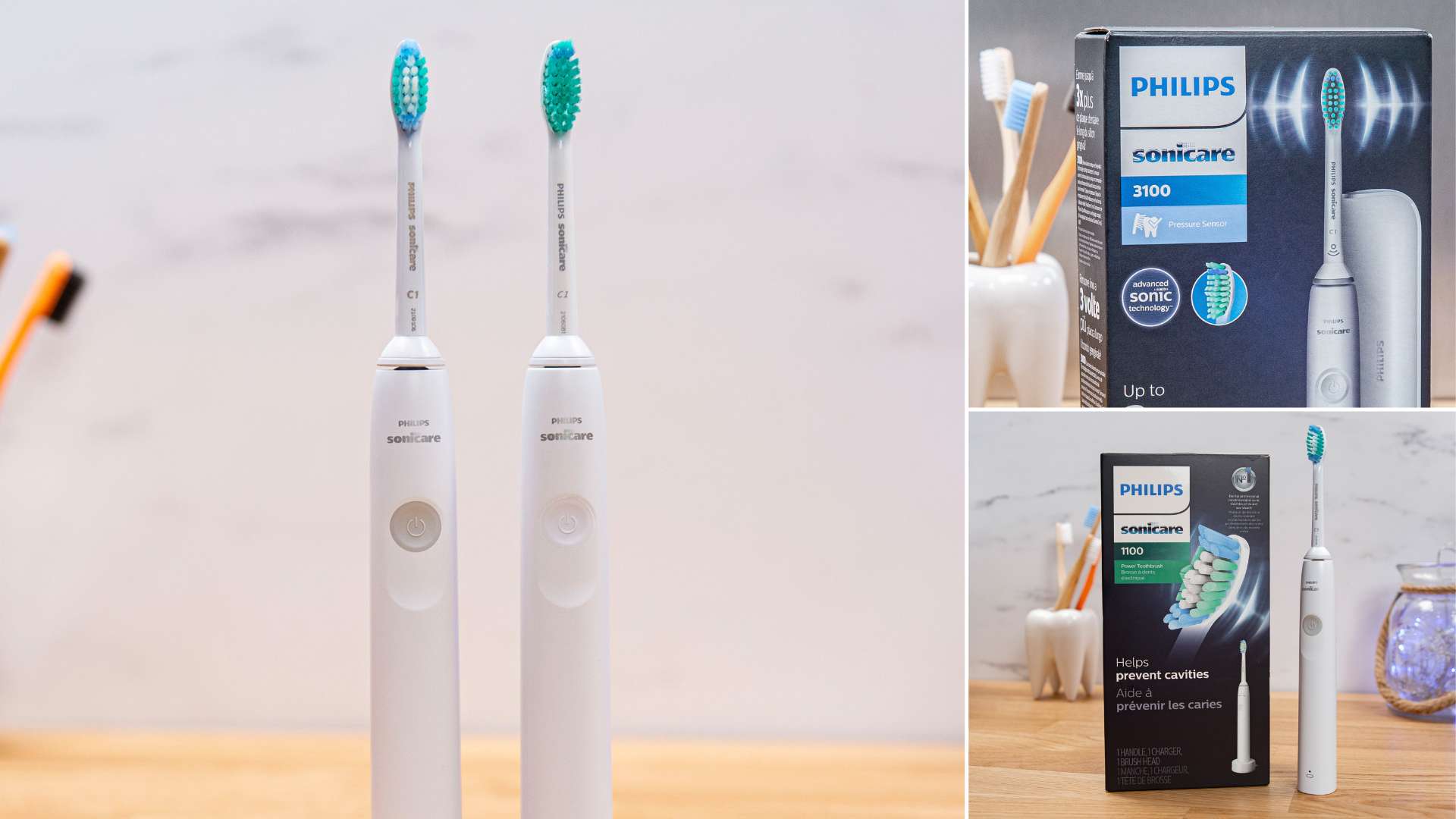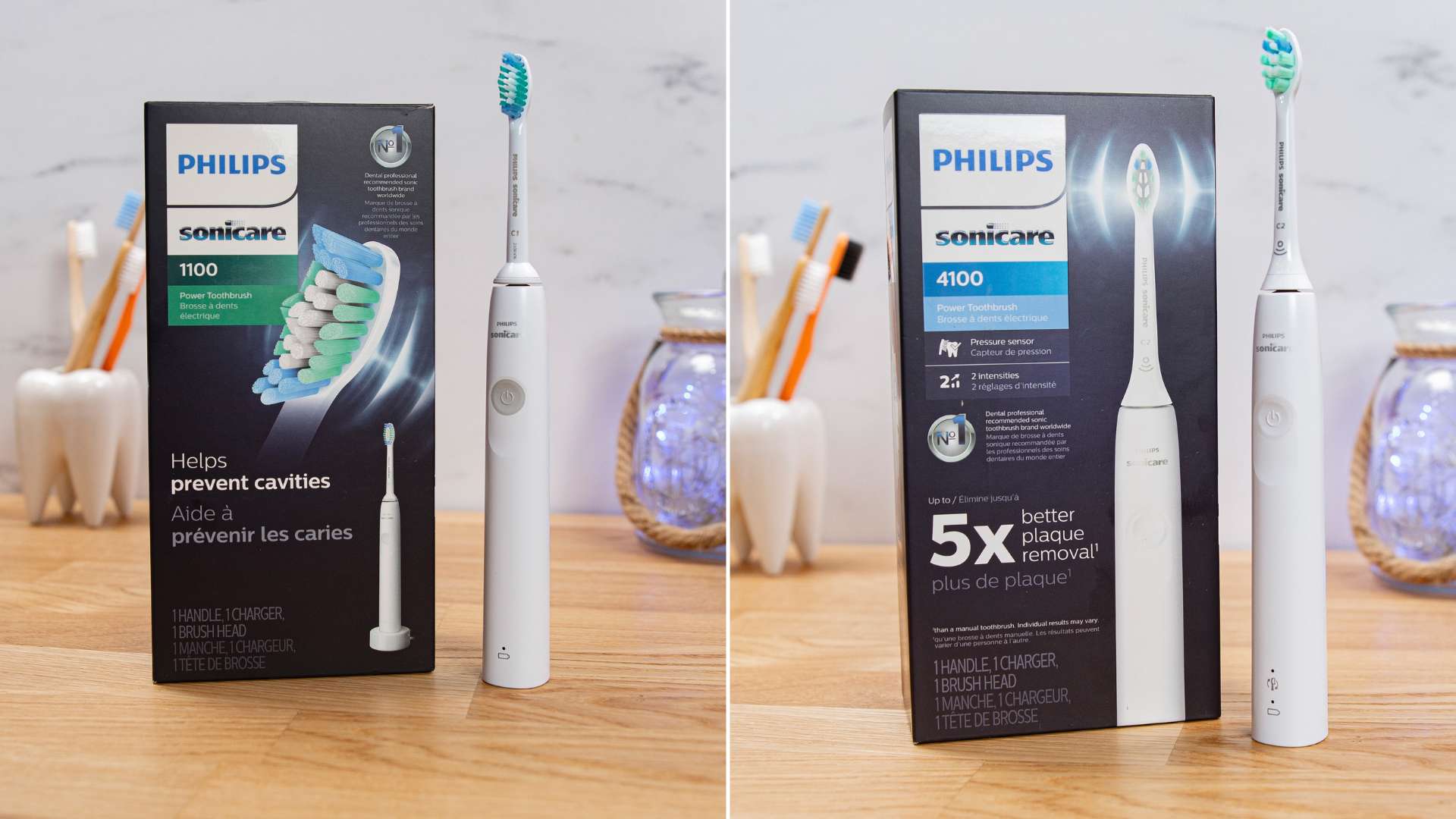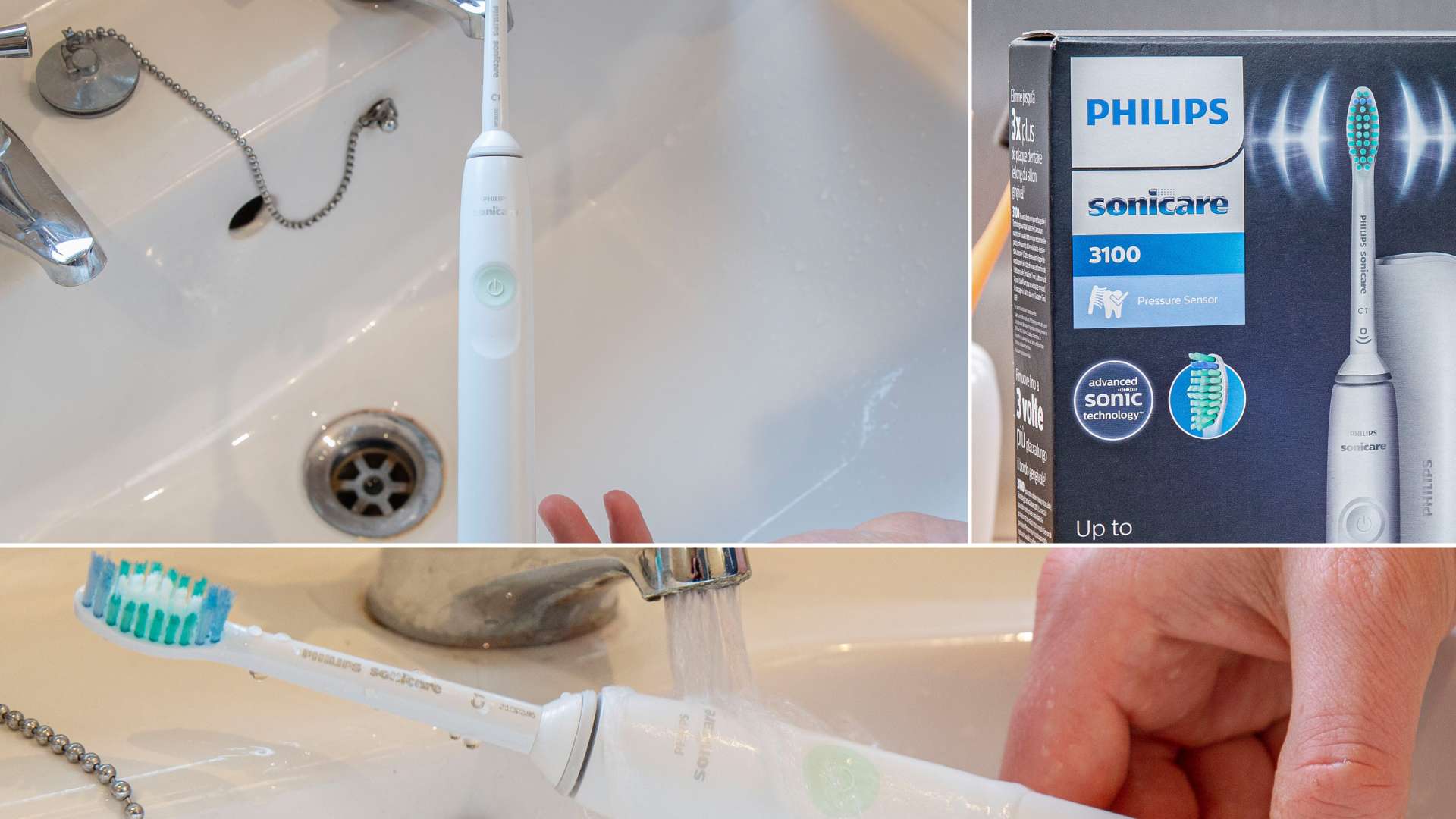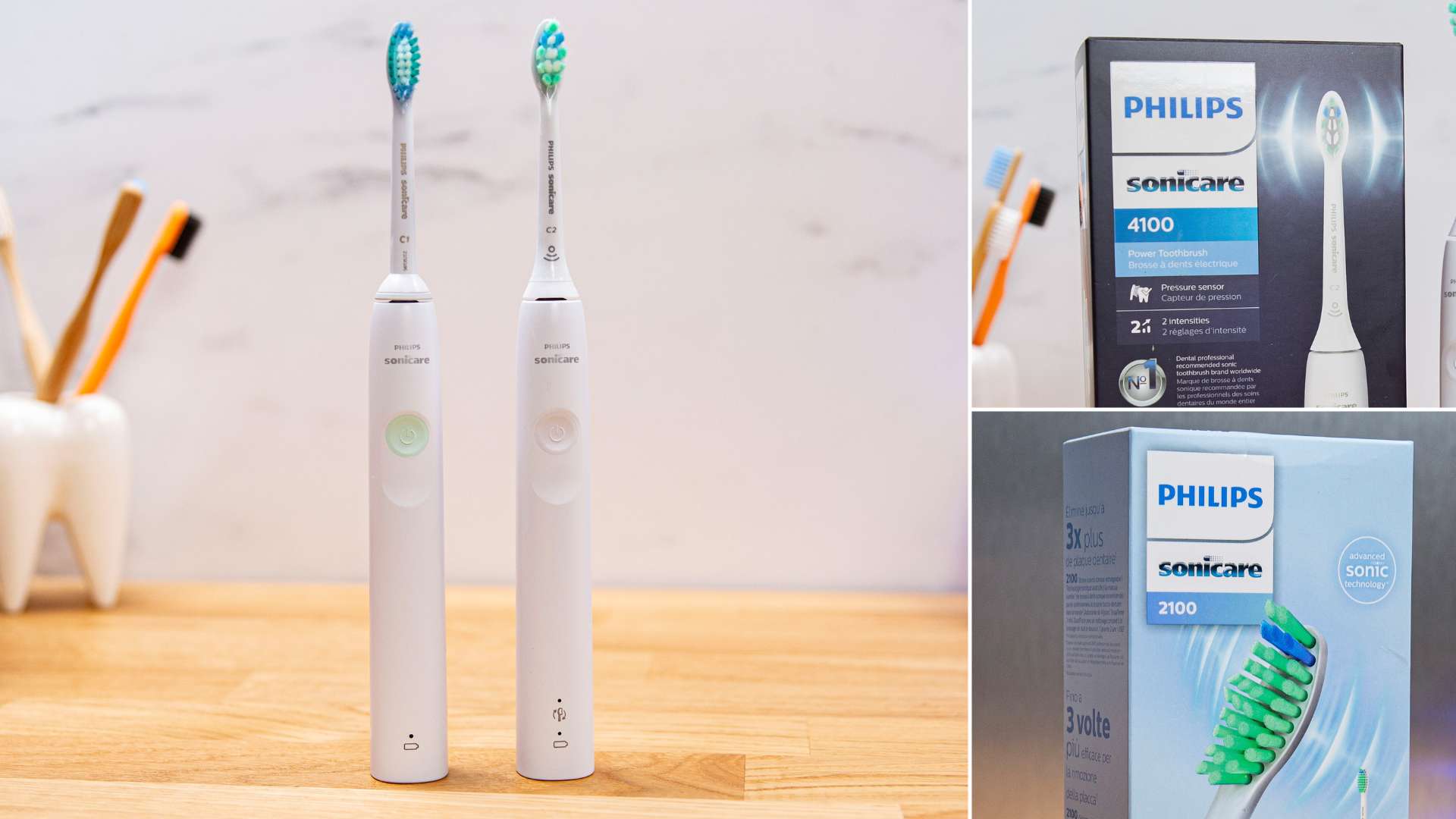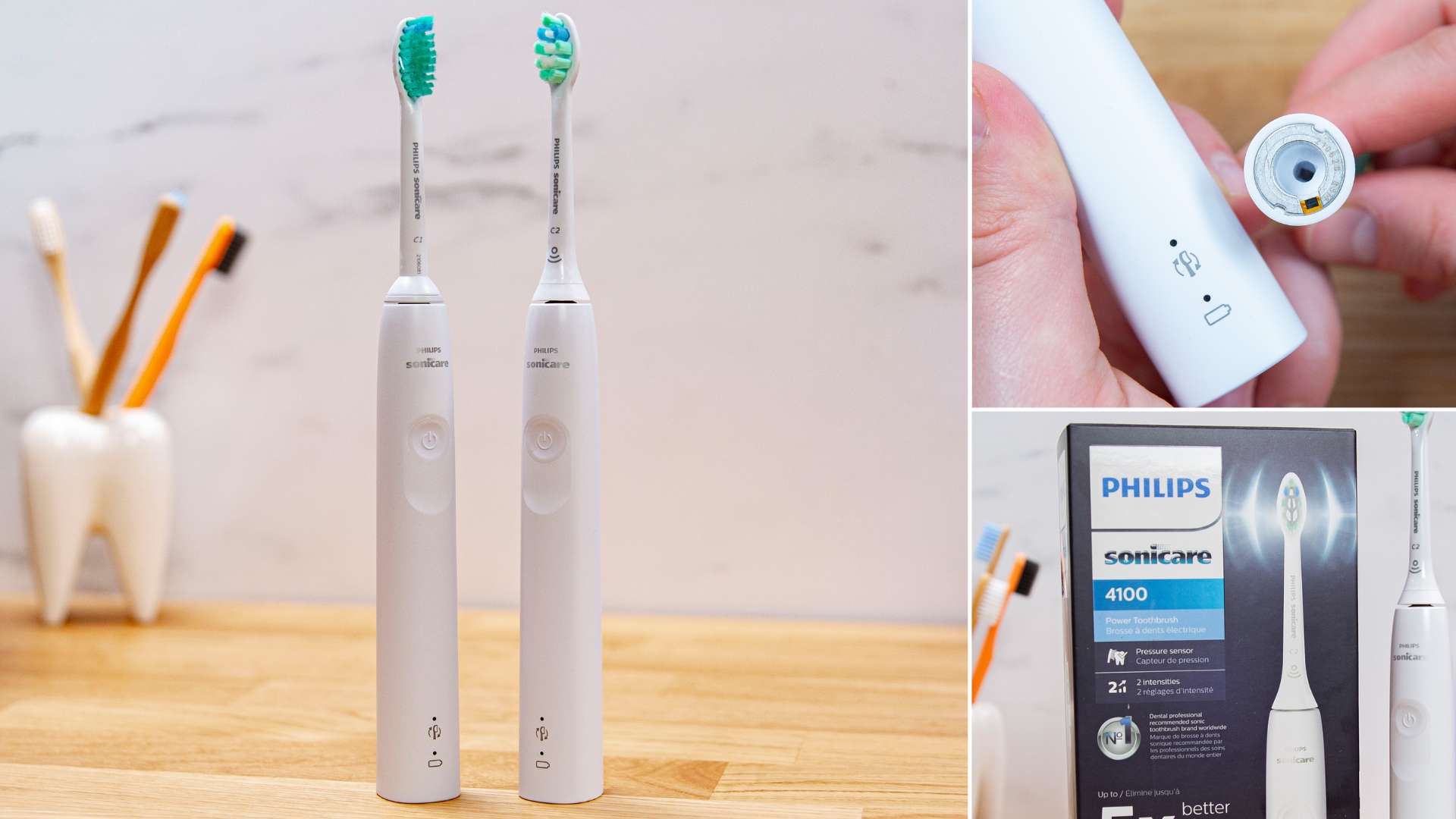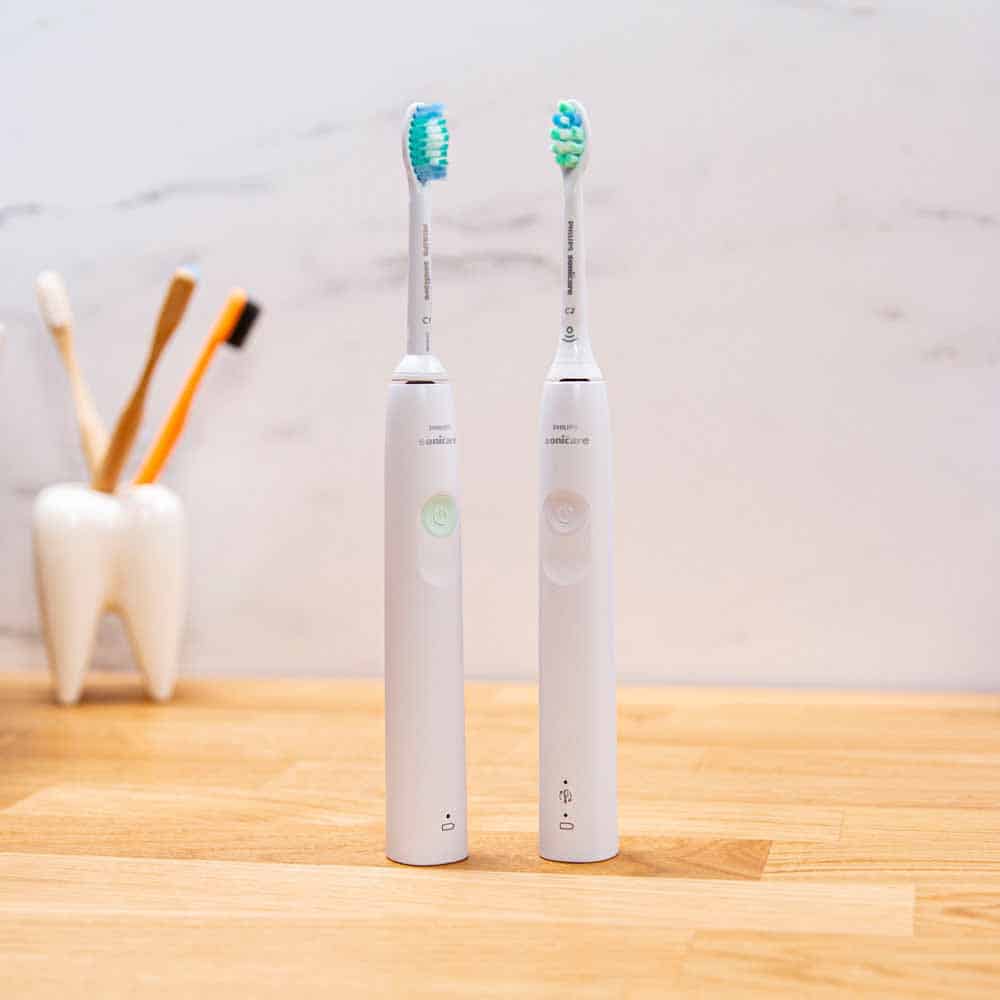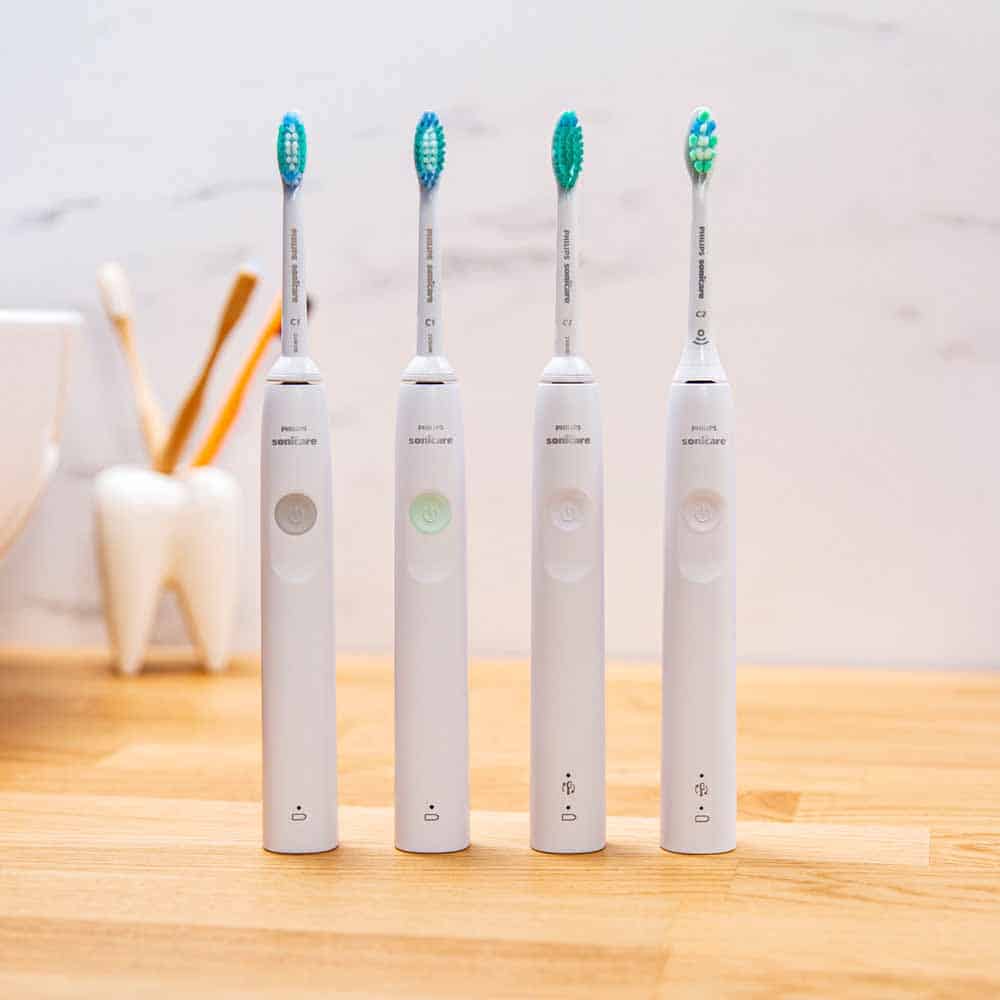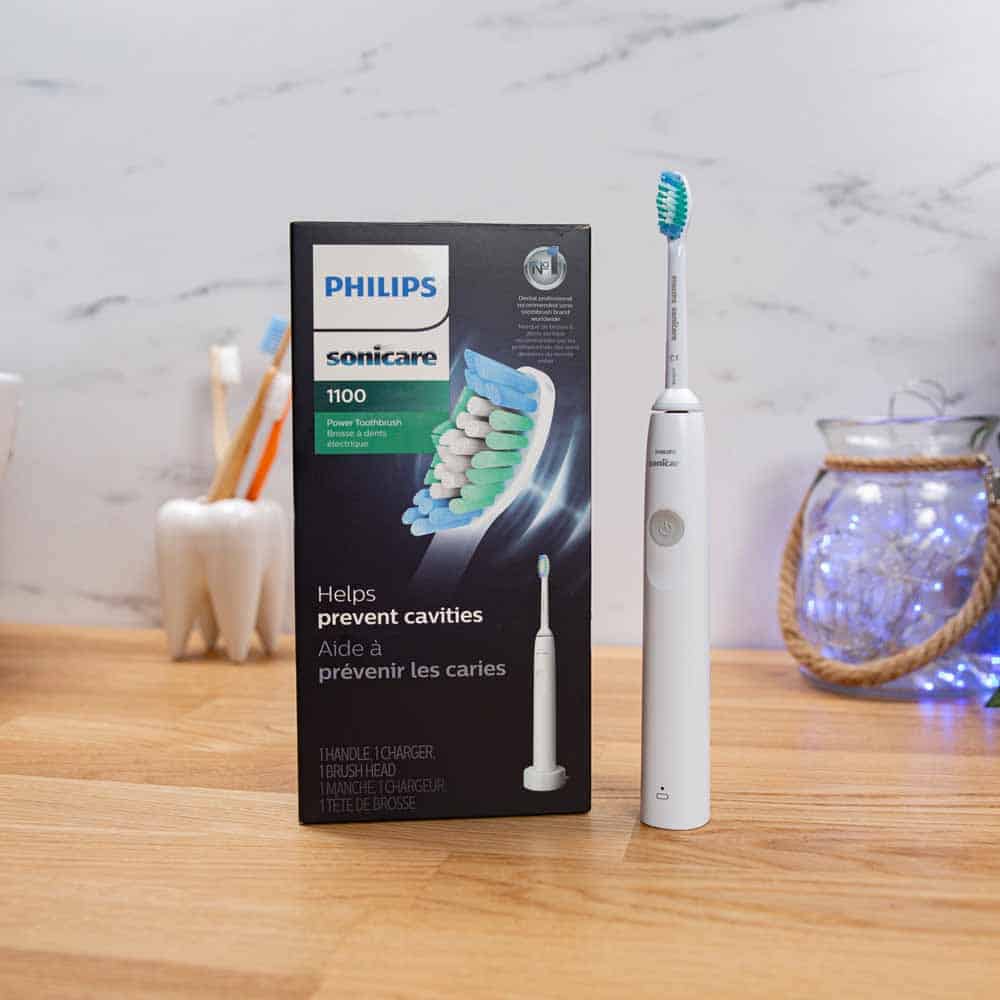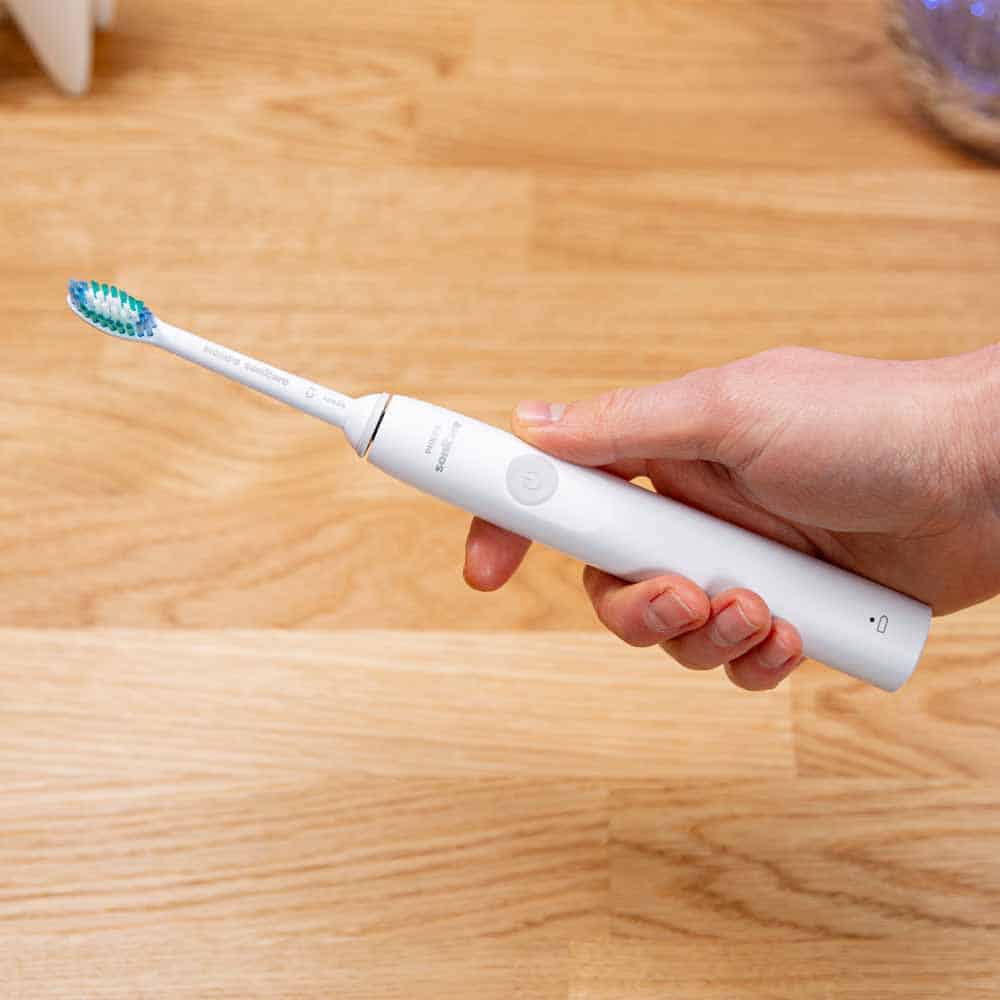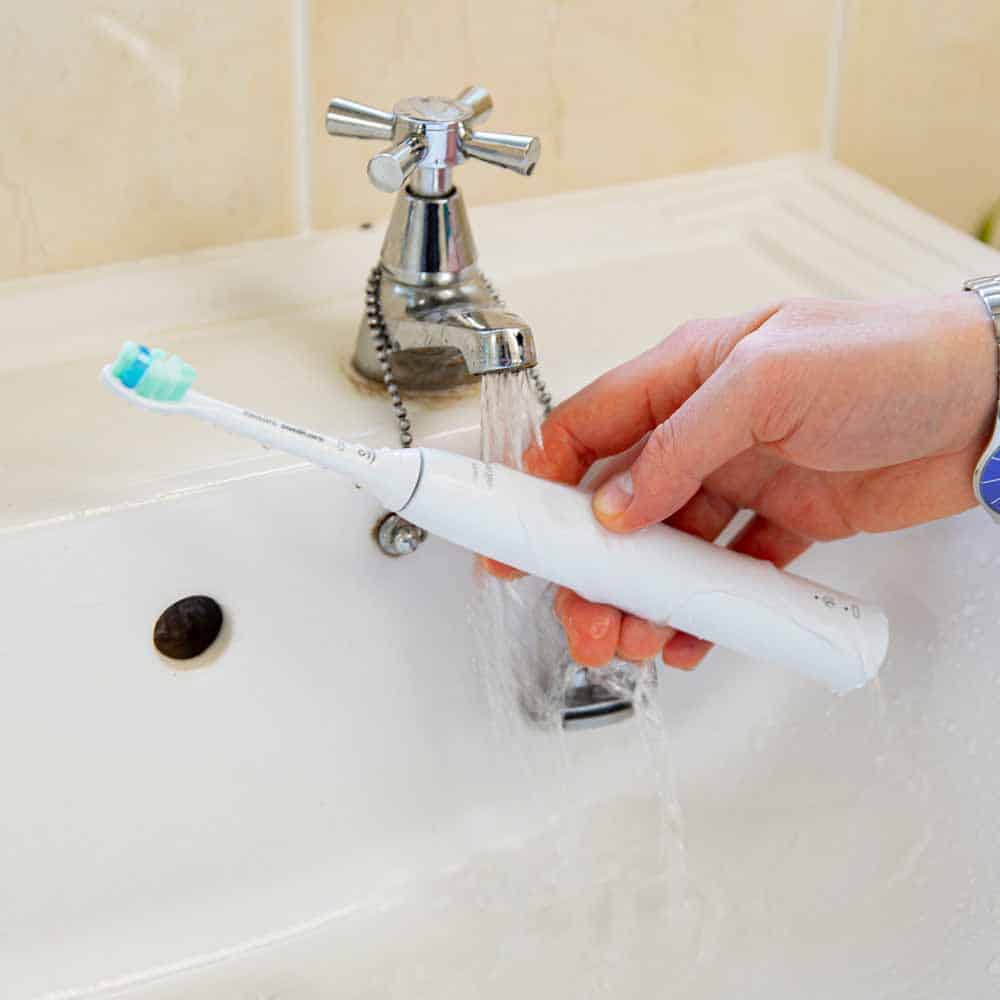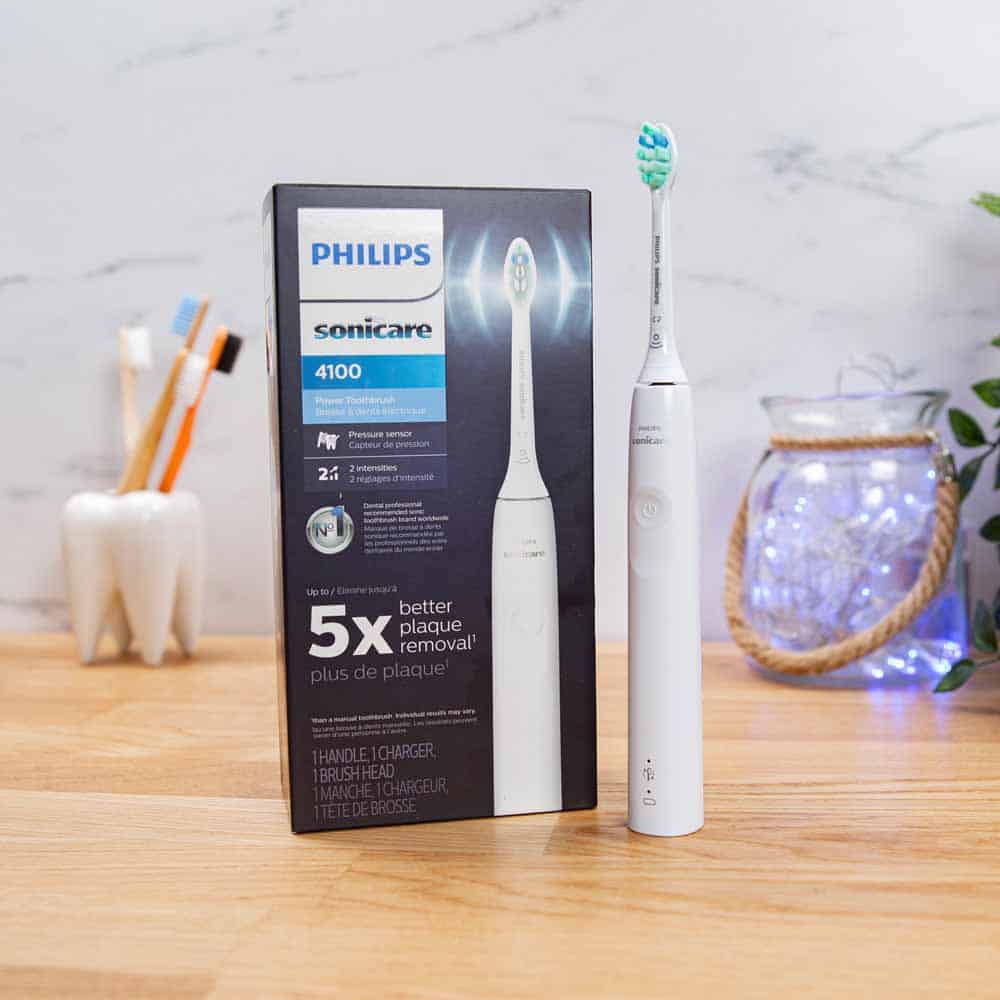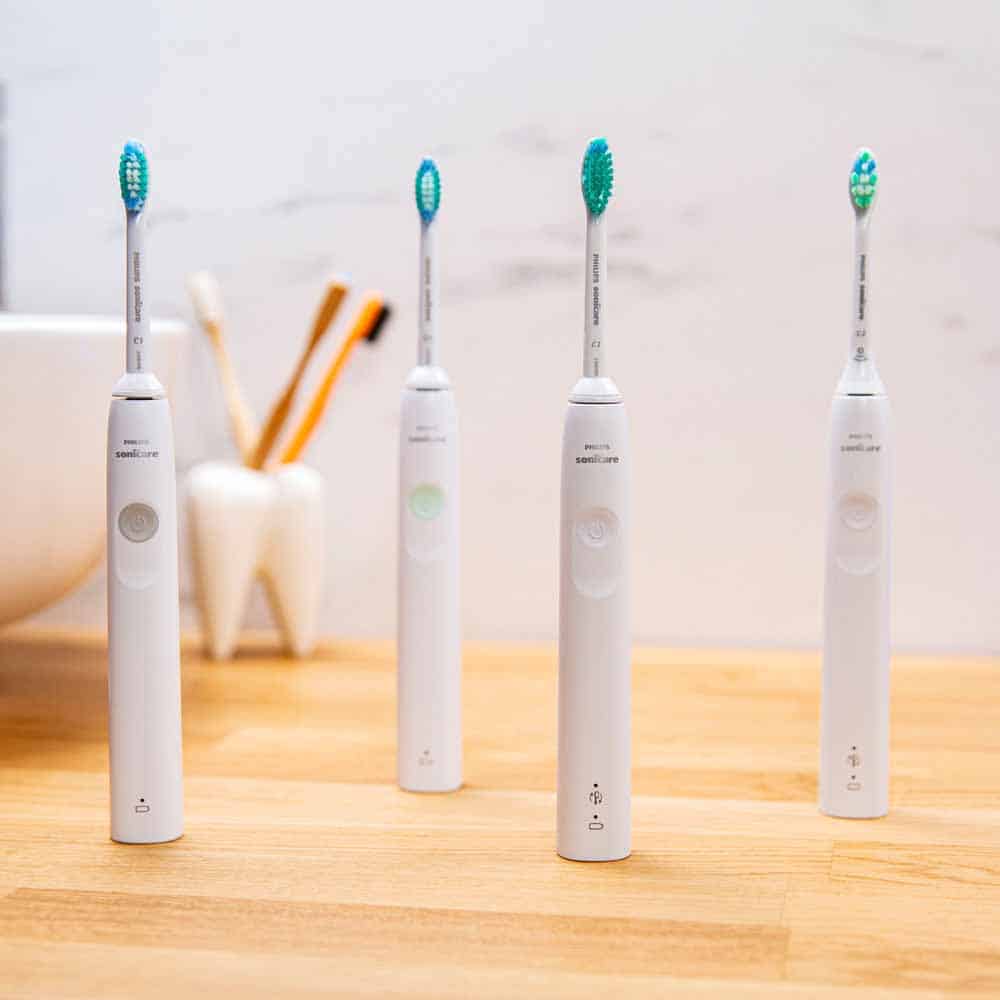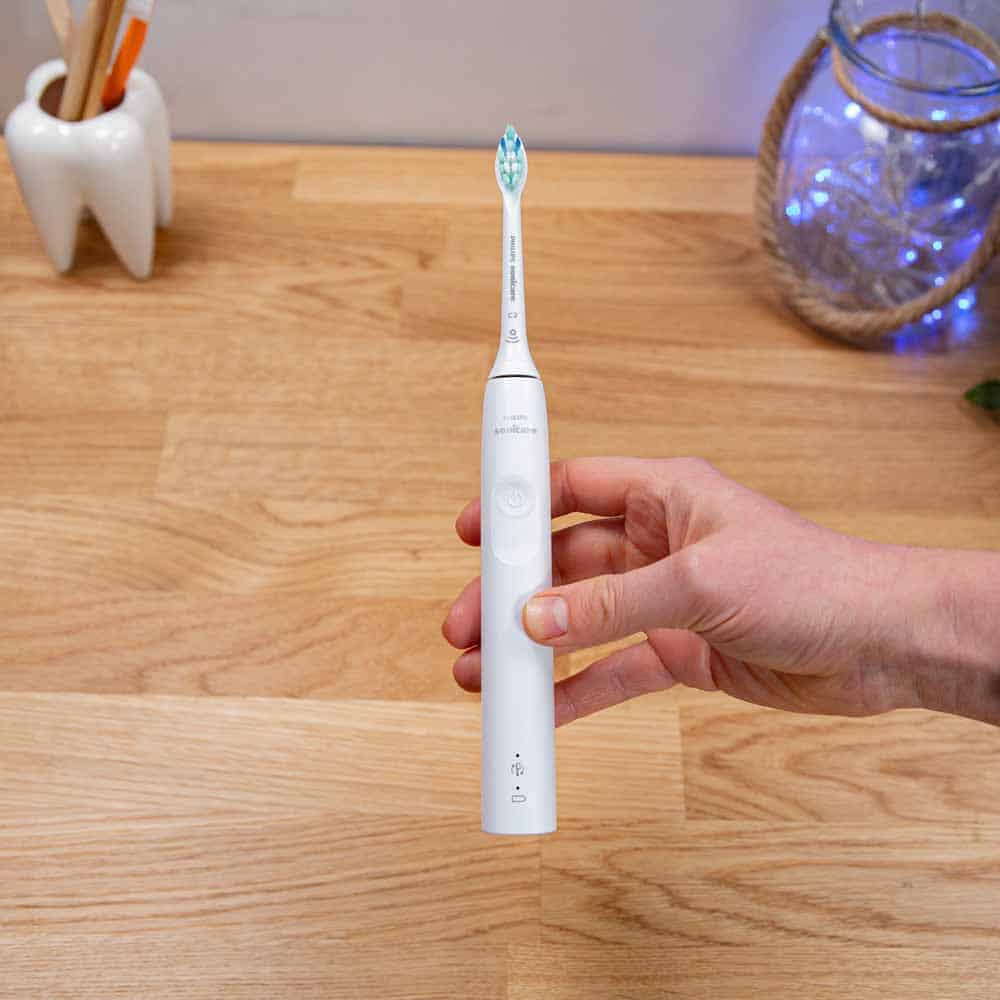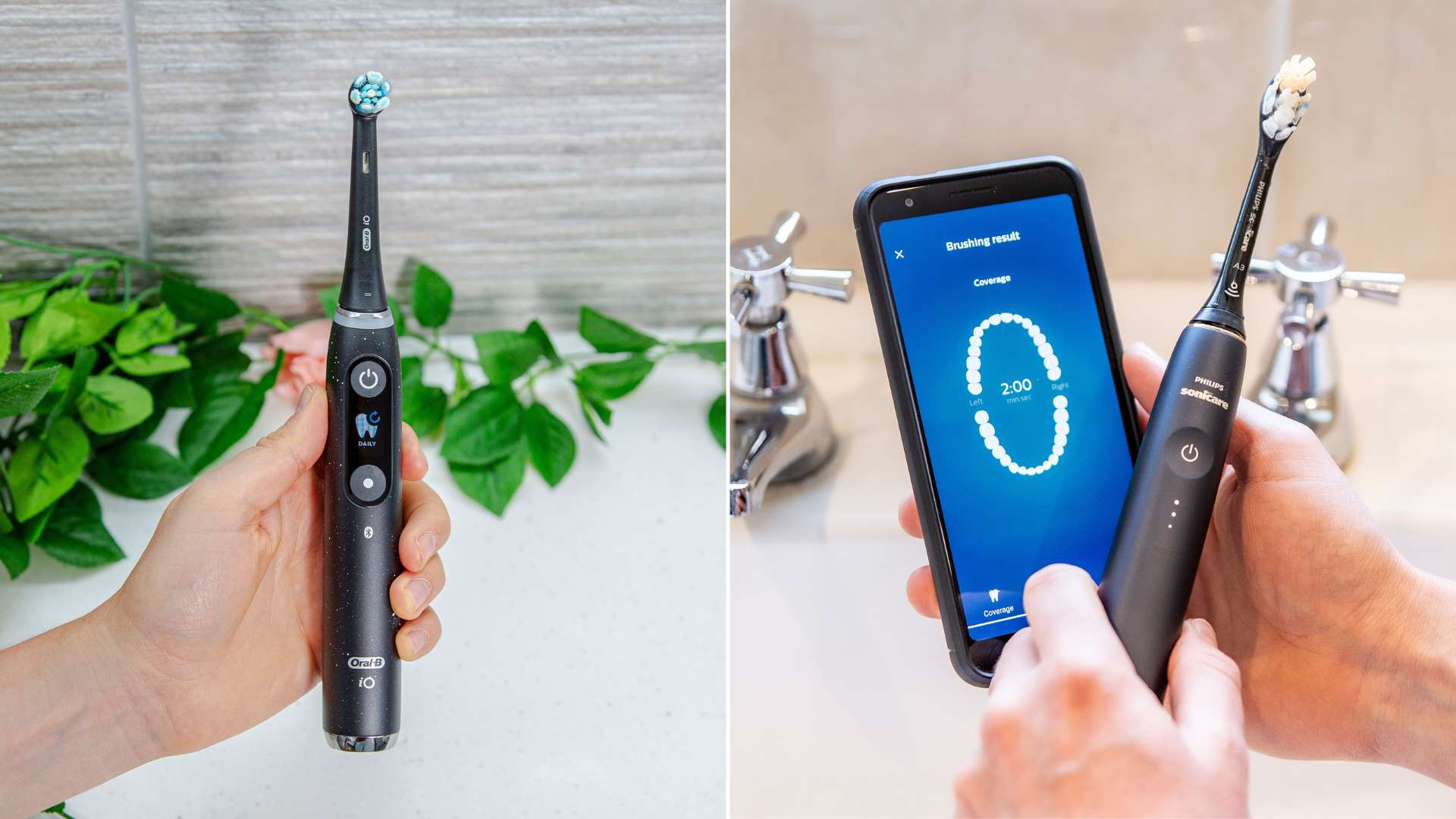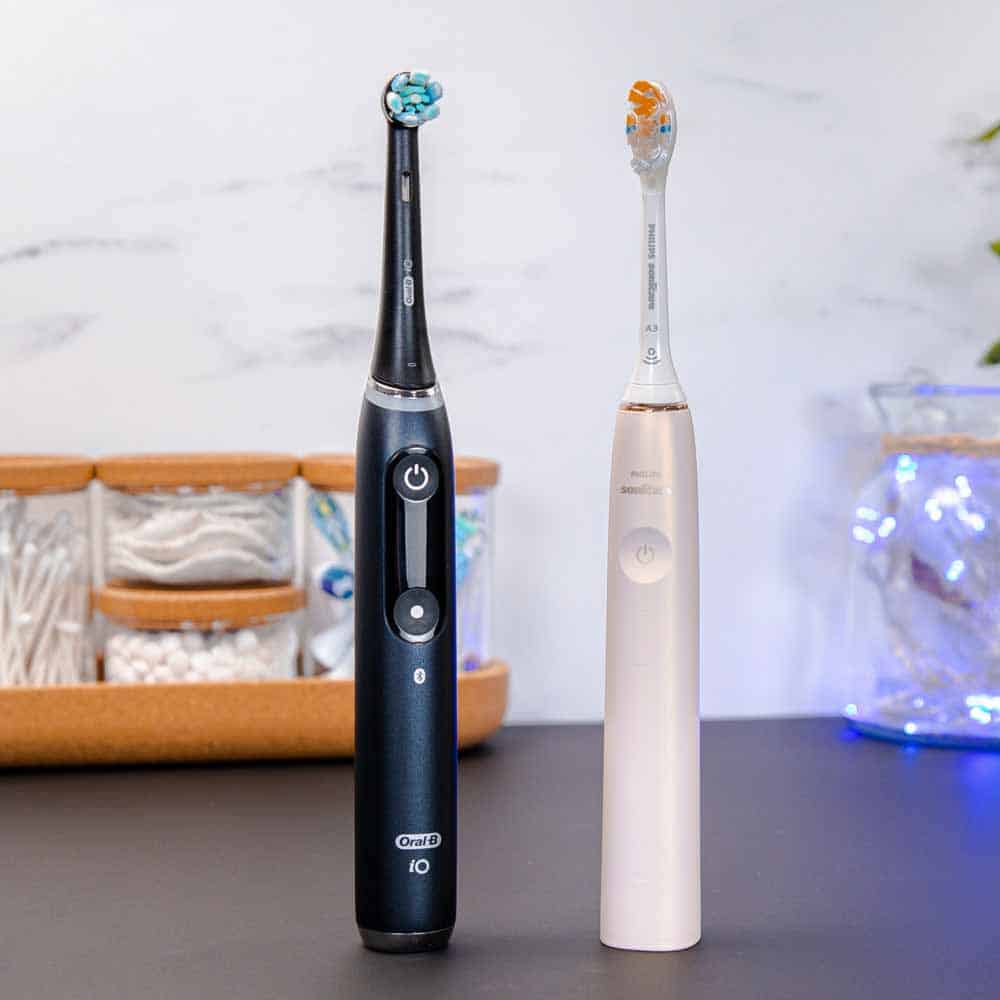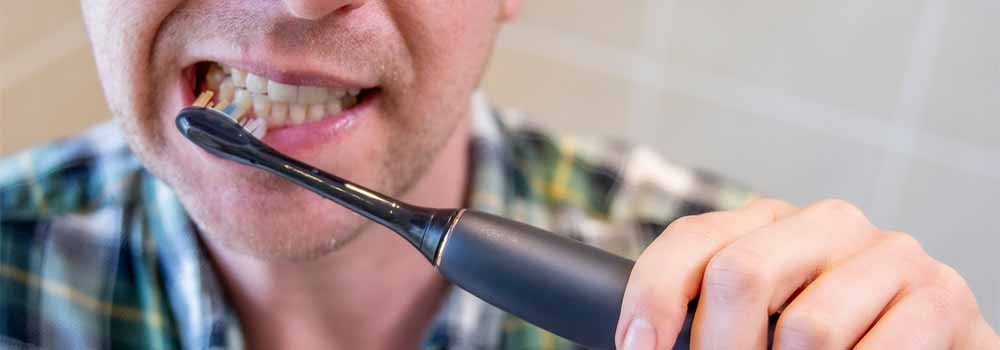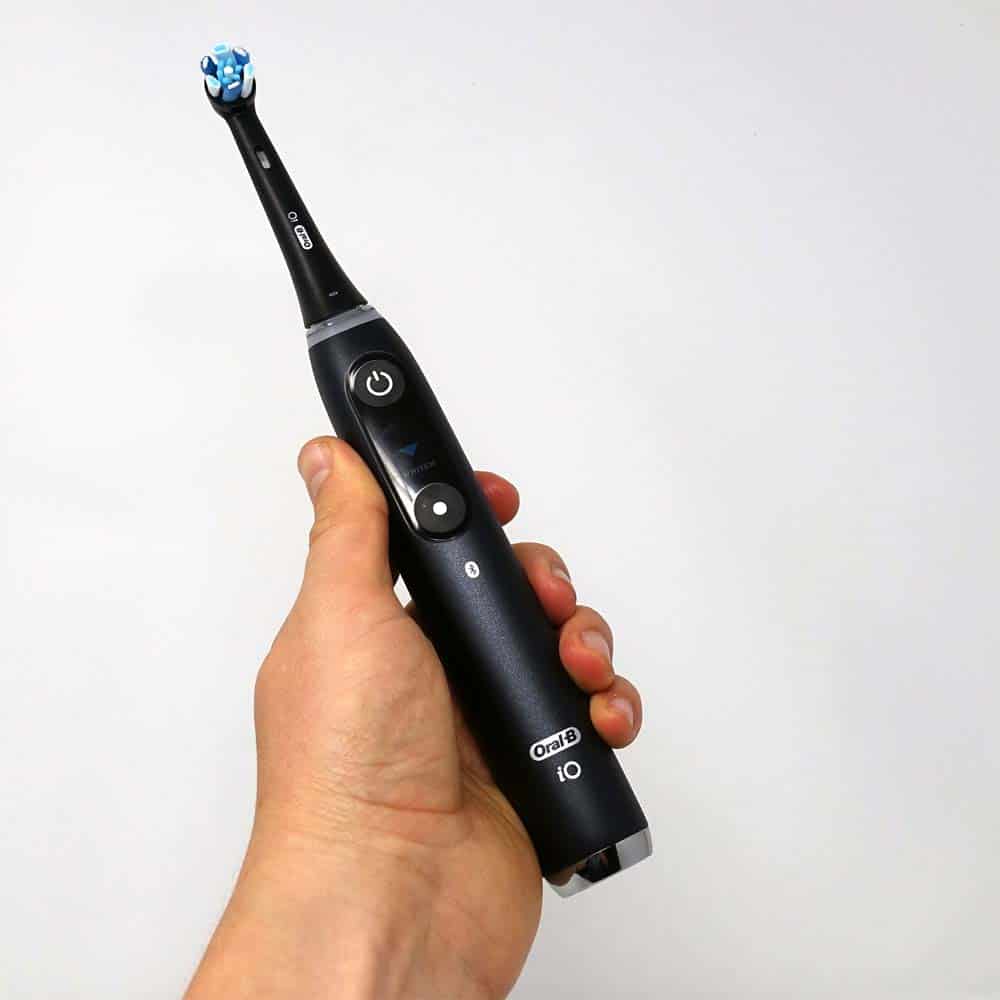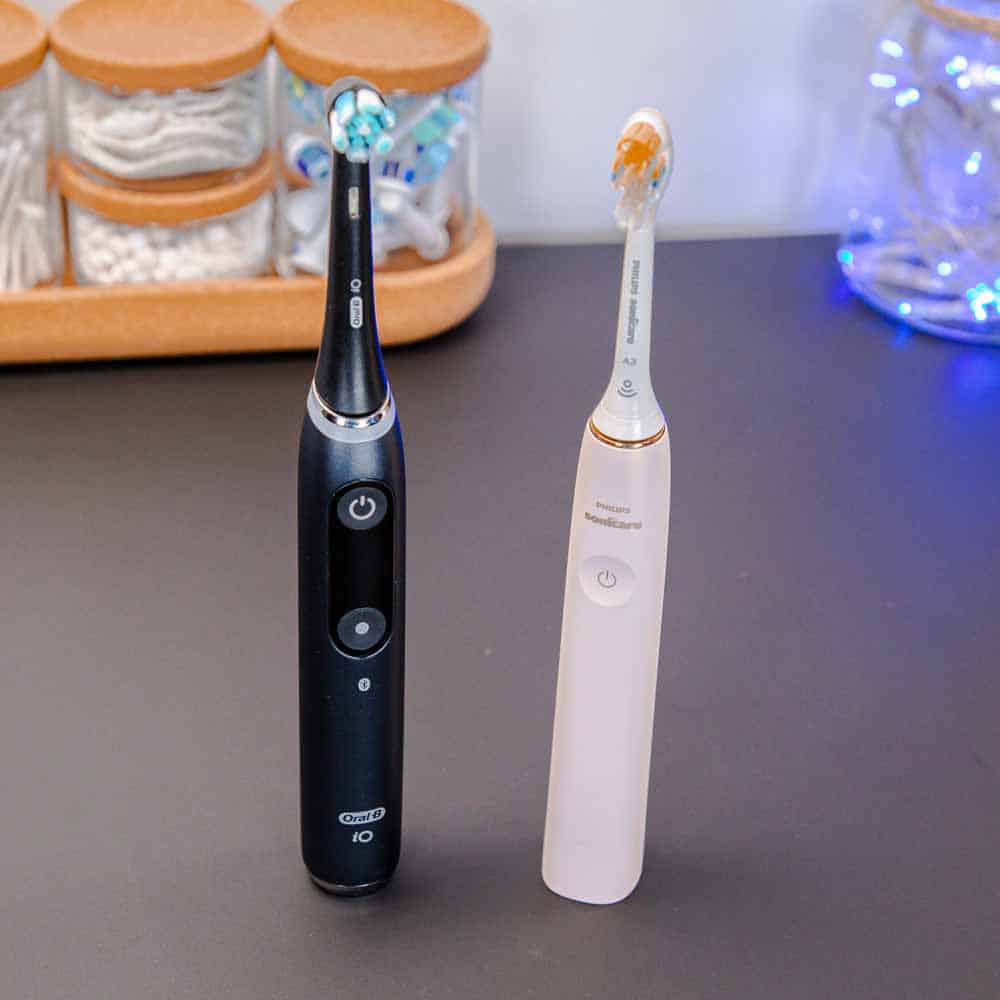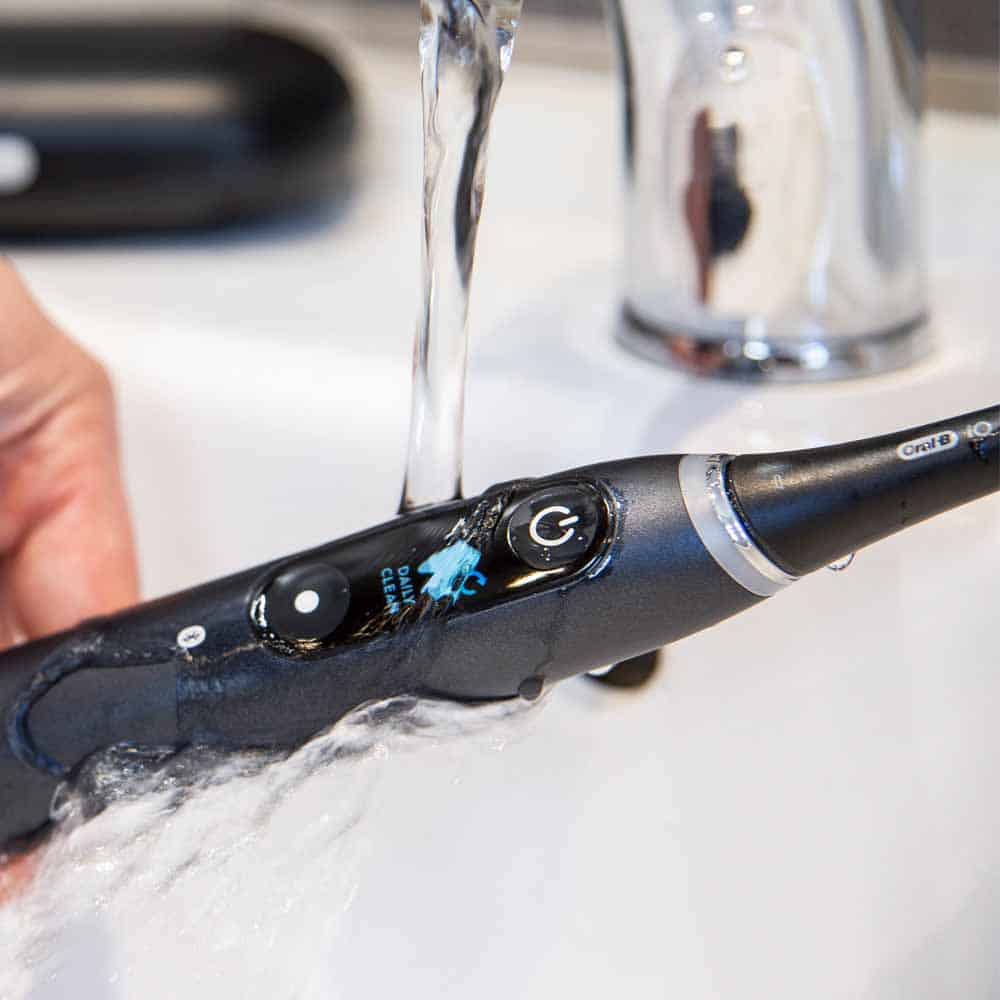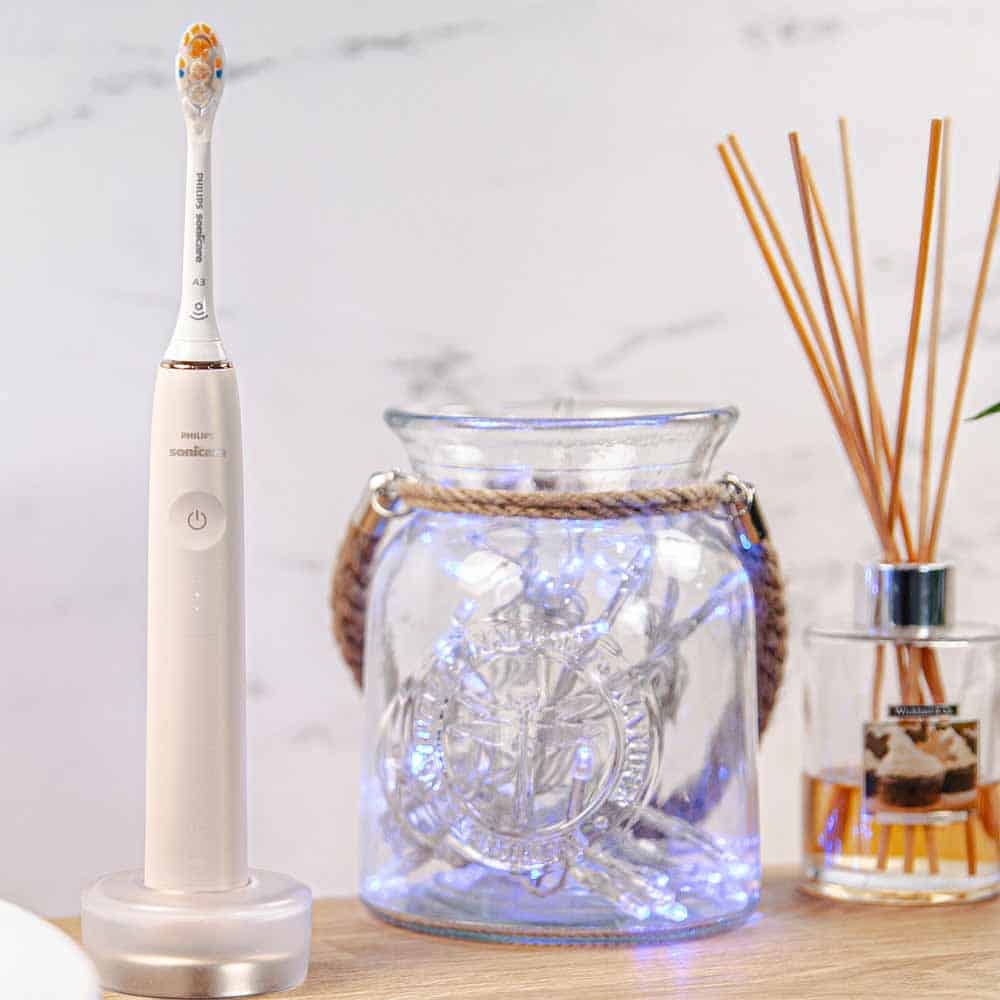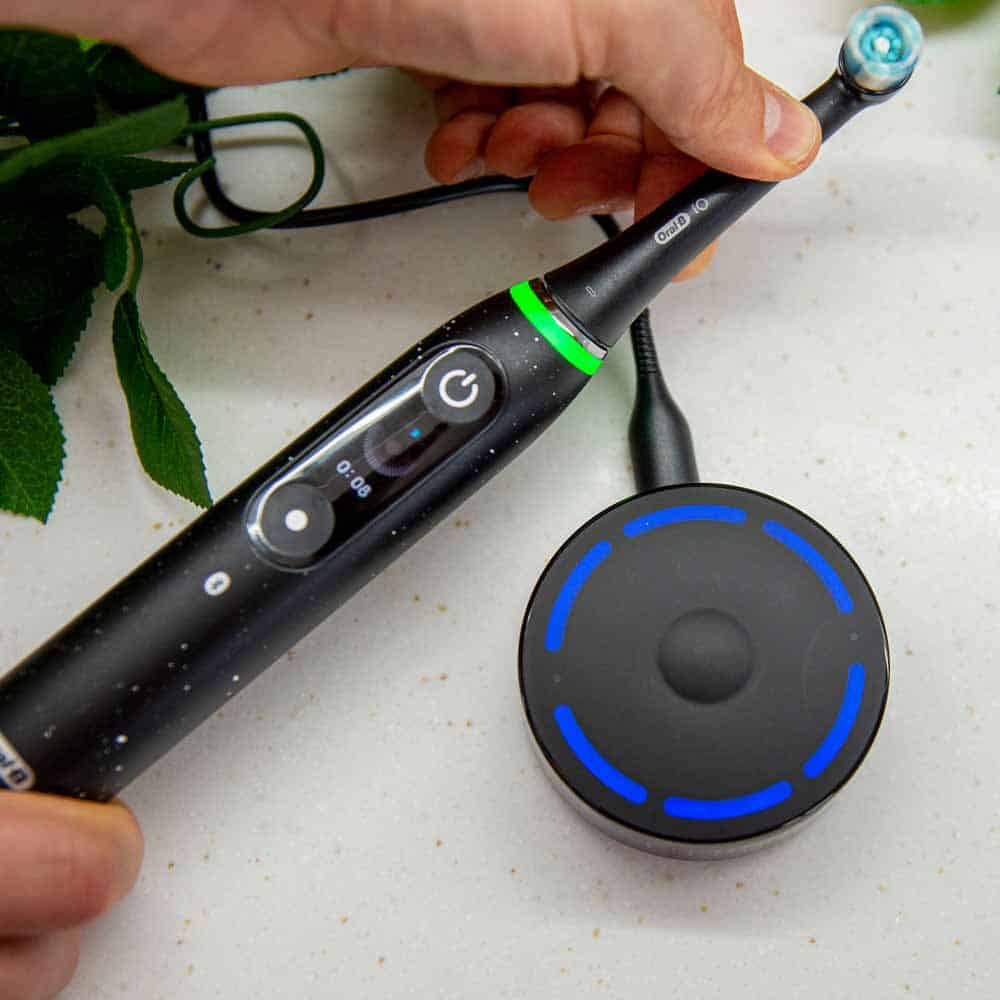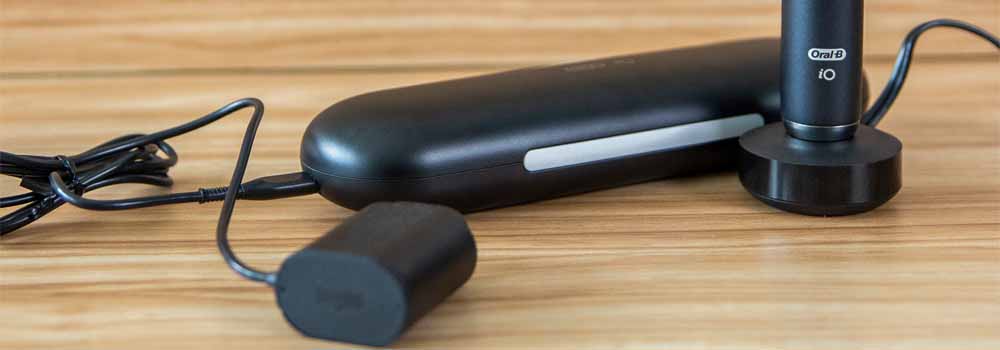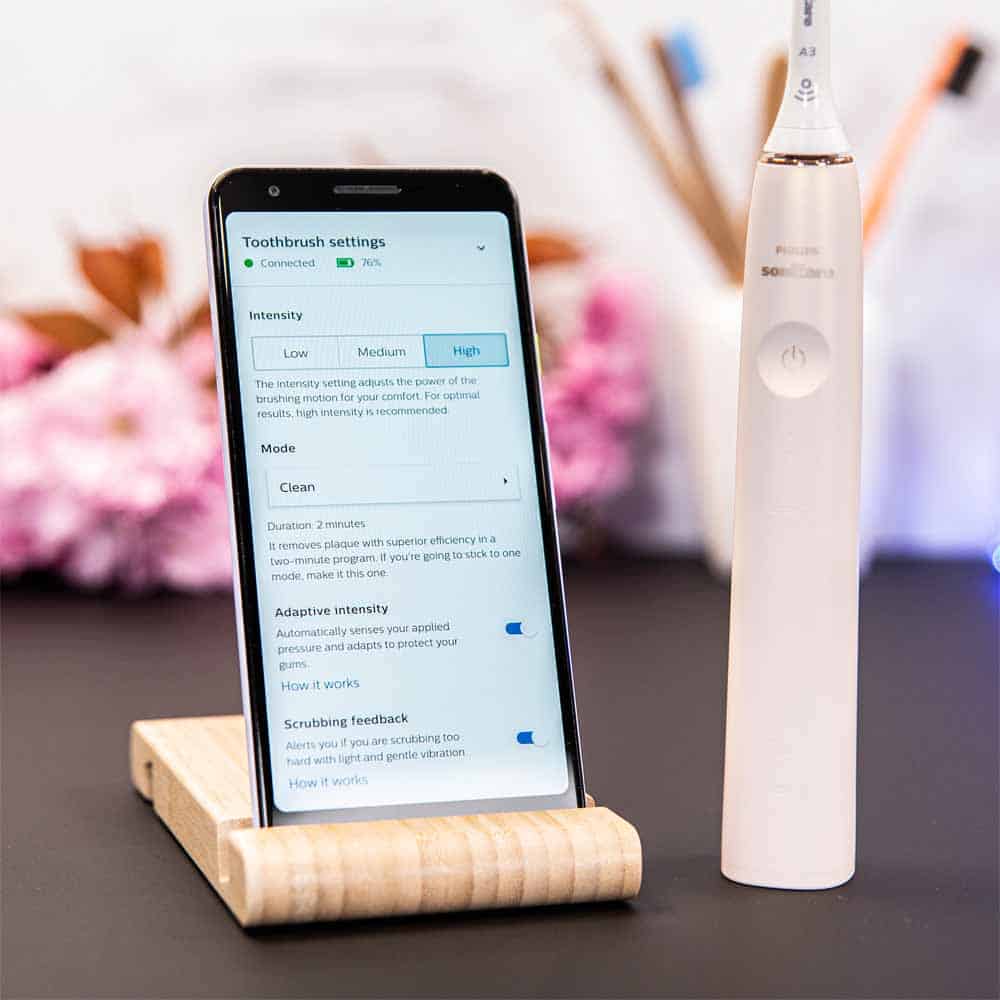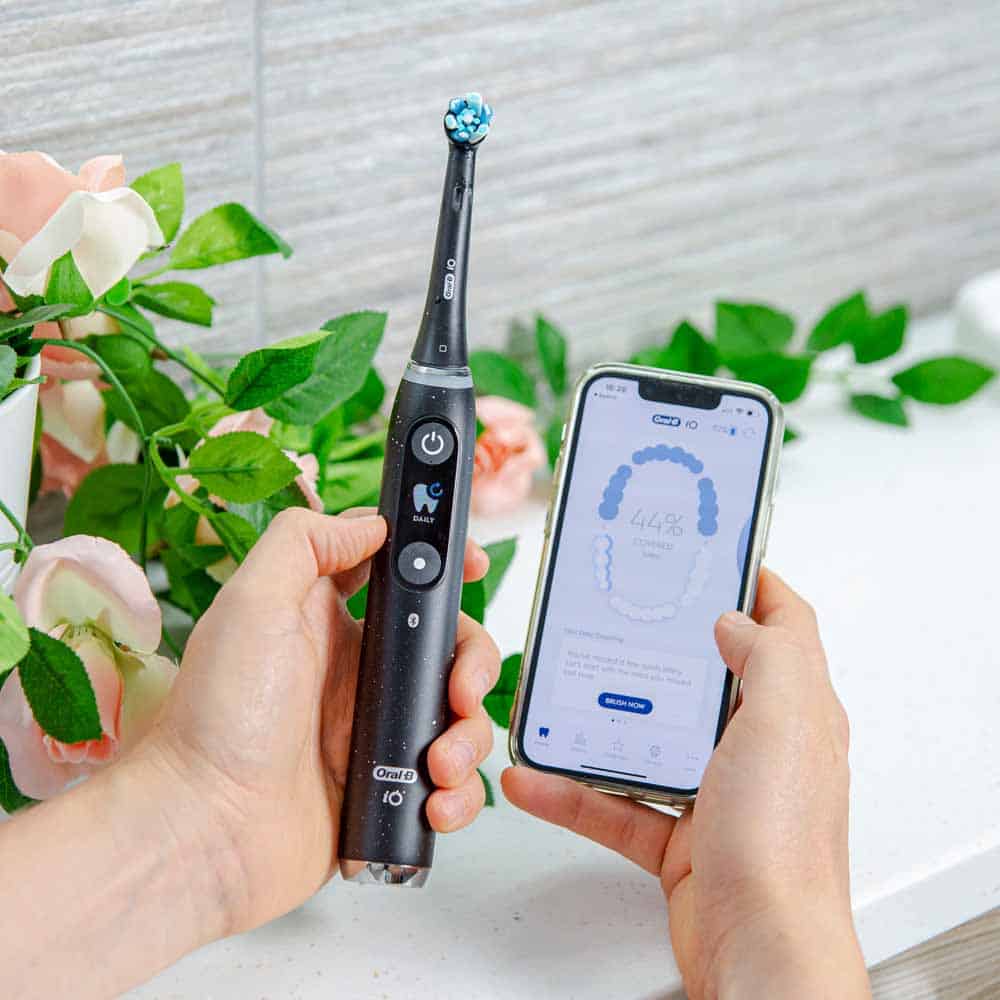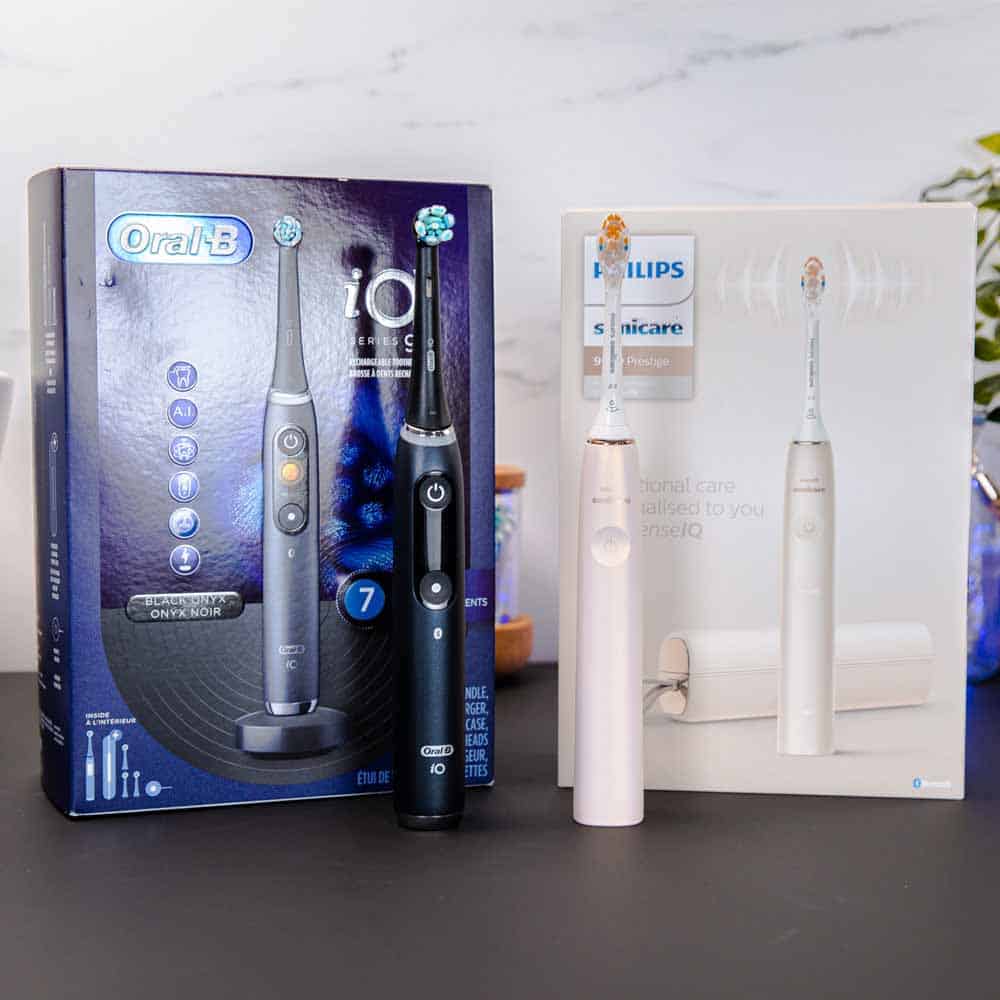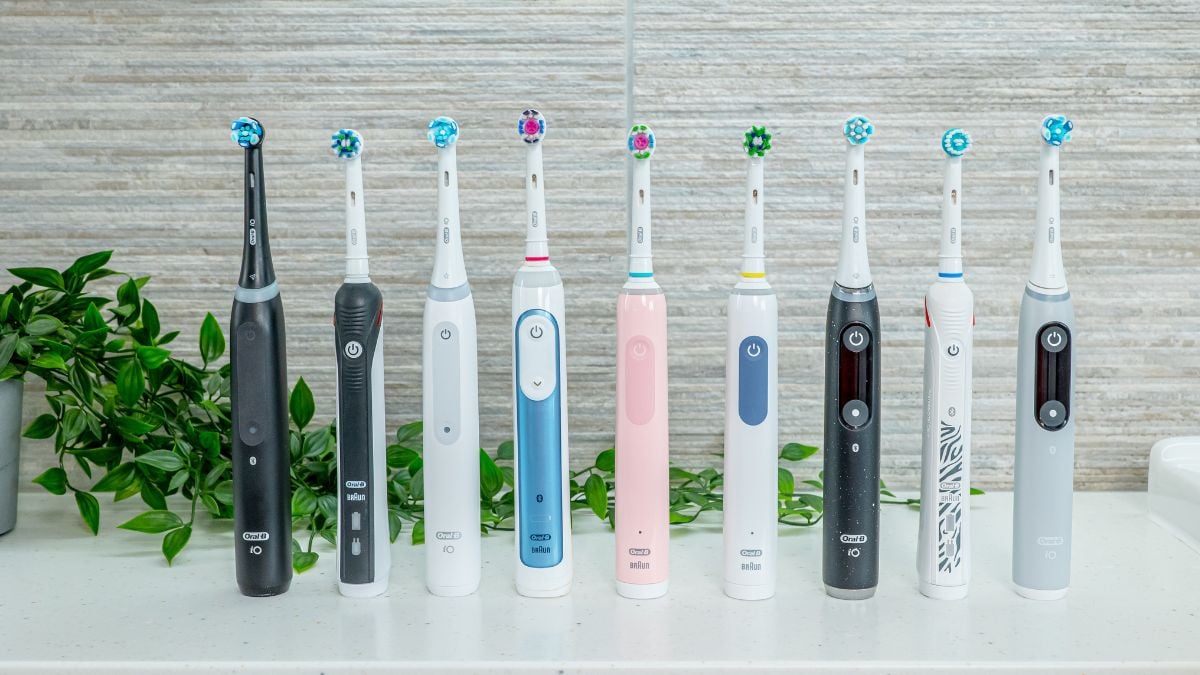
If you've landed on this page, you're probably wondering what the difference is between the various Oral-B electric toothbrushes.
Initially, it can be rather confusing, but we've included some resources below that quickly and simply explain the differences.
These recommendations are based on years of hands-on testing and a deep understanding of the Oral-B range.
Our overall Oral-B recommendation
Oral-B Smart 2000
We rate the Smart 2000 as the best Oral-B electric toothbrush, all things considered.
This is also our choice for the best electric toothbrush of all toothbrushes available today, irrespective of brand.

The Smart 2000 offers the features we regard as essential (a timer and pressure sensor) at an affordable price.
As you move up the Oral-B range, the brushes become more expensive, but they do come with additional features and accessories. We regard these as "nice-to-have" rather than essential.
Spending more or picking a premium model does not necessarily result in a better clean of the teeth. Each brush, irrespective of features still requires you to use it regularly and correctly.
This isn't to say those features aren't useful for some people. But, we have learnt that most people would rather save a bit of money, than have lots of features they may not use, making the Smart 2000 a perfect fit.
Oral-B electric toothbrush comparison chart
The comparison chart below shows the main models available from Oral-B today, along with the features and functions each offer.
You will see that the more feature-rich, and typically more expensive models are shown on the right, compared to the more cost effective models on the left.
This chart should help you pick the model most suited to you if you have particular requirements of your toothbrush.
If you need more detail on any of the brushes, read on or leave a comment.
| Cleaning Action |
| Number of cleaning modes |
| Clean |
| Sensitive |
| Gum |
| White |
| Deep Clean |
| Tongue |
| Other modes |
| Timer |
| Pacer |
| Pressure Sensor |
| Pressure Sensor Additional information |
| Display |
| Display Additional information |
| Battery life |
| Travel case included |
| Charging travel case |
| Bluetooth connectivity |
| Position tracking |
The Oral-B range explained
Within the Oral-B range are a number of sub-categories or series into which particular models fit.
Below we detail the names of each series and the key ways in which each differs.
This applies to most models, although odd models/exceptions may exist.
Vitality Series ($)
- The essential features you require and no more.
- Satisfactory, but better options exist.
- 2D cleaning action - oscillates and rotates.
- 1 cleaning mode.
- Built-in 2 minute timer.
- Up to 1 week of battery life.
- No battery status LED.
- The cheapest models.
Pro Series ($$)
- The essential features, plus a little more.
- The ideal brushes for the vast majority.
- 3D cleaning action - oscillates, rotates and pulsates. (Excludes Pro 500)
- Up to 2 cleaning modes.
- No cleaning mode labels/icons on the handle.
- Built-in 2 minute timer and 30 second pacer.
- Up to 2 weeks of battery life.
- Battery status LED on the handle.
- Mid-range brushes.
Smart Series ($$$)
- Premium handles with more features and accessories
- 3D cleaning action - oscillates, rotates and pulsates.
- Up to 5 cleaning modes.
- No cleaning mode labels/icons on the handle.
- Built-in 2 minute timer and 30 second pacer.
- Visible pressure sensor.
- Smart toothbrushes with Bluetooth connectivity. (Oral-B Smart 1500 being an exception)
- A battery life of around 2 weeks.
- Battery status LED on the handle.
- Higher mid-range prices.
Genius Series ($$$$)
- Premium handles with more features and better box contents.
- 3D cleaning action - oscillates, rotates and pulsates.
- Up to 6 personalized cleaning modes.
- Cleaning mode labels/icons on the handle (with exception of Daily Clean mode).
- Built-in 2 minute timer and 30 second pacer.
- Visible pressure sensor.
- Smart toothbrushes with Bluetooth connectivity.
- Position detection technology to track the toothbrush in the mouth.
- Artificial Intelligence (AI) for enhanced feedback on your brushing.
- A battery life of around 2 weeks.
- Battery status LED on the handle.
- The most expensive of toothbrushes.
iO Series ($$$$$)
- Top of the line handle with the most advanced toothbrush technology.
- 3D cleaning action - oscillates, rotates and micro-vibrates.
- Up to 7 personalized cleaning modes.
- Cleaning mode labels/icons shown on the display.
- Built-in 2 minute timer and 30 second pacer.
- Visible pressure sensor highlights correct and incorrect pressure.
- Smart toothbrushes with Bluetooth connectivity.
- Position detection technology to track the toothbrush in the mouth.
- 3D teeth tracking with AI for enhanced feedback on your brushing.
- Interactive display built-into the handle.
- A battery life of 2+ weeks.
- Battery life status is shown on the display.
- Magnetic charger for more convenient and quicker charging.
- The most expensive of toothbrushes.
Detailed brush vs brush comparison posts
The comparison chart above allows you to see the key differences between each model at a glance.
However, for those who require more detail, we do have a number of comprehensive written comparisons.
We test them side by side and then give our verdict on which one is best:
Model by model comparisons
Pro 300 vs 400 vs 500+
Winner: Oral-B Pro 500+

Pro 300 vs 400 vs 500+ summary
The differences between these models are relatively subtle. The most significant difference is that the Pro 300 and 400 don’t have the 30 second pacer like the Pro 500+. The pacer is a feature we recommend is present to help achieve an even clean of the teeth.
The Pro 300 has 1 brushing mode, the 400 has 2 modes and the 500+ has 3.
The Pro 300 has either Daily Clean or sensitive cleaning mode subject to the variant on sale. If supplied with a FlossAction head, the handle has Daily Clean. If supplied with a Sensitive brush head it has a sensitive cleaning mode.
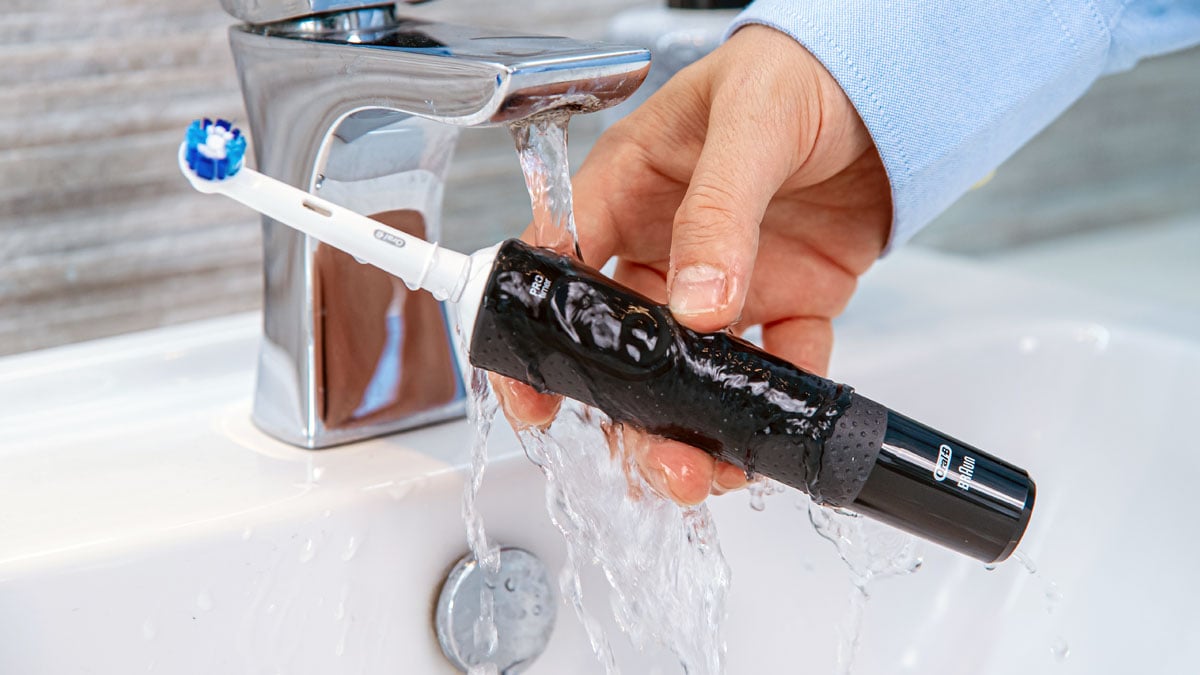
The 400 has Daily Clean and Sensitive mode, whilst the 500+ has Sensitive Plus/Super Sensitive mode too.
The Pro 300 brush handle has a grey coloured grip compared to the blue on the 400. The 500+ comes with either a black, mint (green) or Lilac (purple) grip.
Pro 1000 vs Smart 2000
Winner: Oral-B Smart 2000

Pro 1000 vs Smart 2000 summary
The Pro 1000 and Smart 2000 look very similar at first glance, but there are a couple of subtle differences.
The first, and perhaps most significant is the inclusion of a visible pressure sensor.
The visible pressure sensor is located around the neck of the Smart 2000, wrapping a full 360 degrees around the top of the handle. This will be lit with a red light when activated, making it very clear when you are applying too much pressure.
Relieve the pressure and the light will go out.
At the same time that the pressure sensor is illuminated, the motor will slow to reduce pushing too many movements to the brush head, reducing the chances of doing unnecessary damage.
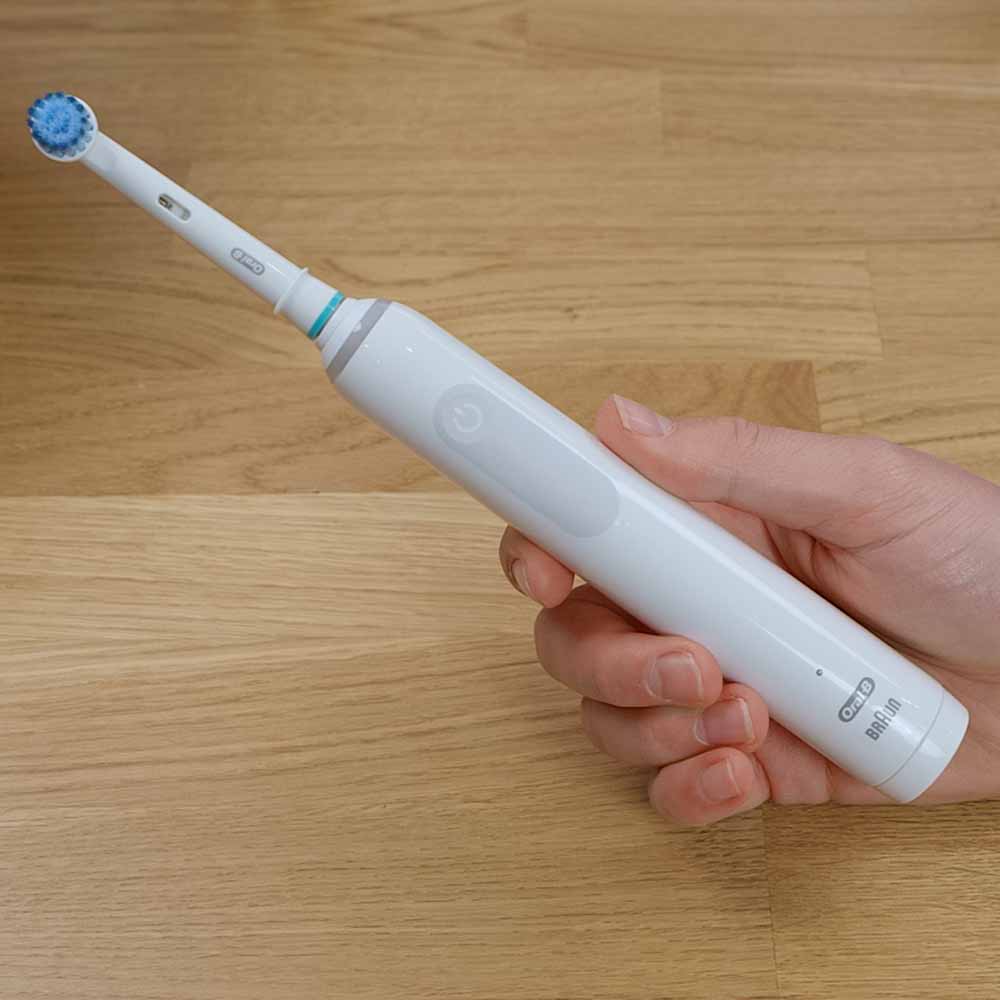
The 1000 has a pressure sensor, but it is not visible.
With the Smart 2000 you get an additional cleaning mode over the 1000. Labelled Sensitive, it is a less powerful mode that is a little more gentle on the teeth and gums, whilst still offering a thorough clean.
The brush does too come with a sensitive brush head to compliment this additional cleaning mode, rather than the default, CrossAction head.
The 2000 also benefits from a Lithium-Ion battery offering 2+ weeks of battery compared to the 10+ days of the 1000.
As a consequence of these additional features, the Smart 2000 does command a price premium but does too make it the better option.
Genius Pro 8000 vs Genius X
Winner: Oral-B Genius X

Genius Pro 8000 vs Genius X summary
Place these brushes side by side and it is almost impossible to tell the difference between each of them.
There are more similarities between these 2 brushes than there are differences.
However, despite their looks, there is 1 significant difference that separates these 2 brushes.
The Genius X has built-in sensors and Artificial Intelligence which track the movement of the brush handle when in use.
This does away with one of the biggest frustrations of the Genius Pro 8000 when it came to real-time tracking of the toothbrush in use.
With the 8000 you have to stand still in front of the camera on your smartphone for it to track, you do not have to with the X.
The tracking technology is clever on both models and it can encourage and help you achieve a better clean, but the Genius X makes the whole process much more user friendly, with a lot less hassle.
It does not mean the brush will actually clean the teeth better. In fact, both have the same motor inside and the same cleaning modes.
The trade off in many respects is the price.
The Genius X does command a premium for this technological upgrade and you get a little less in the box.
Both come with a premium travel case and a 2+ week battery life. A visible pressure sensor, 2 minute timer and pacer are built-in too.
iO Series vs Genius X
Winner: Oral-B iO Series

iO Series vs Genius X summary
The Oral-B iO has been redesigned from the ground up. From the motor to the handle, to the brush head, it has all changed.
The new magnetic driven motor is quieter and the way it works produces a cleaning sensation that is similar, but different.
Does it clean the teeth better? No, not really. Both do a great job of removing plaque.
However, there is no denying that the iO looks and feels the part.
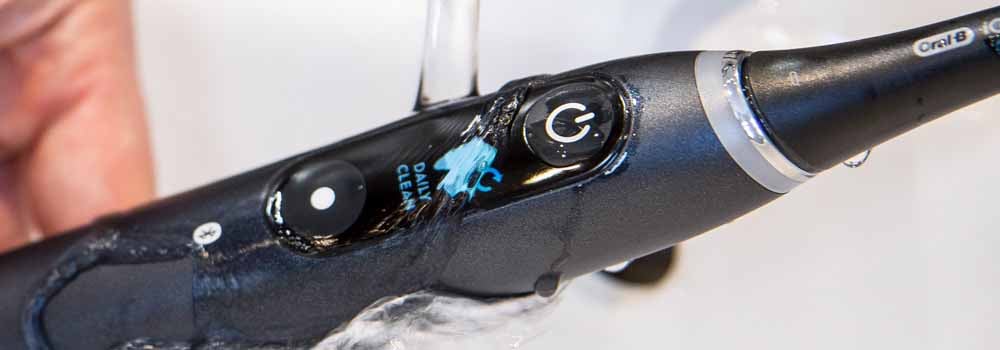
There are fewer gloss plastics and large expanses of rubber grips, with a much more exclusive looking design.
A display has been built into the handle that allows you to control certain features of the brush and gain some real-time feedback without the need for the smartphone application.
Just like the Genius X, this is a smart toothbrush, but the technology has been enhanced even further to provide a more accurate tracking and feedback loop so that you and I can brush better.
You get the standard features like the 2 minute timer, 30 second pacer, rechargeable battery and fading indicator bristles on the brush head.
You too get a visible pressure sensor, but this now lights up not only red to alert you when you brush too hard, but green too, to show you are using just the right amount of pressure.
A new magnetic charger means the brush can be recharged in as little as 3 hours, rather than the more typical 12.
It does too come with a premium travel case, similar to that of the Genius X, which allows the brush to be charged whilst inside. However, like the X, this requires a separate proprietary power adapter.
There is a great deal to like about the iO and this is without a doubt a step up for Oral-B. But, the downside is the price. It costs quite a bit more than the Genius X and does not deliver significant benefits that would be justifiable to most for the price.
Full Oral-B iO vs Genius X comparison.
Conclusion
The great number of choices you have within the Oral-B range can make it really quite difficult to decide which toothbrush is right for you.
Ultimately, all of the brushes will provide a very good clean to the teeth and gums if used correctly.
Perfecting your brushing routine, including the brushing time, technique and frequency will bring more positive benefit than any particular toothbrush.
Premium models may bring benefits for some. However, for the vast majority, the prices are prohibitive and the benefits for every dollar spent certainly reduces.
For the majority of people, myself included the Oral-B Smart 2000 is the toothbrush to go for. It offers a balance of cleaning performance and features at a price most will find affordable.
If you really do desire the absolute best, irrespective of price, then it has to be the iO Series 9.
|
Our Choice

|
Our Choice

|
|
|---|---|---|
| Electric Teeth Rating |
|
|
| Amazon | $89.97 | $296.95 |
| Walmart | - | View price |














